

Japan Sightseeing Map
- Flights and Airports
- Accommodation
- Transportation
- Internet & Phones
- Budget and money
- Japanese Food
- Visit with Kids
- Seasons: spring / summer / autumn / winter
- Weather forecast
- Time in Japan
- Holidays & Festivals
- Natural Disasters
- Customs and Duties
- Works and Closures
- September 16 -- Tsurugaoka Hachimangu (Yabusame) Festival in Kamakura
- September 16 -- Day of the elderly in Japan (Keiro no Hi - holiday)
- September 21 -- Autumn starts in Japan
- September 23 -- Autumn Equinox (Shunbun no Hi - holiday)
- From October 9 to 10 -- Hachiman Matsuri (the Autumn Takayama Festival)
- October 22 -- Jidai Matsuri Festival in Kyoto
- Tokyo : Shinjuku , Shibuya , Harajuku , Asakusa , Akihabara , Odaiba , Ikebukuro , Ueno , Roppongi , Chiyoda , Ryogoku ...
- Around Tokyo: Kamakura , Nikko , Hakone , Mount Fuji , Mount Takao , Yokohama ...
- Kansai: Kyoto , Nara , Osaka , Mount Koya , Himeji , Kobe , Kinosaki , Kumano Kodo , Ise ...
- Japanese Alps: Kanazawa , Matsumoto , Takayama , Shirakawa-go , Nakasendo ...
- West: Hiroshima , Miyajima , Shikoku , Onomichi , Naoshima , Izumo , Kurashiki , Matsue ...
- South: Kyushu , Okinawa , Yakushima ...
- North: Hokkaido , Tohoku ...

- Temples and Shrines
- Gardens and Parks
- Hiking and Trekking
- Observation Decks
- Public Baths (Onsen and Sento)
- Festivals (Matsuri)
- Amusement Parks
- Visit on a Budget / Luxury

Keikaku is a travel agency specialist of Japan and providing different kind of services:
- Japan Rail Pass
- English speaking Guides
- Pocket Wi-fi
- Japan Nightlife
- Working in Japan
- Religion and Spirituality
- Arts and History
- Movies / Animated Movies
- Japanese Music
- Studio Ghibli
- Photos / Videos
- Weird Japan
- Translations
- Kana & Kanji
- Japanese Swear Words
- Honorific Suffixes (san, kun, chan...)
- Introducing yourself
- Thank you / Apologize
- Count / Say Your Age
- Say the Date / Tell the Time
- Happy birthday
- Enjoy Your Meal
- Writing your name

Kanas are the much-needed basic characters of written Japanese language. Memorize them at a fast pace with our method.

Ask any kind of question and share your knowledge about Japan in Kanpai’s community space, our Q&A section Kotaete.

Isshoni means "together" in Japanese: share your trip details (dates, places you would like to visit) and find companions to travel in Japan.

Create your Kanpai account to manage your profile and view your participation history (questions, answers).

21 Top-Rated Tourist Attractions in Japan
Written by Meagan Drillinger Updated Mar 20, 2024
Japan is an enigma. It's the perfect juxtaposition of centuries-old traditions overlapped with lightning speed, cutting-edge technology. Many first-time visitors to Japan are often surprised to learn that, as one of the world's most advanced industrialized nations, this relatively small Asian country also boasts a rich and fascinating history that dates back thousands of years.
Indeed, long before many of Europe's most spectacular cathedrals were built, Japan's Shinto and Buddhist temples were already well-established and drawing pilgrims and patrons to their elaborate designs and décor. At the same time, the country was already perfecting the skills and trades that would set it on the path to riches, from fine porcelains and ceramics to textiles such as silk.
Much of this rich tradition has, despite wars and natural devastation, been preserved (or rebuilt), and a visit to Japan is a memorable adventure. Boasting an endless list of top attractions, fun things to do, and points of interest to explore, a vacation in Japan is certainly a great investment of time and money.
Discover the best places to visit in the country with our list of the top tourist attractions in Japan.
Imperial Tokyo
Hiroshima peace memorial park, historic kyoto, the island shrine of itsukushima, miyajima, temple city: historic nara, osaka castle, chūbu-sangaku national park and the japanese alps, the atsuta shrine, nagoya, fukuoka castle ruins and the city's ancient festivals, sapporo, hokkaido, fushimi inari-taisha shrine, kyoto, koyasan okunoin, kiyomizu-dera, kyoto, shinjuku gyoen national garden, tokyo, hakone open-air museum, hakone, naritasan shinsho-ji, narita, okinawa churaumi aquarium, matsumoto castle, nagano, arashiyama monkey park, kyoto, kenrokuen garden, kanazawa, tips for making the most of your visit to japan, best time to visit japan.

Without a doubt Japan's most recognizable landmark, majestic Mount Fuji (Fuji-san) is also the country's highest mountain peak. Towering 3,776 meters over an otherwise largely flat landscape to the south and east, this majestic and fabled mountain is tall enough to be seen from Tokyo, more than 100 kilometers away.
Mount Fuji has for centuries been celebrated in art and literature and is now considered so important an icon that UNESCO recognized its world cultural significance in 2013. Part of the Fuji-Hakone-Izu National Park , Mount Fuji is climbed by more than a million people each summer as an act of pilgrimage, which culminates in watching the sunrise from its summit.
While some still choose to begin their climb from the base, the majority of climbers now start from above the halfway mark, at the 5th Station, resulting in a more manageable six-or-so-hour ascent. Those who do attempt the complete climb are advised to depart in the afternoon, breaking up the climb with an overnight stop at one of the "Mountain Huts" designed for this very purpose. An early start the next day gets you to the top for the sunrise.
Of course, for many, simply viewing the mountain from the distance, or from the comfort of a speeding train, is enough to say "been there, done that."
- Read More: Exploring Mount Fuji: A Visitor's Guide

Tokyo's most famous landmark, the Imperial Palace with its beautiful 17th-century parks surrounded by walls and moats, is a must-see when visiting the nation's capital. Don't be put off by the fact that the majority of the palace is closed to the public (it's still in use by the Imperial family), as there is still enough to see simply by strolling the grounds.
In addition to the many fine views of the palace from numerous points in the surrounding parkland, visitors are permitted into the East Higashi-Gyoen Garden and other areas that are opened to the public as part of an organized tour. One of the most romantic views is of the famous Nijubashi Bridge , or "double bridge," so named for its watery reflection.
Another one of the must-sees for tourists visiting Tokyo is the famous Ginza shopping district. This always bustling area is home to the Kabuki-za Theatre with its Kabuki performances, as well as the Shimbashi Enbujo Theatre with its traditional Azuma-odori dances and Bunraku performances.

While little needs to be said here of the horrors of the atomic bombing of Hiroshima in August 1945, much can be said of the incredible efforts this vibrant city has made to commemorate the many victims of the world's first nuclear attack. Perhaps even more importantly, Hiroshima has become a symbol of lasting peace.
Visited by more than a million people each year, many from overseas, Hiroshima Peace Memorial Park (Hiroshima Heiwa Kinen Kōen) lies at the epicenter of the atomic blast in what was once a bustling part of the city. Here you'll find a number of important monuments, memorials, and museums relating to the events of that fateful day.
In addition to the grounds and gardens with their colorful cherry blossoms, the park is where you'll find the Peace Memorial Museum, with its numerous exhibits dealing with the issue of world peace. It's also where you'll find the Memorial Cenotaph and the Flame of Peace , as well as the Atom Bomb Dome , the ruins of an administrative building that lay at the center of the explosion.
- Read More: Top-Rated Tourist Attractions in Hiroshima

One of Japan's most visited cities, lovely Kyoto – one of the few cities in the country to be spared the devastation of WWII – attracts more than 10 million visitors annually. Most of them are here to explore Kyoto's fine old streets and architecture, much of it unchanged since the Imperial family took up residence here more than 1,000 years ago.
Even then, the city was Japan's most important cultural center. This legacy, in fact, continues to this day with its many museums and art galleries, each bursting with important sculptures, paintings, and other art forms.
Highlights of Kyoto's Buddhist-influenced architecture include its many well-preserved temples, 30 of which are still in use, and important structures such as the 14th-century Golden Pavilion (Kinkaku-ji), famous for its exquisite gold-leaf-clad exterior.
Be sure to also visit Nijo Castle , a 17th-century fortress that has retained its original walls, towers, and moat. Also worth seeing are the castle's beautiful gates, along with its palace with fine interior décor.
Another landmark to visit is the original Kyoto Imperial Palace (Kyoto-gosho ) . Built in AD 794, it's one of the city's most visited historic sites.
Finally, no visit to Kyoto is complete without spending time exploring the Arashiyama Bamboo Grove . This beautiful area of tall bamboo is just a few minutes' walk from the town center.
- Read More: Top-Rated Tourist Attractions in Kyoto

Just a short ferry ride from mainland Hiroshima is the island of Miyajima , famous the world over as Japan's Shrine Island. Covering an area of 30 square kilometers in Hiroshima Bay, Miyajima is best known as the home of the Itsukushima Shrine, a Shinto temple dedicated to the Princess daughters of the wind god Susanoo.
Dating from the eighth century, the majority of the shrine's buildings rise out of the waters of a small bay supported only by piles. The effect at high tide is simply stunning, making these structures - including the famous Great Floating Gate (O-Torii) - appear as if they're floating on water.
Linked together by walkways and bridges, it's a fascinating place to explore, in particular its larger halls. These include the exquisite Honden (Main Hall), the Offerings Hall (Heiden), the Prayer Hall (Haiden), and the Hall of a Thousand Mats (Senjokaku).
Another notable feature is the shrine's stage, where visitors are entertained with traditional dances and musical performances. Also worth exploring are the island's exquisite grounds and gardens, home to wild deer and numerous bird colonies.
Please note: You can expect some interruptions and inconvenience from now until 2022 due to major renovations taking place at this historic site.

For centuries the hub of Japanese culture, the lovely unspoiled city of Nara is home to a large number of historic buildings, along with important national treasures and works of art.
In addition to its many historic streets, the city boasts numerous important old temples. These includ the magnificent seventh-century Kofuku-ji Temple , perhaps the best known of the Seven Great Temples of Nara; and the splendid eighth-century Todai-ji (Great East Temple), famous for its huge bronze statue of the Great Buddha (Daibutsu), cast here in AD 749.
Also of interest in Todai-ji are its Great South Gate (Nandaimon). This spectacular two-story structure is borne on 18 columns, with two Nio statues standing eight meters tall, and it guards the temple entrance. Also of note here is the Hall of the Great Buddha, the world's largest timber building.
- Read More: Top-Rated Tourist Attractions in Nara

Built in 1586 by famous Japanese warrior and politician Toyotomi Hideyoshi , Osaka Castle (Ōsaka-jō) was at the time the largest and most important fortress in the country. Although destroyed and rebuilt a number of times since, the present structure, built in 1931, remains true to the original.
Highlights of a visit include the huge five-story, 42-meter-tall main tower. Built on an imposing 14-meter-tall stone base, the tower is home to a number of displays detailing the history of the castle and the city. Be sure to visit the top floor for its superb views over Osaka, an especially attractive sight as the sun sets.
Also of interest in Osaka Castle Park is the Hokoku Shrine , while Osaka's best-known temple, Shitennō-ji , is also worth visiting and dates back to AD 59. Notable as Japan's first Buddhist temple, this lovely shrine features a five-story pagoda along with a number of other exquisitely decorated buildings. Among them are the Golden Pavilion (Kondō), with its fine statues and paintings; the Lecture Hall (Kōdō); and a lovely covered corridor linking three of the site's gates.
- Read More: Top-Rated Tourist Attractions in Osaka

Japan boasts a number of outstanding areas of natural beauty, many of them designated as national parks or, in some cases, UNESCO World Heritage Sites. One of the country's most spectacular of these is Chūbu-Sangaku National Park in the center of Honshu. Located in the park's northern and central regions is the group of mountains collectively referred to as the Hida Mountains , or Japanese Alps.
This region contains some of the highest peaks in the country, including Hotaka at 3,190 meters, and Yari at 3,180 meters. Similar in many ways to the Alps of Central Europe - both in the character of the landscape and in its abundance of snow in winter - the Japanese Alps attract large numbers of walkers and climbers in summer and skiers in winter.
Of particular interest is the park's abundance of flora and fauna, including the rare ptarmigan and mountain antelopes found at higher altitudes. The park's many hot springs also draw visitors and led to the development of various spas and holiday resorts, the best known being Kamikōchi .

The Atsuta Shrine, in the heart of the city of Nagoya, is the most important Shinto shrine in Japan, and attracts more than five million visitors each year. Established in the first century, this religious site is famous for its preserved Imperial insignia, the "grass-mowing sword" (kusanagi-no-tsurugi), one of only three in the country.
Also of interest are its principal shrine, Hongu, surrounded by an enclosing wall, and the treasury with its numerous works of art, including old and modern paintings, ceramics, jewelry, and traditional masks. While in Nagoya, be sure to also visit Nagoya Castle . This splendid moated complex was built in 1612 and boasts a 48-meter-high main tower that is famous for its two gilded dolphins (shachi). It's also a popular place to visit for its museum, containing art treasures from the former palace, and its spectacular views over the city and the Nobi Plain.
- Read More: Top-Rated Tourist Attractions in Nagoya

The ruins of the once-grand Fukuoka Castle (Fukuoka-jō), built in the early 1600s, punctuate the middle of Maizuru Park. The castle was once a fine example of the prolific and majestic hilltop homes preferred by Shoguns and city rulers. But it was destroyed after the Meiji Restoration as a backlash against the feudal system.
Today, only the ruins of the castle remain, including the main gate and one of the turrets. Visitors mainly come here for the leafy walking trails and scenic lookouts, with beautiful views over the Naka River. If you climb to the top of the ruins, you can see views of the city beyond. The park is especially lovely in spring when the cherry blossoms are in full bloom.
Fukuoka is also well known for its many events and festivals. The best-known of these is Hakata Gion Yamakasa , a famous two-week long, 700-year-old celebration held each July that draws millions of visitors from across the country to its colorful parades, as well as its traditional races and costumes.
The city is not without its modern attractions, too. Most notable among them is Canal City Hakata , a-city-within-the-city complete with a canal running through the complex, along with great shops, hotels, restaurants, and a theater.
- Read More: Top-Rated Tourist Attractions in Fukuoka

Located on Japan's northernmost island, Hokkaido, the city of Sapporo offers many things to do for tourists . As the island's largest city, it's a hub of cultural activity, hosting many excellent events and festivals. It also has a distinctive culinary style; a rich theatrical history; and plenty of museums, galleries, and parks.
The focal point here is very much the city's attractive downtown area, the center of which is Odori Park, a large swath of green that's very pleasant to explore. From here, you can also access points of interest such as the Sapporo TV Tower , as well as the city's famous aerial tramway, an easy walk away. The Mount Moiwa Ropeway will eventually get you to the summit's Upper Station, from where you can enjoy incredible views over the city, a real treat at night.
The mountain is also the location of the Mount Moiwa Ski Resort, a popular winter destination, especially since the 1972 Winter Olympics were held in the city. And if you're arriving in winter, be sure to visit the Sapporo Snow Festival , held here each February and drawing in excess of two million revelers.

When you visit Fushimi Inari-taisha Shrine, you'll be seeing red – but in a beautiful way. One of the most important shrines in Japan, the Fushimi Inari shrine is found in southern Kyoto, made famous for the thousands (yes, thousands) of scarlet-colored gates that arch over a web of trails. These arch-covered trails command silence, so expect a very peaceful walk towards the forest around Mt. Inari.
Inari is the Shinto god of rice – one of the most important gods in Shintoism. Of the thousands of shrines dedicated to him, Fushimi Inari is decidedly the most important. Most travelers come to see the vermilion gates, but the shrine itself is also open for exploration, and the buildings are quite spectacular.
Visitors can also hike to the top of Mt. Inari, which takes roughly two to three hours round-trip. The route up the mountain is dotted with shrines and smaller gates, as well as spots to grab something to eat.

While a cemetery may not seem like an obvious top attraction, Japan's Koyasan Okunoin is a great exception. One of the most sacred places in the country, this popular pilgrimage spot holds the mausoleum of Kobo Daishi, the founder of Shingon Buddhism.
Daishi, also called Kukai, is one of the most important figures in Japan's Buddhist history. It is said that he sits in eternal meditation while waiting for the Buddha of the Future. Those who make the pilgrimage to his mausoleum do so to ask for salvation in this life.
Upon reaching the cemetery, visitors will cross the Ichinohashi Bridge, which is the first bridge into the cemetery. On the way to the mausoleum, visitors will pass more than 200,000 tombstones. The path leads to Gokusho Offering Hall, where visitors can make offerings, as well as pray for family members they have lost.
A second bridge, the Gobyobashi Bridge, is what separates the most sacred center of the site from the rest of the cemetery. Here is where you'll find the Miroku Stone, as well as Torodo Hall, which is a main worship hall just in front of the mausoleum. The hall is aglow with thousands of lanterns. Behind the hall is the mausoleum itself, and it is a most awesome experience to visit.
You'll feel the power of something – whether you believe or not – as pilgrims from all over the country have come to chant and pray in the presence of Kobo Daishi.

Kyoto is practically overflowing with gorgeous sites and landmarks. The city is a top attraction itself. But one can't come to Kyoto without visiting Kiyomizu-Dera, or the Pure Water Temple.
One of the most important temples in Japan, Kiyomizu-Dera was built in 780 CE on the grounds of the Otowa Waterfall. It was originally built to be part of the Hosso sect of Buddhism, but later formed its own sect in the mid 20th century.
Today the UNESCO World Heritage Site is known for its wooden stage, which overlooks the beautiful rooftops of Kyoto, and the marvelous trees that always put on fantastic color displays in both the fall and cherry blossom season.
On the grounds, visitors will find other important sites, like the Jishu Shrine, as well as the Otowa Waterfall itself, which still gushes at the base of the monument's main hall.

One of Tokyo's most famous districts is the Shinjuku district, known for its electric nightlife, trendy restaurants, and upscale hotels. But the heart of the district is also home to one of Tokyo's most naturally beautiful attractions – the Shinjuku Gyoen park.
Within the park are sprawling green spaces and trails of walking paths that wind around stunning floral displays, ponds, and manicured shrubbery. Come cherry blossom season, the park is one of the best spots to catch the brilliant waves of powder pink.
The park was built during Japan's Edo Period (1603-1867) as the residence of a feudal lord. After that it became a botanical garden and then was an entertaining grounds for Japan's Imperial Family in the early 20th century. It opened in 1949 as a public park.
Within the park are three different styles of garden, including a Japanese landscape, English landscape, and French landscape.

The town of Hakone, located within the Fuji-Hakone-Izu National Park to the west of Tokyo, is known for its stunning mountains and tranquil hot spring resorts. That is reason enough to visit this stunning small town. But another top draw to this peaceful bit of paradise is the impressive Open-Air Museum.
True to its name, the outdoor museum is a sculpture park that spreads over 17 acres. Opened in 1969, it is one of the first open-air museums in Japan, featuring more than 100 sculptures all over the grounds.
One of the most impressive sculptures here is the Symphonic Sculpture, which allows visitors to climb a stained-glass tower to reach a viewing platform that overlooks the surrounding mountains, as well as the other works of art on the grounds.
In addition to the outdoor exhibits, the museum has an indoor exhibit, including one of the world's most impressive collections of Picasso . You'll find more than 300 of the great Spanish painter's works here, including his oil paintings, prints, ceramics, and sculptures.

Dating back more than 1,000 years, the Naritasan Shinshoji Temple is one of the most popular Buddhist temples in Japan. The purpose for the temple was to protect and pay homage to a statue of the Buddhist god, Fudo Myoo, which is said to have been carved by Kobo Daishi. Within the temple grounds are several buildings, including several different style pagodas, a park, and the main halls.
Approaching the temple complex is like stepping back in time. The half-mile journey from the rail station to the temple complex is a road lined with restaurants and handicraft stores. The same has been true of this street for hundreds of years. While the stores themselves may have a 21st-century appeal, the arrival experience to the temple complex has remained unchanged for centuries.

Japan's Okinawa archipelago consists of more than 150 islands that speckle the area between Taiwan and Japan's mainland. This tropical environment is completely unique to other areas of Japan, home to beautiful beaches and swaying palm trees. The main island is also called Okinawa, and is home to several museums, as well as the Churaumi Aquarium.
The aquarium is widely considered to be the best in Japan, known for its Kuroshio Tank. Within this massive tank are about 60 different species of animals, but most visitors come to see the gigantic whale sharks and gliding manta rays.
Other attractions within the aquarium include a deep water exhibit, which shows off bioluminescent fish, as well as an area dedicated to tiger and bull sharks. Outside are a variety of pools that are home to dolphins, sea turtles, and manatees.

Japan has hundreds of beautiful, historic castles. But none is as complete or mesmerizing as Matsumoto Castle. Built from 1592 to 1614, Matsumoto is located in the city of Nagano. Tip: One of the best times to visit the castle is in the spring , when the grounds of the castle are powdered a soft pink with the bloom of thousands of cherry blossoms.
Inside the castle, visitors have one of the best glimpses back into time. Matsumoto Castle has maintained its wooden interiors, giving a true historic feel to the experience. Matsumoto is considered to be one of five castles that are designated as "National Treasures of Japan." It is the oldest six-story castle tower that remains in the country.

Located in the Arishayama section of Kyoto, the famous Arashiayama Monkey Park is one of the best things to do both in Kyoto, as well as Japan overall. A short hike up a forest-covered mountain opens up to sweeping views over the city, as well as a troop of more than 120 Japanese macaque monkeys.
The macaques roam freely in the monkey park, allowing visitors to get up close and personal with these energetic creatures. You can even feed them with food you purchase at the park. You'll find a small, wooden enclosure where you can feed the monkeys. Outside the enclosure the macaques roam freely, bouncing from branch to branch and scattering across the dirt trails.
The top of the peak also provides a great view of Kyoto and the beautiful mountain peaks in the distance. Visiting the monkey park is wonderful in both spring and fall because you'll have a bird's eye view of the cherry blossoms and the brilliant changing of the leaves.

Perfectly manicured with the highest attention to detail, the gardens in Japan are truly works of art. To visit a Japanese garden is to step into a painting. Arguably the most beautiful garden in Japan is the Kenrokuen Garden in Kanazawa. The grounds used to be a part of Kanazawa Castle and were opened to the public in the 19th century.
What makes the garden so special is that it was designed around what are known as the six essentials to make a perfect garden. These include spaciousness, seclusion, antiquity, abundant water, views, and artificiality.
While exploring the grounds, visitors will pass by beautiful pools, babbling brooks, bridges, teahouses, artfully placed stones and flowerbeds, as well as sweeping views and secluded pockets.
The park is a beautiful spot to witness the cherry blossoms in the spring, as well as the sweeping autumn colors that take over in the fall.
- Shoulder Season Travel : Due to its being blessed with so many amazing points of interest, Japan's top attractions can, during the peak summer months, get rather busy. If you can be flexible with your trip planning, create a sightseeing itinerary that will allow you to explore this beautiful country during the quieter shoulder seasons. You'll not only be rewarded by fewer lineups, but will be able to enjoy things other visitors will miss out on: spring cherry blossoms in places like Nara Park; amazing fall colors in the hillside spa destination of Jozankei Onsen; and historic structures such as Fukuoka Castle blanketed in snow.
- Faster Than a Speeding Bullet (Train) : Thanks to its superb modern and efficient public railway system, Japan is an easy country to get around. Japan Railways is responsible for more than 21,000 kilometers of rail lines, connecting all points to larger cities such as Tokyo. The best of these is the Shinkansen Bullet Train , capable of traveling 320 kilometers per hour, making a trip such as Tokyo to Fukuoka - some 1,170 kilometers away - doable in just over six hours. Be sure to pick up your Japan Rail Pass or book your rail tours before departure to ensure savings.

Despite its small size, Japan experiences almost every kind of weather you could imagine – from rainy typhoon seasons to snowy winters to hot humid summers. Whether you want to ski, hike, or explore the city, Japan has much to offer – and a perfect season for each of these activities.
For most tourists interested in sightseeing, the best time to visit Japan is during the months of March and April , as the weather is milder, the sakura (cherry blossoms) are in bloom, and the big summer crowds haven't arrived yet.
A land of contrasts and surprises, Japan has stunning springs, snowcapped mountains in winter, and plenty to do outdoors in the warmer months. The best time to visit Japan can be any time, depending on your interests.
Spring: Sakura (cherry blossoms) completely transform Japan during the months of March and April, making spring one of the most beautiful seasons in the country . Spring temperatures can vary widely depending on where you're heading, with the northern destinations seeing around 4 degrees Celsius in April, and the southern cities experiencing temperatures in the mid to high teens-in many places like Tokyo, temperatures are usually in the single digits in the early mornings and at night, but a comfortable 13 to 15 degrees during the day.
Summer: Japan's summers are hot, humid, and often wet . Temperatures in the cities often reach into the high 20s and sometimes 30s, but with high humidity present, it feels much hotter. Summer is a great time to head to the mountains and the countryside to escape the urban heat . Between July and October, the coast of Japan is under the threat of typhoons and heavy rains, although the wettest months are usually August and September .
Fall: Fall is a great time to travel around Japan , as you'll get cooler weather, great Autumn colors, and discounted prices. Although spring has similar temperatures, fall is drier , so you won't have to constantly carry an umbrella with you everywhere you go. Rikugien Garden in Tokyo and Lake Kawaguchi at the foot of Mt. Fuji are great places to catch the autumn colors.
Winter: Depending on your destination, Japanese winters can be very cold (as low as -10 degrees Celsius in Sapporo) or mild (Naha regularly sees January temperatures around 15 degrees Celsius). In most places, however, winters are dry-no humidity and very little rain, with snow mostly falling on the countryside but sometimes also blanketing the bigger cities. The alpine regions, including the ski resorts around Hokkaido, are among the best places to visit in Japan in winter. Slopes are great in January and February, with plenty of powdery snow for outdoor sports.
More Related Articles on PlanetWare.com

Endless Day Trip Options : Wherever you choose to visit in Japan, the country's fast rail services open up endless possibilities for day trippers. Even if you are only visiting one city, you may be able to see several important tourist attractions in the surroundings. For more detail in planning your trip, see our articles on day trips from Tokyo , as well as historic Kyoto , and Osaka .

More on Japan

Regions of Japan
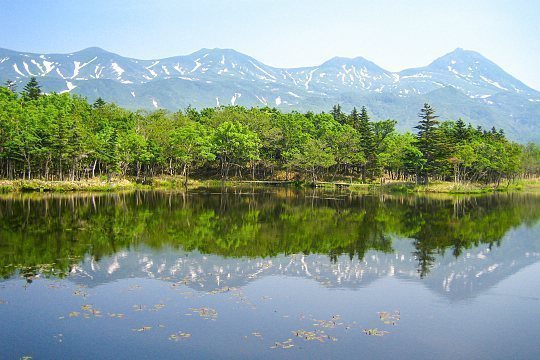
Top Destinations in Japan
By japan guide recommendation.
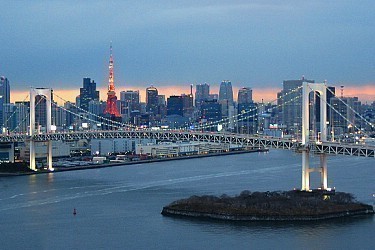
- Search Please fill out this field.
- Newsletters
- More to Explore
- Things To Do
The Top 15 Destinations to Visit in Japan
:max_bytes(150000):strip_icc():format(webp)/jessicaesaprofile-7bb1d24acee44aa5839ac875cb2e0bff.jpg)
There are so many fascinating cities and towns in Japan that it’s difficult to choose which one to visit. It’s a country with thousands of years of history and food culture, some of the best winter sports and diving in the world, and national parks featuring unusual and diverse landscapes. From northern Hokkaido down to the south in Okinawa, you’ve got sites worth making a trip for. Pick your base wisely and you might be able to visit more than one of these top destinations in Japan.
Matias Sanchez / Getty
An easy day trip from Osaka or Kyoto, Nara is a compact city that feels like a step back in time. It was the first permanent capital of Japan and retains many of its historical shrines and temples. It’s often associated with the famous deer of Nara Park that bow to visitors and look for a delicious biscuit in return! From the park you can access Kasuga-Taisha Shrine—one of Japan’s most sacred sites—and Todaji Temple, home to the world’s largest bronze buddha.
Shan.shihan/ Getty
Kyoto is everything you hope it’ll be and more. You can see thousands of years of history by exploring temples like the Kinkaku-ji and historic sites such as Kyoto Imperial Palace. Visit some of Kyoto’s beautiful shrines, including Fushimi Inari, before catching a maiko show in Gion, the city's geisha district. Aside from history, Kyoto is also a modern city filled with izakayas, wine bars, and art museums. There's so much to do, be sure to plan a few days here.
Matteo Colombo/ Getty
There are endless things to do in Tokyo , so get ready to dig in. The capital is as bustling, busy, and bright as you might expect—but there are also quieter neighborhoods where you can still find the Tokyo of old. Some of the highlights include Shibuya and Shinjuku, neon-soaked wards that promise nightlife, restaurants, and shops aplenty. Nearby, Tokyo’s public gardens like Shinjuku Gyo-en offer a peaceful respite. Within the city, you can enjoy theme parks like Disneyland and Disney Sea, or celebrate Japan's animated film legacy by checking out Studio Ghibli Museum.
Nikko National Park
A picture-perfect and highly spiritual destination, centuries-old Buddhist temples and Shinto shrines are surrounded by sweeping natural landscapes in Japan’s original national park. Some of the highlights include Toshu-gu, a lavish shrine and the final resting place of the first Tokugawa shogun, and the Buddhist temple Rinno-ji, founded in the eighth century. Don’t miss the Yomei-mon, also known as Sunset Gate, one of Japan’s national treasures featuring five hundred hand-carved figures. These exceptional sights are set within one hundred hectares of nature, where you’ll find waterfalls, over a dozen hot springs to sink into, and great lakes. One of the most iconic sights here is the red Shinkyo Bridge, which stretches across the Daiya-gawa River.
Amanohasidate
Westend 61/ Getty
Most people head to Kyoto city and don’t get a chance to explore the wider prefecture—but Amanohashidate is one of the most impressive sites in the area. Head over to the coast to see the famous three-kilometer sandbar, classified as one of Japan’s most scenic views. There are many viewpoints to enjoy here; for the best, meander over to the cable car and head up for a birds-eye view.
DoctorEgg / Getty
Head up to Hokkaido to visit one of Japan’s most famous ski resorts , which receives the lightest, driest snow in the region and borders the breathtaking Daisetsu-zan National Park. Not just a winter destination, Furnao is famous for its wine production; thanks to the expansive lavender fields that cover most of the region, wine infused with the herb is popular here. Combine that with beautiful, rolling hills, and you’d be forgiven for thinking you’d stepped into southern France.
Chiara Salvadori/ Getty
With over a hundred baths, this is one of Japan’s favorite onsen towns . Enjoy traditional Japanese accommodation by booking a stay at any one of the town's ryokan, some of which have been around since 1879. Each of the ryokan have their own private baths to relax in, with some offering special facilities including mud, sand, and steam baths.
But there's more to Beppu than bathing. Here, you can try unique food that’s been cooked in volcanic waters, making for interesting new flavors. Just 25 kilometers (about 16 miles) from Beppu you can reach Yufuin, a mountainous town that’s filled with boutique shops, cafés, and restaurants.
Yiming Chen/ Getty
Fukuoka is a perfect city for foodies and is considered one of the major culinary destinations in the country. Make sure to try Fukuoka’s famous Hakata ramen, a form of creamy tonkotsu ramen that has made waves locally and internationally. Head to Hakata yatai stalls where more than two hundred vendors serve up the tastiest dishes in intimate lantern-lit surroundings. This is a great city to enjoy the coast, with beaches, water sports, and nearby island adventures. Visit Shikanoshima for historic monuments and shrines, or Nokonoshima, famous for its seasonal flowers.
Thanyarat07/Getty
A convenient trip from Tokyo and Mount Fuji, Hakone has a lot to offer for those who love mountain views, hot springs, tea houses, and romantic ryokan . Yunessun and Tenzan are two of the most popular hot springs, but there are plenty of onsen to enjoy as well, including novelty baths with wine, herbs, milk, or coffee. There are more than a dozen art museums here ranging from the quaint (like the Museum of Saint-Exupéry and The Little Prince) to expansive (like the Open Air Museum). There are plenty of walking options, including routes up The Great Boiling Valley, where you can try Hakone’s signature black eggs; there’s also a gondola up for an easier ride.
Kerama Shoto National Park
Ippei Naoi/ Getty
There are about two dozen islands surrounding Okinawa, Japan's favorite vacation spot. The Kerama Islands, an archipelago of approximately 30 islands, are surrounded by healthy coral reefs and a diverse ecosystem that makes for perfect diving and snorkeling adventures. With pine forests, sheer cliffs, and mountains, the landscape offers an endless amount of photo spots and hiking options. Many of the islands are inhabited, so you’ll find hotels, restaurants, and tour agencies in this subtropical paradise.
Miyajima Island
Aladimirzakharov/Getty
Off the coast of Hiroshima, Miyajima Island has long been regarded as one of the most scenic spots in Japan. It’s often associated with images of the torii gate of the sixth century Itsukushima Shrine; during low tide, you can walk up to the gate, but when the tide is high, it appears to float. There are many places to go hiking at Mount Misen, where you can get spectacular views of the city. The Daisho-in Temple complex sits at the foot of the mountain and is just one of the spiritual sites you can see on the island. Omotesando shopping street attracts those looking for local handmade crafts as well as street food lovers.
Aladimirzakharov/Getty
There’s a lot to see in Hiroshima even though it’s often associated with the atomic bomb that fell on August 6, 1945. The Hiroshima Peace Memorial Parks is a must-visit for this reason; here you’ll find museums, various monuments honoring those that died, and the A-Bomb Dome that survived the blast.
Hiroshima is also famous for its ramen, particularly the Onomichi style; make sure you seek out some of these tasty noodles loaded with flavor. For a different side to Hiroshima’s history, pay a visit to the beautiful Hiroshima Castle and grounds, just a 15-minute walk from the peace park.
Annhfhung/Getty
Often described as "Little Kyoto," Kanazawa largely escaped the bombings and so has retained most of its historic buildings and sites. Here you can explore preserved Edo-period, geisha, and samurai districts as well as winding streets and beautiful buildings. Take some time to wander the pedestrian street between Katsurazaka and Renchimon gates for regional crafts, restaurants, and cafés. Later, take a stroll through what’s considered one of Japan’s three best landscape gardens. With its varied flowers and foliage, Kenrokuen, established in the 18 th century, is lush in any season. Follow the paths to higher ground to get views over the garden and visit nearby Kanazawa castle.
Suttipongs Sutiratanachai / Getty
Whether you see the majestic Mount Fuji from afar or climb to the top of this famous peak, there’s nothing quite like seeing one of the world’s most famous mountains for yourself. Climbing Mount Fuji was once considered a pilgrimage, and as you climb up, you can see shrines and monuments dating more than a hundred years. There are four routes you can take to the top, but the Yoshida Trail is one of the most popular.
You can even hop on a bus at Shinjuku in Tokyo to get halfway up the peak. If you just want to see the mountain, then take the bus to one of the small towns beneath it like Fuji Yoshida, or get a look at it from Lake Kawaguchiko .
Edwin Gimpel/ Getty
A UNESCO World natural heritage site, this island nature reserve features Japan’s oldest Yaku cedar trees, mossy wooden bridges, waterfalls, and streams. The Shiratani Unsuikyo Ravine inspired parts of the animated film Princess Mononoke , and it’s easy to imagine forest spirits hiding within the dense woodland. There are many hiking trails and routes to choose from of varying difficulty. For a view of the island and a bit of challenge, you can hike up Taiko rock and see the trees spread out below you.
If you're not into hiking, head to the coast of the island to enjoy the hot springs and the beaches where loggerhead turtles come to lay their eggs.
Related Articles
More related articles.
- TheTraveler .net
- Maps of Japan
Our tourist maps
The capital of Japan is a must-go to discover the many different aspects of the country. From the trendy boutiques of the Shibuya district to the video games and electronic stores in the Akihabara district, to the calming and relaxing Shinjuku Gyoen National Garden, each district has its own unique atmosphere. Kyoto, the former capital of the country, offers a calmer atmosphere. In the spring, a stroll along the Philosopher’s walk is a great opportunity to admire the blooming cherry trees. The city is also famous for its Zen temples and gardens. Visitors will be taken on a journey through history by a visit of Himeji Castle and of the Peace Memorial Museum in Hiroshima. In the Land of the Rising Sun, there is no need to look for adrenaline in order to enjoy your trip, people mainly come here to relax and recharge their batteries. Climbing Mount Fuji is one of the few activities for athletes. You should leave very early in the morning to admire the sunrise from the top, a breathtaking spectacle. Sports enthusiasts will also love the parks in Hokkaido that are ideal for hiking. In the north of Honshu Island, a small cruise in Matsushima Bay is very relaxing. A trip to Japan won't leave you indifferent.
Between skyscrapers in Tokyo, Osaka or Kyoto and the zen gardens of Buddhist temples, Japan evokes contrasting images. The country shines with its cultural richness, the result of a turbulent and enigmatic past, but also thanks to its breathtaking landscapes! The seaside resorts and spa resorts won't disappoint you and offer a relaxing stay. Finally, Japan is also a land of traditions with ancestral culture and gastronomy, a land with its own typical festivities.
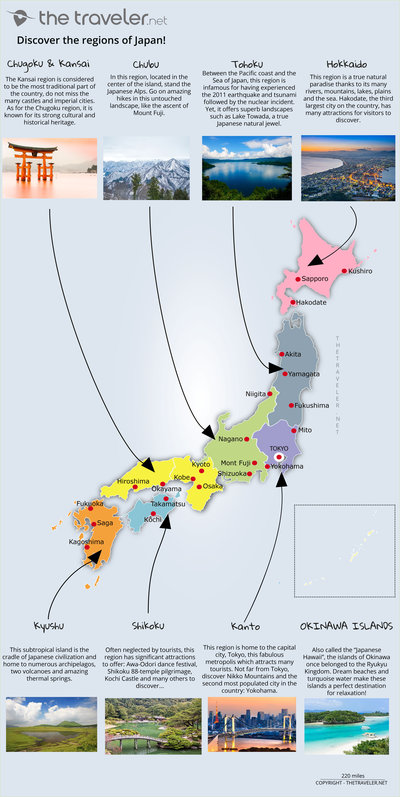
Overview of 8 tourist regions
In this region, located in the centre of the island, stand the Japanese Alps. Go on amazing hikes in this untouched landscape, like the ascent of Mount Fuji.
Chugoku & Kansai
The Kansai region is considered to be the most traditional part of the country, don't miss out on the many castles and imperial cities. As for the Chugoku region, it is well known for its strong cultural and historical heritage.
This region is a true natural paradise thanks to its many rivers, mountains, lakes, plains and the sea. Hakodate, the third largest city on the country, has many attractions for visitors to discover.
This region is home to the capital city, Tokyo, this fabulous metropolis which attracts many tourists. Not far from Tokyo, discover the Nikko Mountains and the second most populated city in the country: Yokohama.
This subtropical island is the cradle of Japanese civilization and home to numerous archipelagos, two volcanoes and amazing thermal springs.
OKINAWA ISLANDS
Also called the “Japanese Hawaii”, the islands of Okinawa once belonged to the Ryukyu Kingdom. Dream beaches and turquoise water make these islands a perfect destination for relaxation!
Often neglected by tourists, this region has quite a lot of attractions to offer: Awa-Odori dance festival, Shikoku 88-temple pilgrimage, Kochi Castle and many others to discover...
Between the Pacific coast and the Sea of Japan, this region is sadly known for having experienced the 2011 earthquake and tsunami followed by the nuclear incident. Yet, it offers superb landscapes such as Lake Towada, a true Japanese natural jewel.
Attractions maps
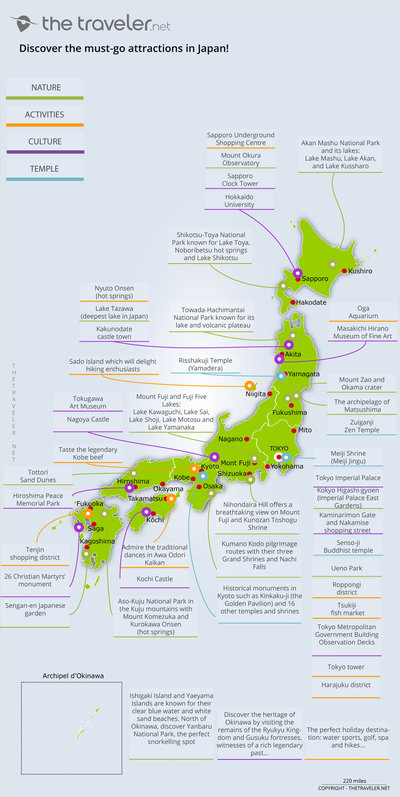
Routes and distances maps
CULT Travelling inside the country can be quite expensive, however, Japan has one of the best railway networks in the world, so opt for the Japan Rail Pass which allows you to save money by not buying a train ticket for each journey. Domestic flights can also be a good option, there is a special package for tourists: the Star Alliance Japan Airpass which allows up to five domestic flights and a lot of money saving. Finally, Japan is an island nation, and the many islands are connected by ferry services.
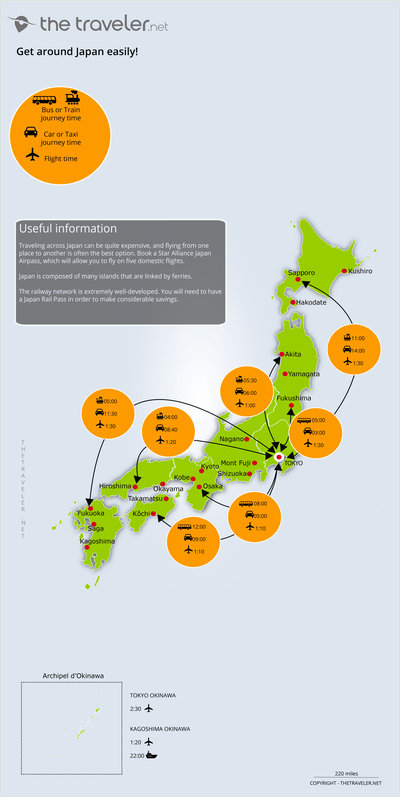

Touropia Travel
Discover the World
27 Top Tourist Attractions in Japan
By Spencer Leasca · Last updated on June 21, 2024
Rich in history and culture, Japan is graced with traditional ryokans and ancient temples. But it also boasts cities like Tokyo, Kyoto, and Osaka that bustle with modern skyscrapers and high-tech gadgets.
In between, there are landscapes of breathtaking natural beauty. While the country is also a major commercial centre for fashion, cars and entertainment.
Then of course there is the food. From sushi and ramen to tempura and yakitori, Japanese food is renowned for its unique flavors and presentation. Travelers can sample traditional dishes at local eateries around the country, or indulge in Michelin-starred restaurants. Both of which will blow you away with their taste and presentation.
For the tourist, it really is a journey of Far Eastern discovery. However, the sheer diversity and wealth of tourist attractions in Japan can make it very difficult to plan a trip. This is why we’ve put together this list of things to do that will hopefully, provide you with some inspiration for where you will go in the ‘land of the rising sun’.
27. Kenrokuen Garden, Kanazawa
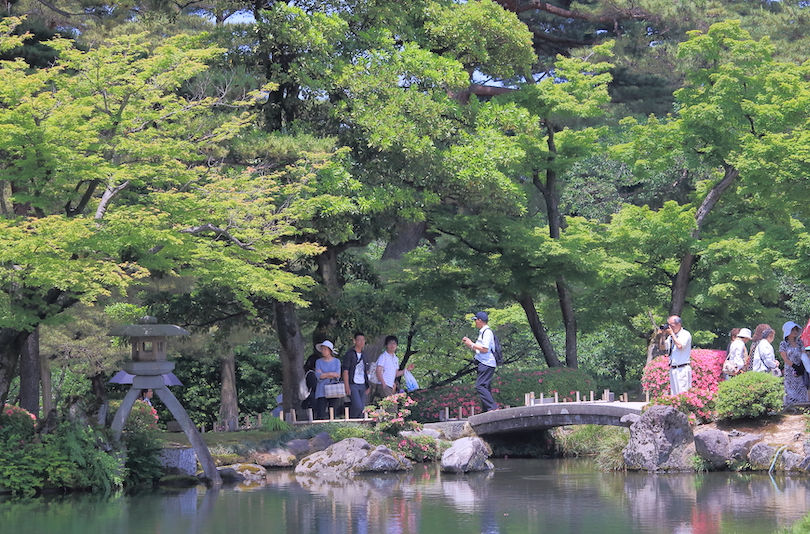
We love looking at beautiful gardens so we were very excited to see the famous Kenrokuen Garden in Kanazawa.
Established back in the 17th century its name means ‘Garden of the Six Sublimities’. This references the six qualities that the Japanese believe make up a perfect garden. Namely abundant water, antiquity, artificiality, broad views, seclusion and spaciousness.
Changing throughout the year with the season, Kenrokuen certainly encapsulates all these elements. In spring, the cherry blossoms are out in force, while in summer, the garden is very lush and green. In autumn, the leaves turn brilliant red and orange. While in winter, the garden is covered in snow, creating a majestic winter wonderland.
Whichever time of year you choose to visit, you’ll be blown away by its beauty.
26. Senso-ji Temple, Tokyo
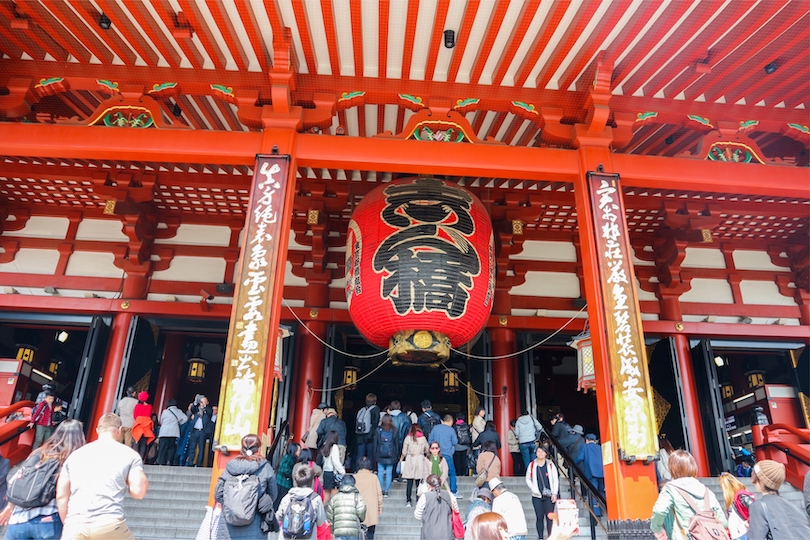
In Japan there are lots of temples. You won’t be able to see them all of course, but one you should put on your schedule is a trip to the Senso-ji Temple.
This Buddhist temple is in the Asakusa neighborhood of Tokyo . It dates back over 1300 years and is one of the city’s oldest and most famous temples.
An impressive structure, it is dedicated to Kannon, the Buddhist goddess of mercy. It is fronted by a main entrance known as the ‘Thunder Gate’. This features a large red lantern and two statues of gods.
Beyond the gate is a long shopping street called Nakamise-dori, where you can buy plenty of traditional Japanese souvenirs and snacks. You’ll also find the temple’s main hall, ‘the Hondo’, as well as a five-story pagoda, and a beautiful garden.
See also: Where to Stay in Tokyo
25. Matsumoto Castle
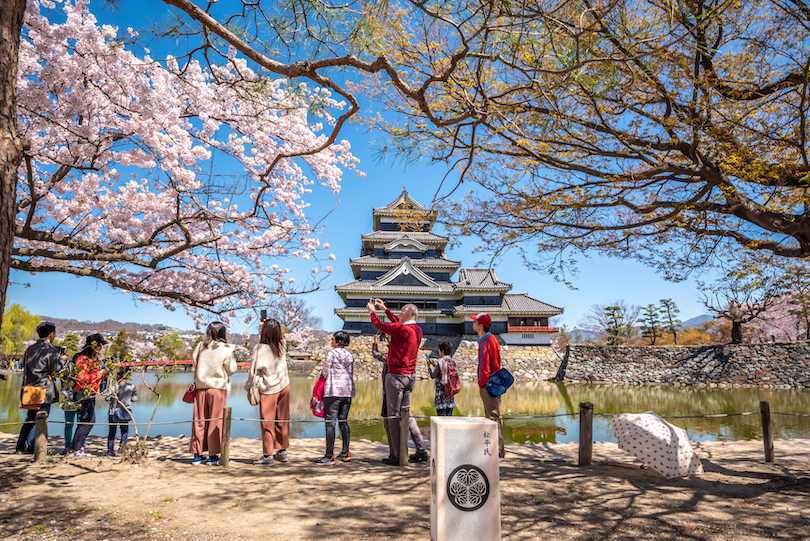
If you plan to head into the central Chūbu region we recommend you venture into the Nagano Basin. For a start, the food is fantastic there. But also, if you love snow sports, you will love the powder-covered peaks that dominate the area.
Should you go there, you’ll be able to see the magnificent Matsumoto Castle. Also called ‘Crow Castle’ because of its stunning black exterior. It is one of Japan’s most photographed structures.
Dating back to the 16th century, the castle’s design is very unique, comprising a three-layered, six-story donjon. It also has a remarkable series of walls and gates that create a maze-like layout.
You’ll be able to tour the castle’s interior. It has several exhibits and displays that relate to its history and construction. Whilst there, be sure to go to the castle’s top floor too. The panoramic views of the surrounding mountains and city are just incredible!
24. Art Island of Naoshima
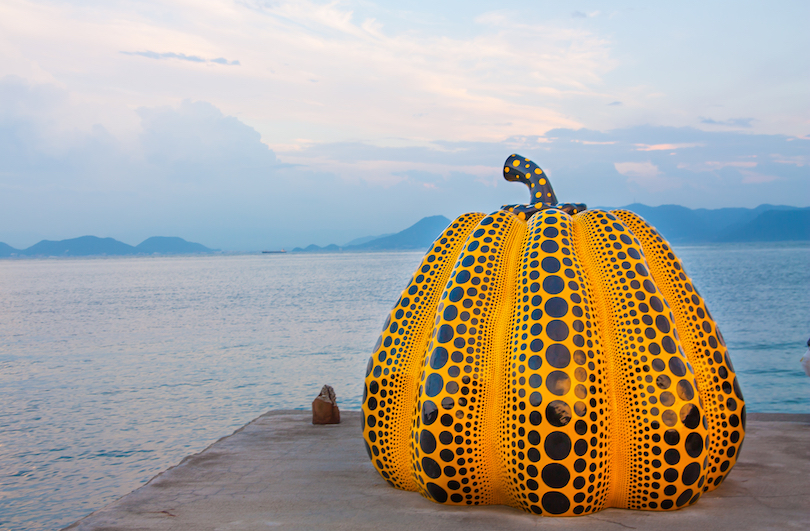
In our opinion, one of the coolest tourist attractions in Japan is The Art Island of Naoshima. Firstly, it has a dramatic location on a small island in the Seto Inland Sea that will captivate you.
But it also houses very impressive contemporary art installations, galleries and museums, you could ever wish to see.
These include the Chichu Art Museum, the Lee Ufan Museum, and the Art House Project. All of which are really pushing the envelope with their displays. If you love art, you’ll love what’s on show here.
As well as these cultural attractions, you can also visit beautiful beaches. Alternatively, you can tackle some of the hiking trails that snake around the island.
Should you want to, you can even stay overnight in one of the island’s art-themed accommodations. This is a very cool thing to do!
23. Tateyama Kurobe Alpine Route
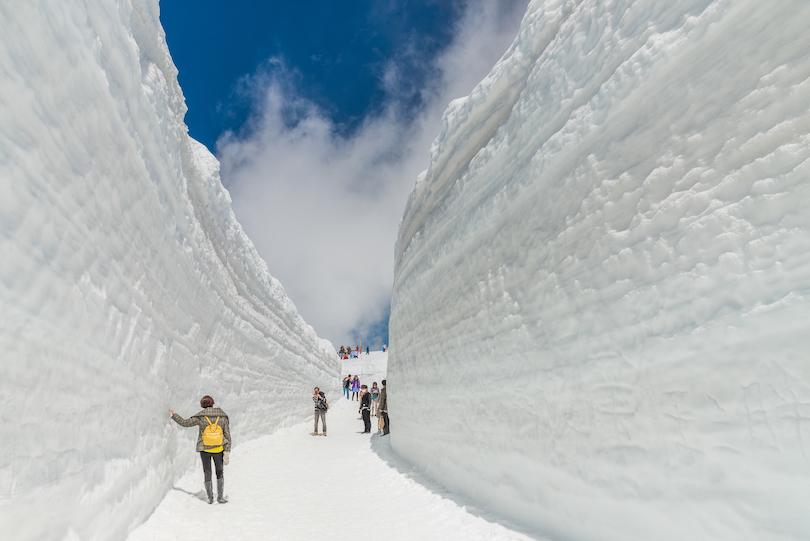
Want to do something with a bit of a wow factor? Then make sure you traverse the Tateyama Kurobe Alpine Route.
Located over in the Northern Japan Alps, this scenic mountain route spans the Toyama and Nagano Prefectures. It is known for its spectacular views of the surrounding mountains, including Japan’s highest peak, Mount Fuji.
It is also home to the Kurobe Dam, one of the world’s largest arch dams. It also accommodates the Mikurigaike Pond, which is known for its beautiful blue-green water. So there is plenty to see along the way.
The route is open from mid-April to mid-November and is a marvel of Japanese engineering. You can choose to traverse this route via bus, tunnel trolley bus, cable car or even on foot.
If you go in the spring, be sure to look out for the famous ‘Snow Wall’. This is a formidable 20-meter-high wall of snow that forms along it.
22. Osaka Dotonbori
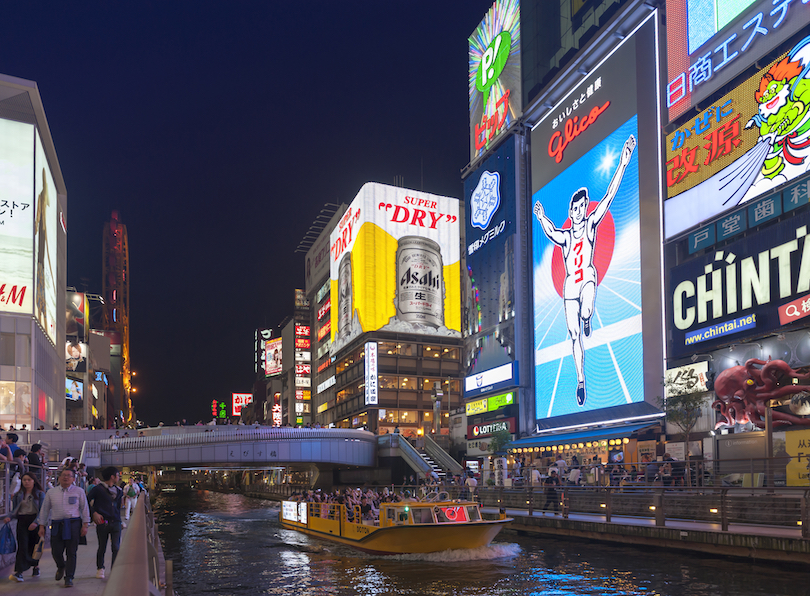
For its sheer spectacle, one of our favorite things to do in Japan at night is wandering around the Osaka Dotonbori . Not only is it a great place to people watch, but it also has a real ‘wow’ factor.
Centered around the Dotonbori Canal, you’ll instantly recognize this popular shopping and entertainment district. It has all those colorful giant neon signs and billboards, which you’ve no doubt seen on TV.
These include the iconic Glico Running Man and the Kani Doraku crab. If you are anything like me, you’ll be transfixed by both!
As well as the lights, the area is lined with shops, restaurants and bars. It also accommodates an awesome collection of street food vendors. So be sure to try the takoyaki (octopus balls) and okonomiyaki (savory pancakes) whilst you are there.
The kushikatsu (deep-fried skewers), are delicious too. Your taste buds will thank you for it!
21. Okinawa Churaumi Aquarium
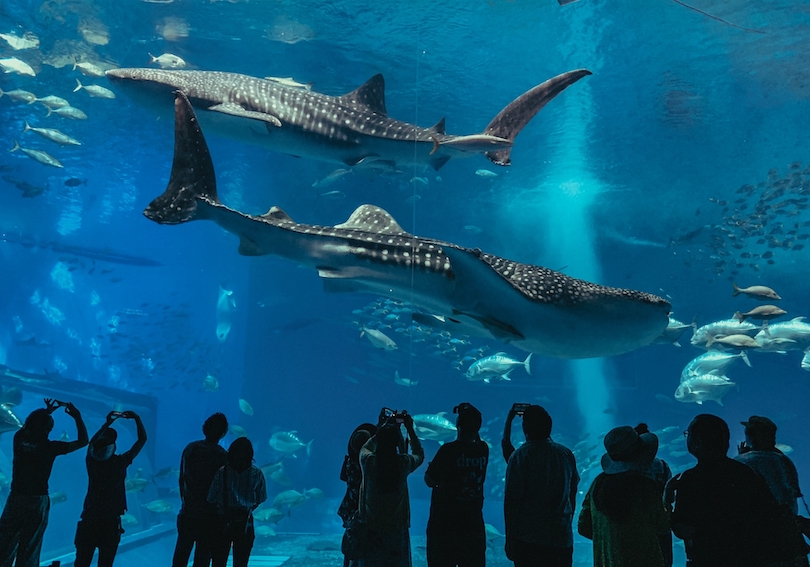
Okinawa is a lovely part of Japan to visit.
If you find yourself there with some time on your hands, make your way to the Motobu area. There you can visit the Okinawa Churaumi Aquarium. It is a terrific base to visit some of the surrounding islands.
It is one of the largest aquariums in the world. If you love looking at marine life, you’ll love what is on display here. Its main tank, the Kuroshio Sea, is one of the largest in the world. It houses whale sharks, manta rays, and giant groupers which will captivate you.
It also has a number of other cool exhibits. These include a coral reef tank, a dolphin lagoon, and an exhibit dedicated to sea turtles.
Whilst there, you can watch feeding demonstrations and attend educational programs. You can even take part in interactive experiences like touching rays and sea cucumbers too.
20. Ride A Bullet Train
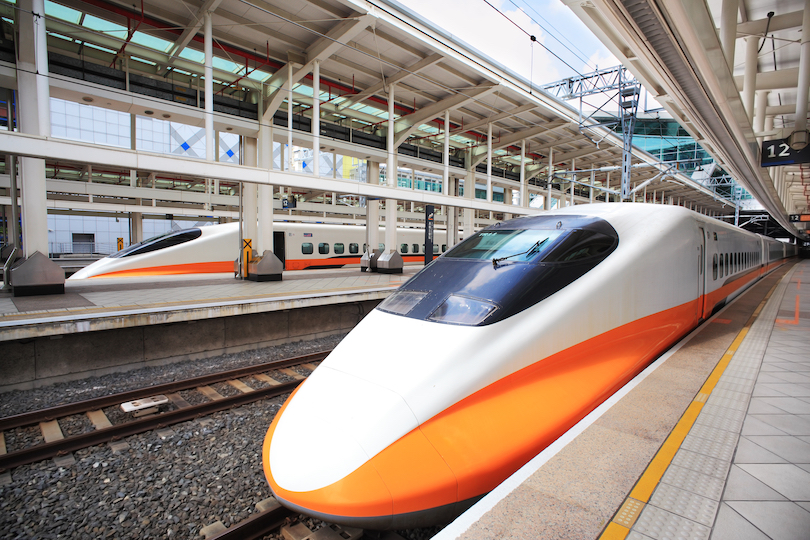
For any tourist, Japan is a big country to get around. While many people choose to fly, riding on the bullet train is an experience I can’t recommend highly enough.
Also known as a Shinkansen, these trains can reach up to 320 km per hour. They can take you from Tokyo to Osaka in just two hours!
Yet despite this, it is actually a fairly smooth and quiet ride. They are also incredibly punctual, to the point where being even a minute or two late is unheard of.
The Shinkansen network spans most of Japan’s major cities and there are regular departures and arrivals throughout the day. The trains are equipped with comfortable seats and very clean restrooms. Their food and beverage services are pretty good too.
19. Nara Park
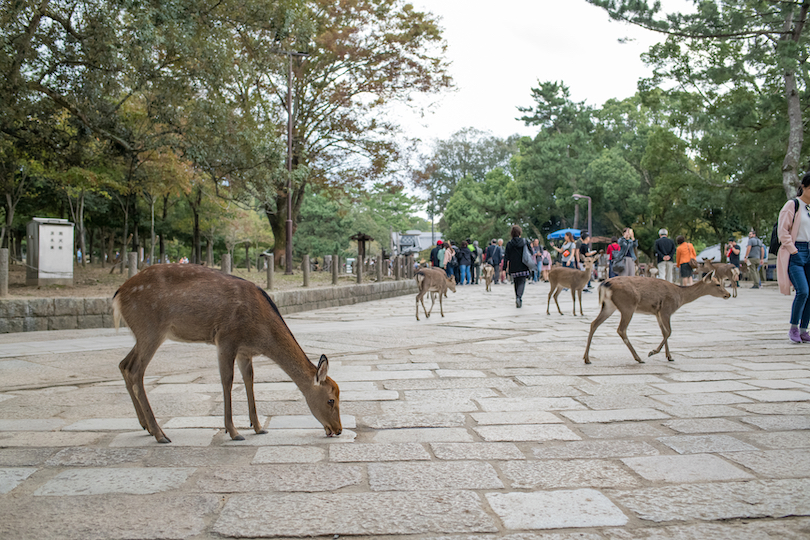
You might not have been aware of this, but deer are considered sacred in Japanese culture.
For this reason, we would suggest adding Nara Park to your itinerary of things to do if you visit Nara .
This large public park covers over 500 hectares. It is known for its population of free-roaming deer, of which there are hundreds.
If you love animals, you can buy special crackers to feed the deer, and even take photos with them.
As well as the deer, the Park also houses several famous temples and shrines, including the Todai-ji temple. This is also worth checking out because it is home to the largest bronze Buddha statue in the world.
18. Koyasan Okunoin
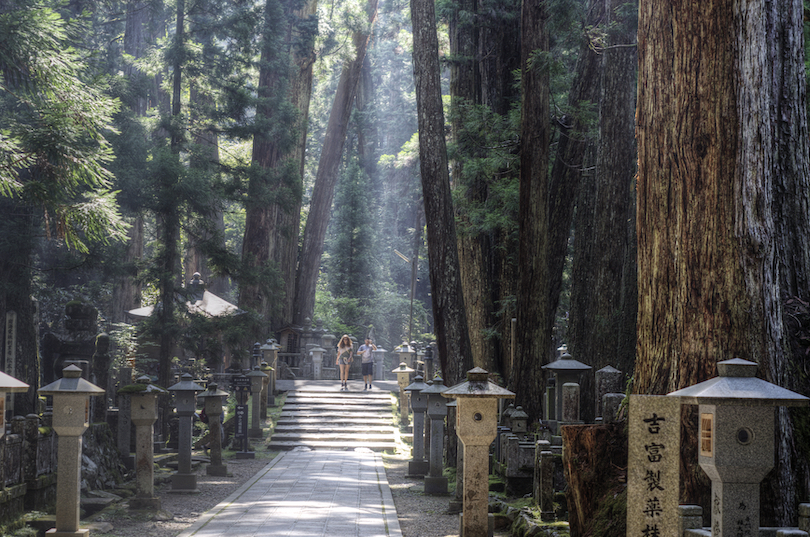
Ok, so visiting a cemetery might not be everyone’s idea of a good time when on vacation. However, the Koyasan Okunoin is a unique exception everyone should make.
Located in the Koyasan mountain range, within the Wakayama Prefecture, this sacred site is the largest cemetery in Japan. It is also the final resting place of many famous figures in Japanese history.
The impressive site is centered around the magnificent Okunoin temple. This is surrounded by a large cemetery, which contains over 200,000 tombstones and monuments.
If you want to come here, you can explore the cemetery. You can also visit some of the various temples and shrines that are dotted around the area. Additionally, the site is also famous for its lanterns. They line the paths and are lit every evening.
17. Shirakawago
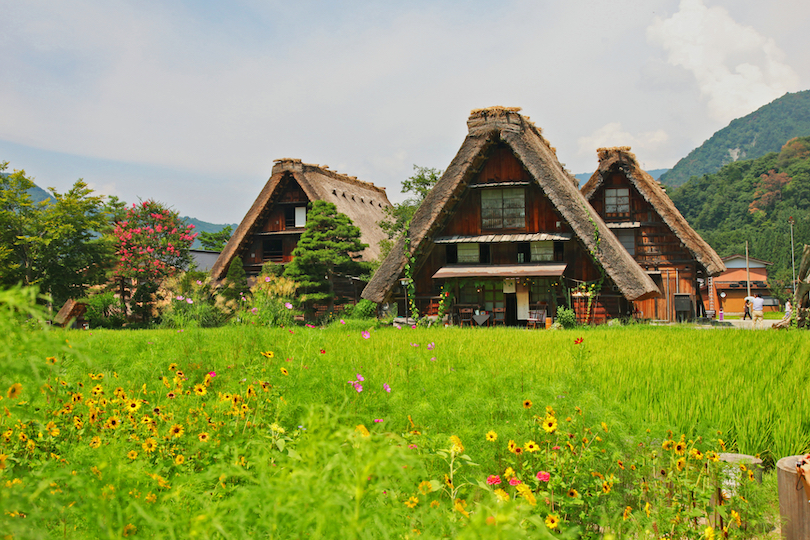
Japan is known for its cutting-edge technology. But if you want to experience life before the tech age, then it’s worth visiting Shirakawago.
Located in the mountains of Gifu Prefecture, this picturesque village is known for its authentic gassho-zukuri farmhouses. They boast inclined thatched roofs that look a lot like hands held together in prayer.
The village is actually a UNESCO World Heritage Site that showcases traditional Japanese rural life. Whilst there, you can go on a tour of the farmhouses to see its traditional architecture and lifestyle. You will also be able to learn about the history and culture of the area.
We found Shirakawago fascinating, as it provided a point of reference to what Japan used to be like. Next time we’ll time our visit with either their traditional New Year’s celebration or summer dance festival. Both of which are meant to be amazing spectacles.
16. Nikko National Park
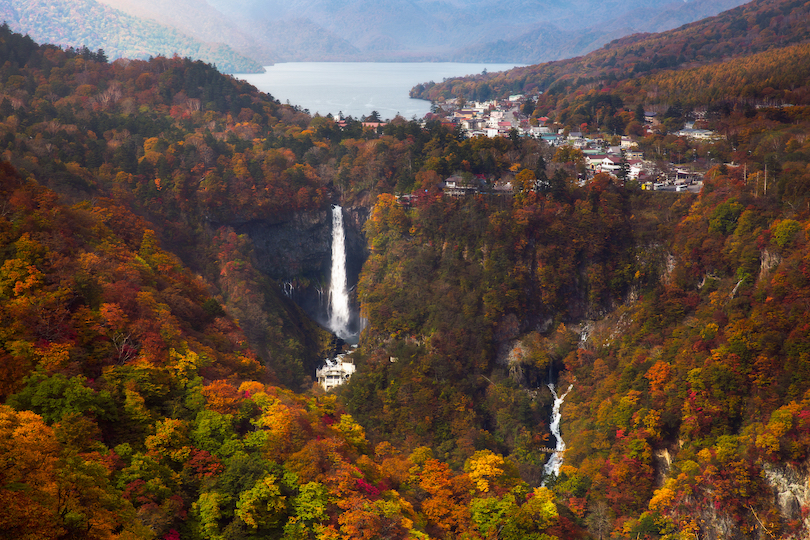
One of the most beautiful places we have ever been to in Japan is Nikkō National Park.
We visited here when we were in Tochigi Prefecture. Its stunning landscape of waterfalls, lakes, and mountain ranges blew us away.
You’ll probably need to spend a couple of days in Nikko as the park is home to several famous landmarks. Namely, the Toshogu Shrine, which is a UNESCO World Heritage Site. The Kegon Falls, is also a beautiful cascade worth visiting.
The park offers a variety of activities, including camping, fishing, and hot springs. It also hosts several traditional festivals and celebrations throughout the year.
15. Sapporo Snow Festival
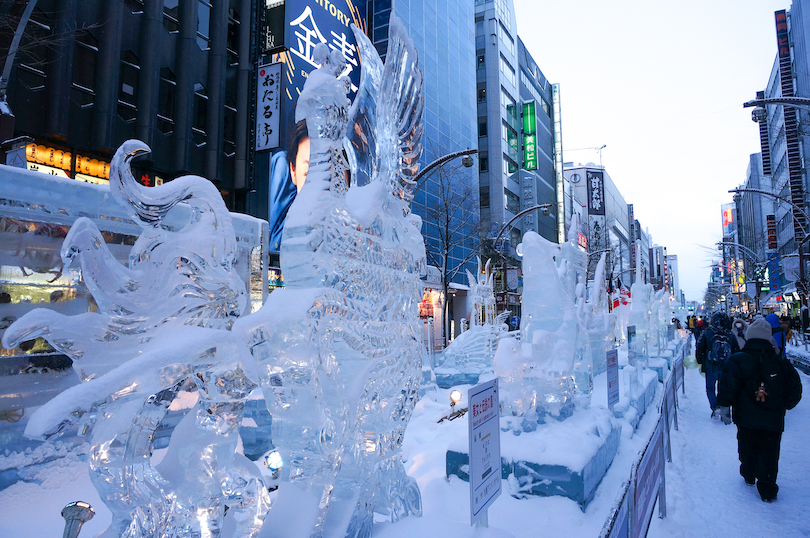
If you happen to be in Japan in January and February, then visiting the Sapporo Snow Festival is one of the smartest things to do. It is a fantastic celebration of winter sport, art and gastronomy that provides a great insight into Japan’s culture.
This popular festival is held every year in the capital city of Hokkaido. As it attracts millions of visitors, we would suggest planning ahead.
The festival is famous for its impressive snow and ice sculptures which range in size. Some are small ornate figurines. While others are massive two or three-story high structures that tower over the crowds.
The sculptures are created by insanely talented artists who showcase their skills and creativity. We really don’t know how they do it! However, their work is mightily impressive.
Being winter and with lots of snow around it will be cold. Thankfully there are lots of places to get hot chocolate or ramen to keep you warm and fed.
14. Takachiho Gorge
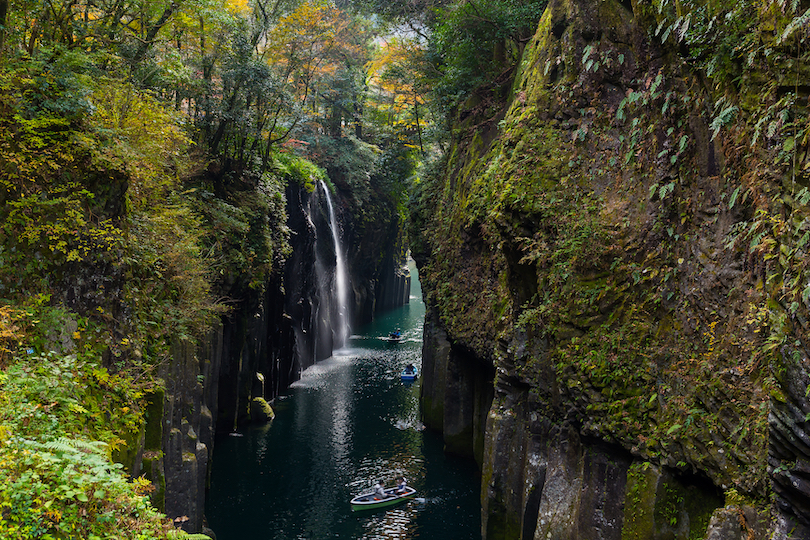
Japan is a country steeped in mythology and legend. There are lots of places you can go to experience it. For those who want to explore this folklore, one place we would suggest is the Takachiho Gorge.
According to Japanese mythology, the gorge was where the sun goddess Amaterasu hid in a cave. Thus, causing the world to fall into darkness. It is also believed to be the location where the god Susanoo slayed the eight-headed serpent Orochi.
Formed over thousands of years by the Gokase River, the gorge is a natural scenic wonder in Miyazaki Prefecture. It is known for its towering cliffs, cascading waterfalls, and emerald-green waters. These are best seen on foot via hiking trails or by traversing down the river in a rented rowboat – which, take it from us, is a lot of fun.
13. Watch Sumo Wrestling
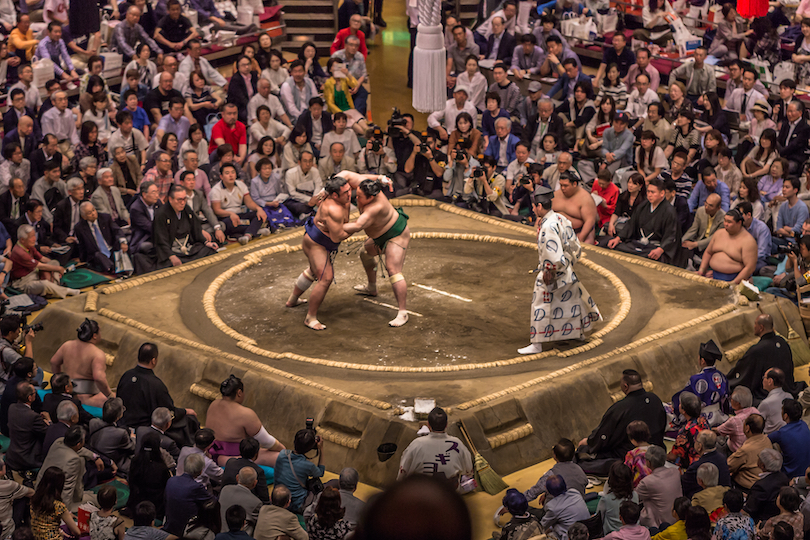
Sumo Wrestling captivated us from the first time we saw it at the Ryogoku Kokugikan in Tokyo. Located in eastern Tokyo, we went because the stadium was a short walk from Ryogoku Station. Although it cost about 10,000 yen per person to watch, it was an amazing spectacle.
Sumo is a traditional Japanese sport that dates back over a thousand years. It is not just two large men wrestling each other dressed in little more than a loin cloth. But rather a combat sport steeped in history and ritual.
If you can get to a professional sumo match it is something we would urge you to do. The matches are fast-paced and intense, and the wrestlers are incredibly skilled and agile. The atmosphere is really good too and you’ll soon find yourself cheering for your favored competitor!
Six tournaments are held in Japan each year. Three of which take part in Tokyo – which is considered to be the Sumo capital of the world.
12. Itsukushima Shrine, Miyajima
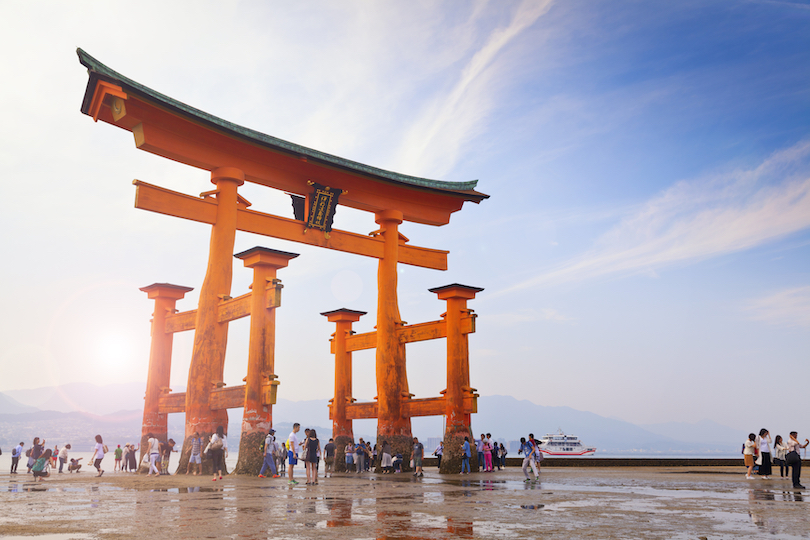
The Itsukushima Shrine is just one reason to head to the Hiroshima Prefecture . But it is a very compelling one.
One of Japan’s most iconic landmarks, it is known for its captivating torii gate. This has the incredible illusion of floating on the water. Dating back to the 6th century, the shrine is a UNESCO World Heritage Site that has mystical properties.
We were mesmerized by its magical appearance and ornate detail as we explored its various buildings and courtyards.
The shrine is easy to get to by ferry from the mainland at Miyajimaguchi Station. While you are there you can also relax in the surrounding park or hike some of its scenic trails.
11. Shibuya Crossing, Tokyo
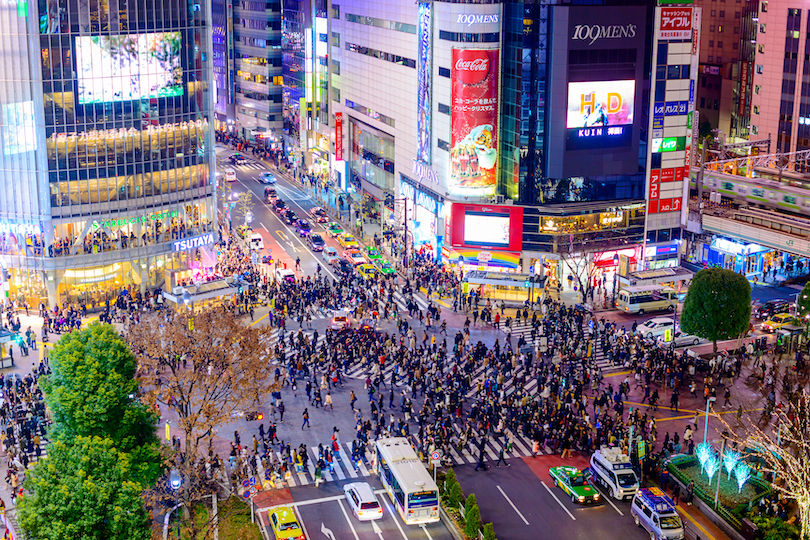
Shibuya Crossing is not a place you are likely to have to yourself. In fact, it is the world’s busiest pedestrian crossing. So, you’ll have on average about 3,000 people around you whenever you cross it.
However, it is a captivating and enchanting place to go to. Not least because of the unique atmosphere created by the sea of people that traverse it.
One of Japan’s most iconic sites, Shibuya Crossing is characterized by its large neon billboards, flashy signs and noise. It is a symbol of Tokyo and modern Japan and has appeared in countless films and television shows.
We crossed it a few times when we visited Tokyo and also spent a bit of time looking down at the pedestrians from one of the cafes perched above it.
10. Fushimi Inari Shrine, Kyoto
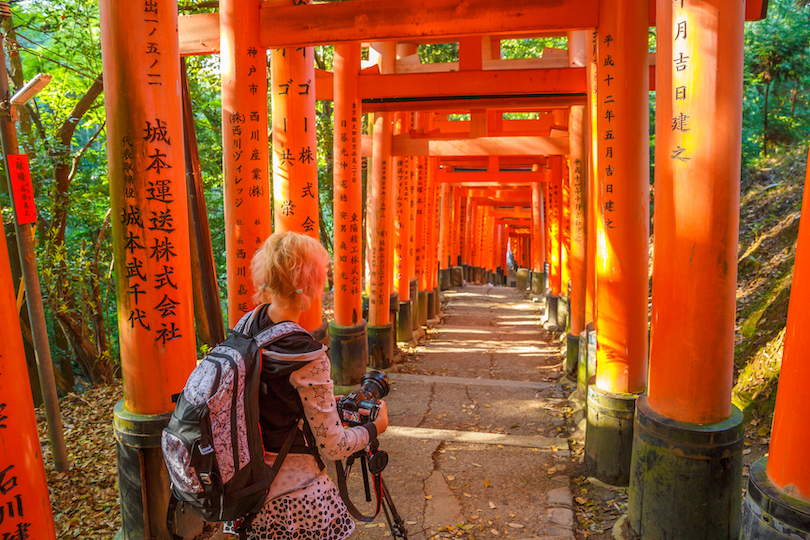
The Fushimi Inari Shrine is a remarkable site. We would strongly advise you to check out if you are in Kyoto .
Dedicated to Inari, the god of agriculture, it was founded in 711. It is famous for its over ten thousand vermillion-colored torii gates. They create a stunning site as they form a tunnel-like path up the mountain.
Many people, myself included, have walked the torii gate path, taking in wonderful views of Kyoto from the mountain. On a clear day you can see for miles, so be sure to have your Smartphone with you.
This path takes visitors through a dense forest of cedar trees. It also showcases smaller shrines and other offerings like statues of foxes. They are thought to be messengers of the god Inari.
9. Hiroshima Peace Memorial
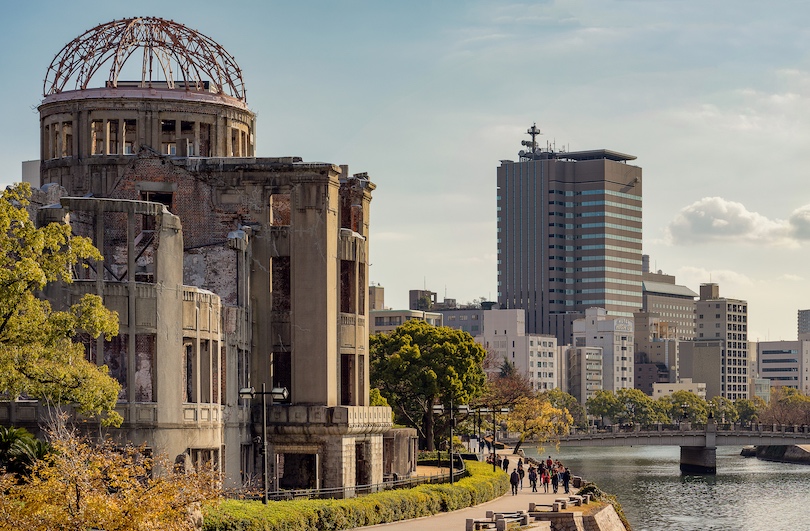
The Hiroshima Peace Memorial is one of the world’s most thought-provoking places to visit. It certainly made us think about the tragic waste of human life. As well as how the incident changed the world.
A powerful symbol of peace, it is a sombre reminder of the devastation caused by the bombing of Hiroshima.
The memorial is made up of the remains of the Genbaku Dome. This is one of the few buildings in the city to survive the bombing. It also features the surrounding Peace Park.
The surrounding park is a pleasant space to wander and features various monuments and sculptures dedicated to peace. One of which is the Children’s Peace Monument, which was inspired by a young girl called Sadako Sasaki, who died of leukaemia caused by radiation from the bomb.
8. Jigokudani Monkey Park
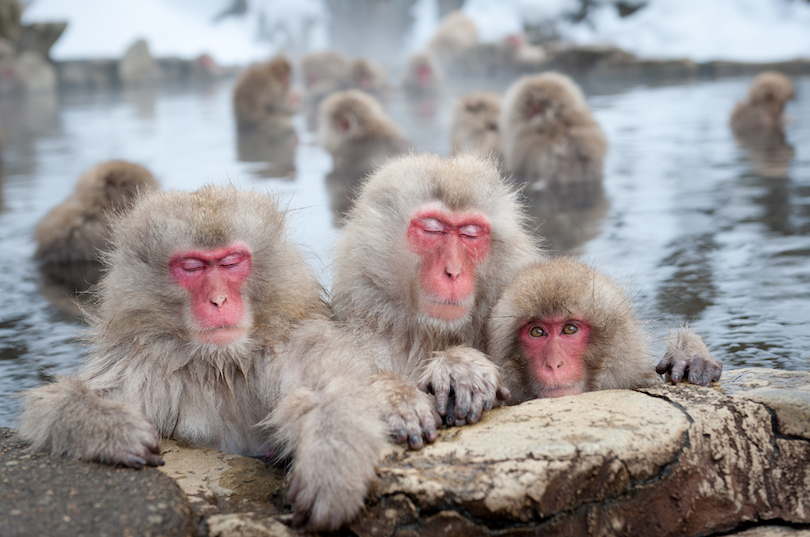
If you are not a big fan of monkeys you might want to skip to the next attraction. But if you are then you should pay a visit to the Jigokudani Monkey Park.
This popular wildlife attraction can be found in the Yamanouchi region of Nagano Prefecture. It is home to a large population of wild Japanese macaques, who are better known as snow monkeys.
What makes these creatures unique is that they are known for their unique behavior. This involves them taking hot spring baths during the winter months.
Getting to the park involves a short hike through a scenic forest trail in a mountainous region. However, the sight of the monkeys in the hot springs is worth it.
7. Kiyomizu-dera, Kyoto
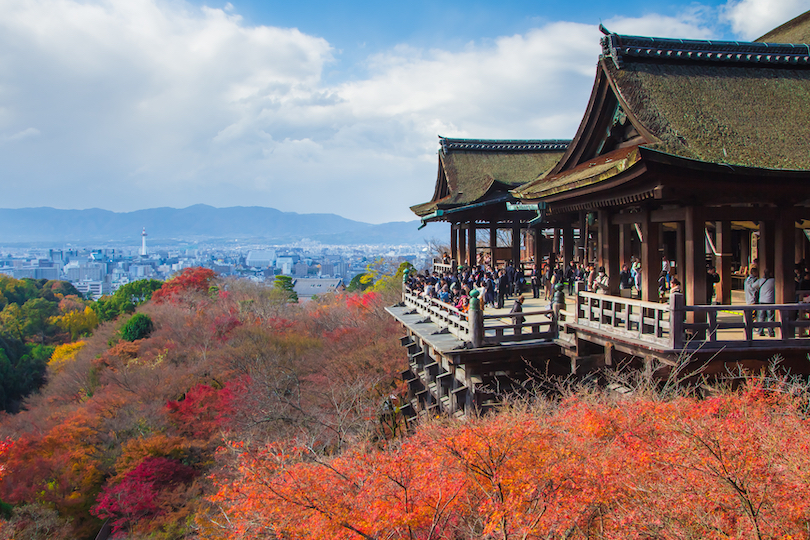
Japan has its fair share of UNESCO World Heritage sites and another one worth visiting is the Kiyomizu-dera.
This historic Buddhist temple is found in eastern Kyoto. Impressively, its main hall is built on a steep slope and is supported by wooden pillars.
The temple has the nickname ‘Pure Water Temple’ on account of its Otowa Waterfall. Here visitors can drink from one of three streams of water. Each of them is believed to have different healing properties.
If you can get there in spring, Kiyomizu-dera is particularly beautiful as cherry blossoms are in bloom. During fall, it is also spectacular when the leaves change color.
Whatever time of year you visit, as well as drinking the water, you can also enjoy panoramic views of the city from the temple’s large veranda.
6. Mount Fuji
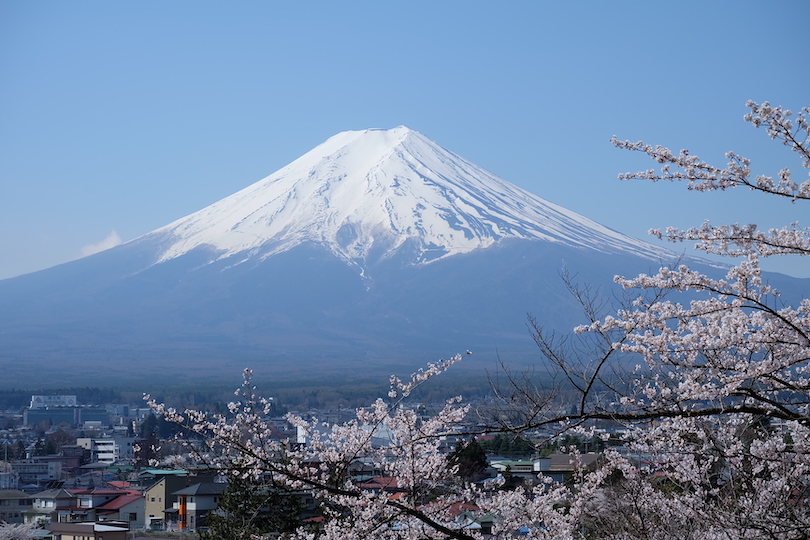
Mount Fuji is one of Japan’s most active sites, but if you intend to visit it, just be aware it is an active stratovolcano.
Situated on Honshu Island, it is the highest peak in Japan, soaring to a height of 3,776 meters. Mount Fuji is also considered a sacred site in Japanese culture, although it is a popular destination for hikers and tourists to climb.
The best time to do this is between early July to mid-September. Overall there are several trails that will lead you to the summit. Just make sure you are wearing proper shoes when you do it.
Surrounding the mountain is a beautiful national park. The landscape of which you will be able to best see on the way up.
5. Himeji Castle
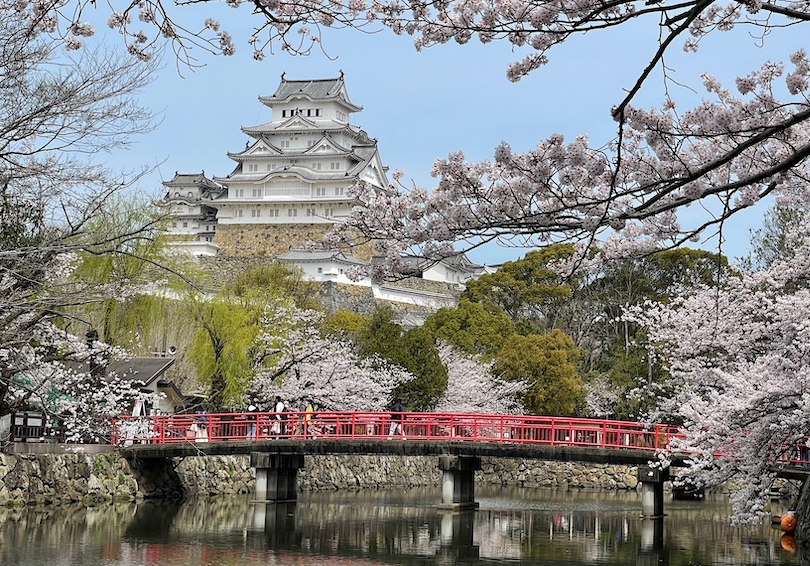
Himeji Castle is yet another UNESCO World Heritage site, but with good reason.
Known as the ‘White Heron Castle’ because of its white exterior and the way it resembles a bird taking flight, it is one of the most impressive castles we’ve ever seen.
It is also one of the few surviving original castles in Japan, as most were destroyed during wars, or by earthquakes.
The castle is surrounded by a beautiful park with cherry blossom trees and a moat. It also has numerous defensive features, including walls, gates, and towers that can be explored on a guided tour.
Inside, its ornate decor features beautifully painted screens, intricate wood carvings, and other works of art which are really impressive.
4. Great Buddha of Kamakura
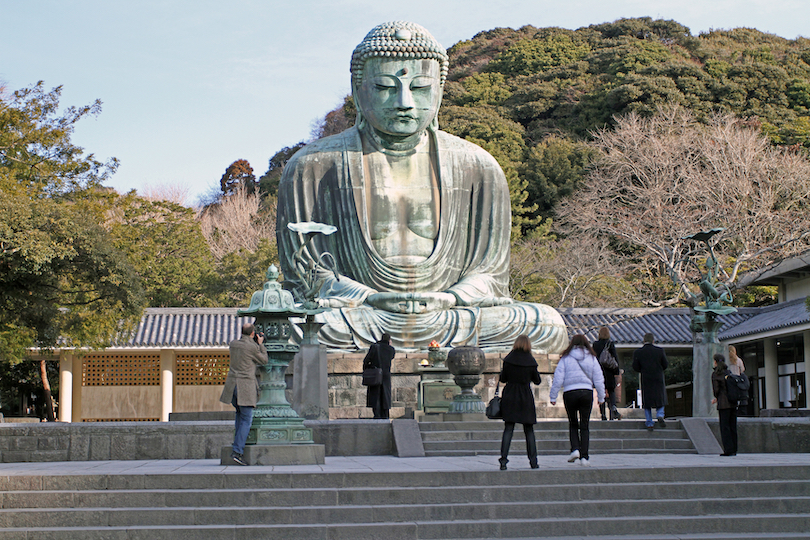
You’ll see plenty of statues of Buddha in Japan but none quite like The Great Buddha of Kamakura.
Standing approximately 44 feet tall and weighing approximately 266,000 pounds, it is considered one of Japan’s most iconic and beloved cultural treasures.
Originally cast in 1252, you will have to go to the city of Kamakura if you want to see this monumental bronze statue.
Apparently, the statue has survived numerous earthquakes and other disasters over the centuries and is considered a symbol of resilience, hope and strength.
If you go there, you will be able to explore the statue and its surroundings. There is also a small museum that presents information about the statue’s history and significance.
3. Todaiji Temple, Nara
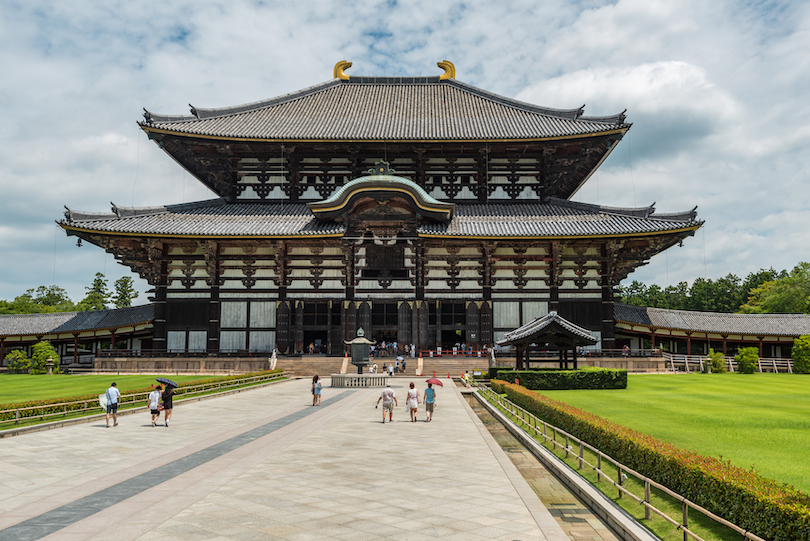
Another place where you can see a massive statue of Buddha is the Todaiji Temple.
This impressive Buddhist temple is situated in Nara and is renowned for the 52 feet high and 1.1-million-pound massive bronze statue of the extraordinary being.
The temple dates back to the 8th century and is located in Nara. Over the years it has been destroyed and rebuilt several times. However, its main hall – the Daibutsuden – remains one of the largest wooden structures in the world.
As it is a UNESCO World Heritage Site, it also contains thousands of precious art objects. While there you can also walk around its beautiful park, which features cherry blossom trees and roaming deer.
2. Tokyo Imperial Palace
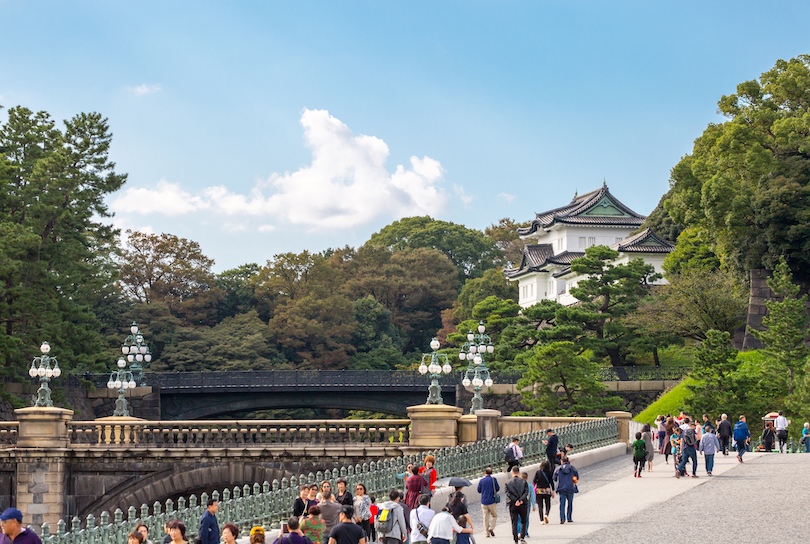
For anyone visiting Tokyo, a visit to The Tokyo Imperial Palace is a must!
Nestled in the heart of Tokyo, it is the primary residence of the Emperor of Japan. Dating back to 1457, the palace is surrounded by beautiful gardens and is a very popular tourist attraction. We would recommend you go there early to avoid the crowds.
Once there, you can take a guided tour of the palace grounds. This includes the palace gardens, as well as the outer areas of the palace complex.
The palace also houses a museum that features exhibits on the history and culture of the Japanese imperial family. This enables visitors to learn about the rituals and customs of the royal family. You can also view a collection of imperial treasures and rare artifacts.
1. Golden Pavilion, Kyoto
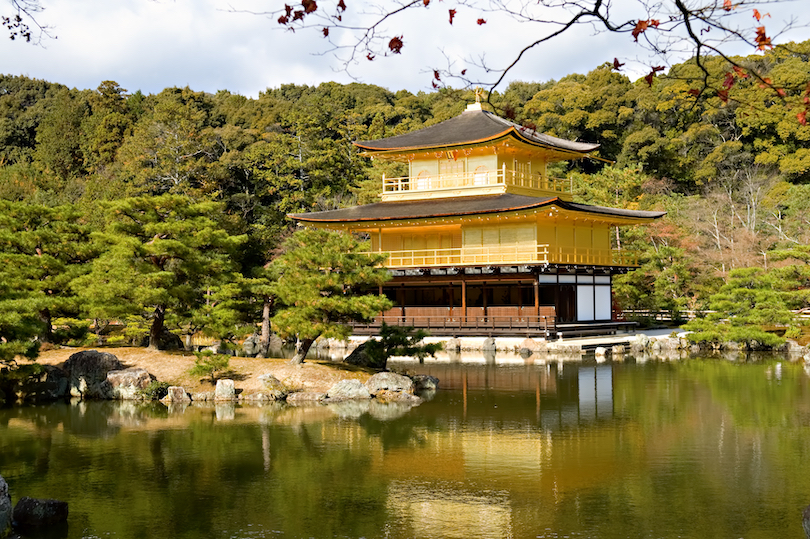
The Golden Pavilion is one of Japan’s most popular tourist attractions, and it is not difficult to see why.
Also known as Kinkaku-ji, this Zen Buddhist temple is situated in Kyoto. It is highly regarded for its stunning architecture. This notably features the top two floors of its pavilion lavishly decorated in gold leaf.
Originally it was built in the 14th century as a retirement villa for a shogun. The temple is backed by lush forest and fronted by a beautiful garden and lake.
Both of these are lovely places to stroll by – we found the lake especially enjoyable. The flora around it was beautifully arranged and reflected on the water with perfect clarity. We stopped here for a good five minutes to really appreciate the scene.
There were several other buildings, including a temple hall and a tea house that we enjoyed looking at too.
This is another place that gets very busy. So try and avoid coming in the middle of the day.
Map of Tourist Attractions in Japan
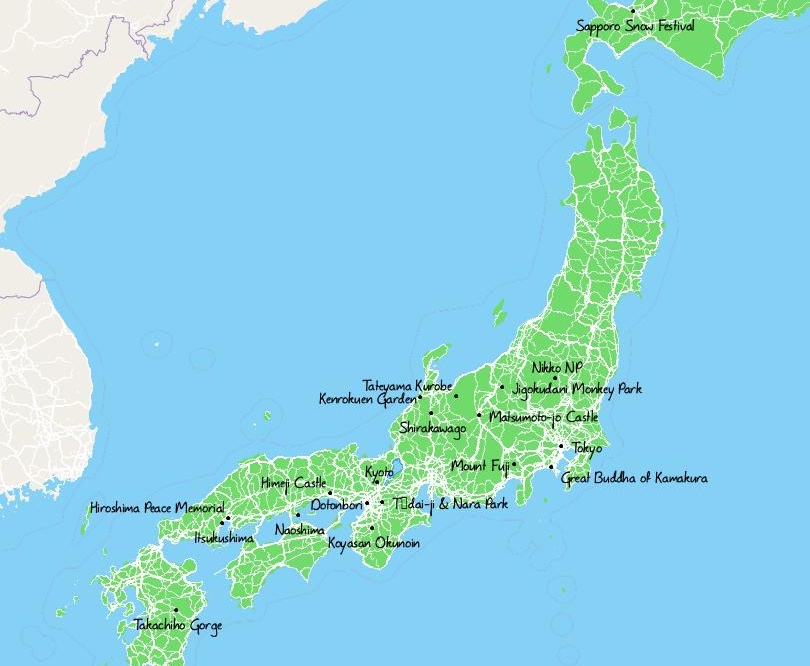
Share this post:

9 Most Amazing Hotels in Japan

15 Best Cities to Visit in Japan

10 Most Beautiful National Parks in Japan

17 Best Places to Visit in Japan

12 Most Beautiful Castles in Japan

12 Most Beautiful Volcanoes in Japan

10 Largest Islands in Japan

9 Most Beautiful Regions in Japan
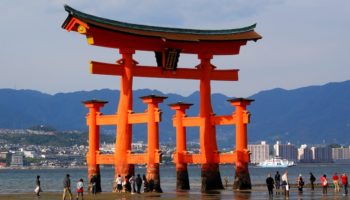
7 Best Day Trips from Kyoto
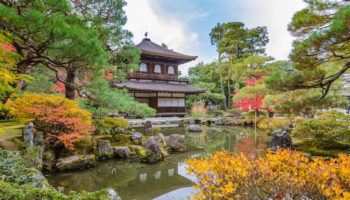
23 Top Tourist Attractions in Kyoto, Japan
Reader interactions.
May 6, 2020 at 8:39 pm
I had been tour some famous places in Japan like Golden pavilion, Tokyo Imperial place , Tokyo tower, Todaiji Temple, and so on. I think Japan is a good place for tourism. Keep it on in the near future
September 26, 2019 at 2:45 pm
Taking the Bullet Train to Sendai and that area is nice. So many Shrines and Temples in Japan make it a very enjoyable educational experience. Love the food!
June 2, 2019 at 7:30 am
There are a ton of other great places in Japan as well, Tokyo Tower can be kinda a tourist trap, the metropatilan building gives a better view and is free.
April 24, 2019 at 9:07 am
i so want to go to japan because of reading these comments, it sounds so nice
April 2, 2019 at 1:20 am
I love Japan, especially their clean and incomparable rest rooms, their kind of discipline is so amazing!
April 21, 2017 at 3:20 pm
When I lived in Kyoto for 3 months, I fell in love with the country, Although I have to admit the Golden Pavilion I would not even put in my top 100 attractions even in the Kyoto area I hope people don’t go to it expecting much and get disappointment in Japan, my favorites were lot of the area around Uji, and Gion, or fushimi inari, or even some back allies are many times more beautiful than the Golden Pavilion in my opinion.
Rest of this list is nice tho 🙂 needs more Osaka, The Sky Garden view is breathe taking at night.
February 19, 2016 at 11:09 am
Golden Pavillion , Kyoto, is very overvallued. You can see it from long distance. Entrance fees high. My tips: 1. Tokyo; 2. Fuji-Hakone; 3. KANSAI: Kyoto; Nara; Osaka (castle-alternat. Himeji); 4. Hiroshima and Miyajima. My last trip: Tokyo – Okinawa (ANA) – Kagoshima (JRPass) – Miyazaki/Aoshima – Kyoto – Osaka – Takushima (ferry)- Osaka – Nara – Tokyo.
February 15, 2016 at 12:09 pm
So helpful and loved the monkeys
December 11, 2015 at 3:32 am
We have been to all of these during our 18 visits to Japan. We keep finding new places to go. In 2016, go to the Setouchi Triennale art festival on the islands of the inland sea. We went in 2013 and will return next year.
February 5, 2015 at 8:21 pm
i loved Japan I have been 5 times in Japan
January 30, 2015 at 1:03 am
I love Japan and want to see the Tokyo imperial Palace,mount Fuji,Tokyo Tower,Golden Pavilion.
January 12, 2015 at 6:36 pm
I love Japan it is very safe. Especially the very kind and friendly people that I met there. Experience the 100 yen stores, shinkansen, yakiniku, onsen, asakusa temple, inari temple in kyoto, himeji castle, golden pavillion was definitely amazing.
September 18, 2014 at 12:12 am
You should put skytree there
August 4, 2014 at 10:09 am
I love Japan. After around 70 countries visited it’s easily in the top 5 seen. There are many things to do there that could be in the top 10 attractions. I personally found the Golden Pavillion, although beautiful, definitely wouldn’t be number one on that list, with so many other better things to see and do.
June 11, 2014 at 4:36 pm
This website is awesome thanks for this
June 5, 2014 at 1:41 am
the himeji castle was amazing;)
May 1, 2014 at 2:52 am
Thanks for this nice sharing i also have been visited Japan about a year ago with my friend. It offers a wide range of beautiful and attractive places for the tourist. A lot of places that i like there but one place that i like the most is “Golden Pavilion”. It is a beautiful and famous temple that is located in Kyoto.
April 29, 2014 at 8:14 am
The monkeys are so cute! I was born in Japan but never knew such beautiful things were there. But, hey, where’s the SkyTree?
February 23, 2014 at 5:35 pm
I have been to a few places in your list and they are remarkable. My favourite is still Kiyomizudera in Kyoto.
August 28, 2013 at 1:35 am
so nice places i just love them.
July 26, 2013 at 4:46 am
I love Japan and specially want to see Fuji Mount.
July 17, 2013 at 2:28 am
the japan is a very nice place i love it
June 16, 2013 at 12:53 pm
The monkeys were SO CUTE!!!!!
March 20, 2013 at 12:35 am
Thankyou i found this page very interesting and helpful please produce more :):):):):) (the monkeys are very cute)
June 20, 2012 at 12:44 am
Hey you didn’t include anywhere in Osaka, there’s some great places to explore there, the arcades alone are enough of a reason to go to Osaka.
Leave a Reply Cancel reply
Your email address will not be published. Required fields are marked *
This site uses Akismet to reduce spam. Learn how your comment data is processed .
The 10 most wonderful places to visit in Japan

Mar 28, 2024 • 6 min read

From buzzing cities to serene forest walks, these are our favorite places to visit in Japan © Taiyou Nomachi / Getty Images
Japan offers up a real feast for travelers, with mountainside onsen (hot spring) villages, beach-lined islands and buzzing megacities all on the menu.
You could arguably spend a lifetime sampling the country’s delights, but some towns and sights are staples – core ingredients to any great Japan trip. Here’s our pick of the 10 best places to visit in Japan .
Best for contemporary culture
Tokyo is a city forever reaching into the future, pushing the boundaries of what's possible on densely populated, earthquake-prone land, and building ever taller, sleeker structures.
It's Japan's top spot for contemporary art and architecture, pop culture, shopping, drinking and entertainment (and a tie with Kyoto for dining). But more than any other sight, it's the city itself that enchants visitors.
It's a sprawling, organic thing, stretching as far as the eye can see. Constantly changing with a diverse collection of neighborhoods , no two experiences of Tokyo are ever the same.
Planning tip: Tickets for sumo, kabuki and Giants baseball games usually go on sale one to two months in advance. The Imperial Palace and Ghibli Museum are other popular attractions that require prior planning.

Best for traditional experiences
Kyoto , Japan's imperial capital for a thousand years, is home to more than a thousand temples. Among them are the monumental, like Kinkaku-ji (an exquisite pavilion sheathed entirely in gold leaf), and the meditative, like Ryōan-ji , with its stark Zen rock garden.
And temples are only the beginning. There's the culture of tea, which you can appreciate at one of the city's many elegant teahouses; the art of the geisha, those iconic performers of traditional music and dance; and also a rich food culture, including kaiseki (Japanese haute cuisine).
3. Naoshima
Best for architecture
Naoshima is one of Japan's great success stories: once a rural island on the verge of becoming a ghost town, it's now a world-class center for contemporary art.
Many of Japan's most lauded architects have contributed structures, including museums, a boutique hotel and even a bathhouse – all designed to enhance the island's natural beauty and complement its existing settlements.
The resulting blend of avant-garde and rural Japan is captivating. It has also inspired some Japanese to pursue a slower life outside the big cities, relocating to Naoshima to open cafes and inns.
Planning tip: Try to plan your visit during one of the three exhibitions of the Setouchi Triennale festival, which happens during the spring, summer and fall every three years – the most recent was in 2022. Naoshima hosts various art, drama, music and dance events that make this festival really special.

Best for views and pilgrimages
Even from a distance, Mt Fuji will take your breath away. Close up, the perfectly symmetrical cone of Japan's highest peak is nothing short of incredible. Dawn from the summit? Pure magic.
Fuji-san is among Japan's most revered and timeless attractions. Hundreds of thousands of people climb it every year, continuing a centuries-old tradition of pilgrimages up the sacred volcano.
Those who'd rather search for picture-perfect views from the less-daunting peaks nearby will be following in the steps of Japan's most famous painters and poets.
Planning tip: The best time to climb Mt Fuji is during its official season, from July 1 through mid-September, which avoids the rainy season and snowfall. Always check for typhoon warnings before hiking in Japan.
5. Hiroshima
Best for introspection
Hiroshima today is a forward-thinking city with attractive, leafy boulevards. It's not until you visit the Peace Memorial Museum that the true extent of human tragedy wreaked by the atomic bomb becomes vividly clear.
A visit here is a heartbreaking, important history lesson. The park around the museum , much of which was designed by Japan's great modernist architect Tange Kenzō, offers many opportunities for reflection.
But the city's spirit of determination – as well as its food – will ensure that you'll have good memories to take with you when you leave.

6. Yakushima
Best for forest bathing
Yakushima, a small island off the coast of southern Kyūshū , is often described as magical and enchanting – otherworldly even. It's a place where words fail and clichés step in.
Home to some of Japan's last primeval forests, you'll find the yakusugi , an ancient cedar native to the island whose giant roots seem to form alien tentacles.
Hiking trails underneath them cover craggy terrain, often fuzzy with moss. The landscape here is believed to have inspired the iconic Studio Ghibli animated film, Princess Mononoke .
Detour: When you're not hiking, stop by the Yakusugi Museum to learn more about the importance of yakusugi to the islanders of Yakushima. An English audio guide is available.
7. Koya-san
Best for exploring temples
Riding the funicular up to the sacred Buddhist monastic complex of Kōya-san feels, appropriately, like ascending to another world.
There are over a hundred temples here, the highlight of which is Oku-no-in , where paths weave their way among towering cryptomeria trees and time-worn stone stupas covered in moss and lichen.
Other temples offer a different experience: the chance to spend the night, dine on traditional vegetarian Buddhist cuisine and wake up early for morning meditation with the resident monks.
Planning tip: Though Japanese temples and shrines do not have established dress codes, visitors are expected to stay relatively quiet in these sacred spaces.
8. Okinawa and the Southwest Islands
Best for beaches
Okinawa and the Southwest Islands offer a totally different experience from the rest of Japan. This semi-tropical archipelago forms an arch between Kyūshū and Taiwan .
Until the islands were annexed by Japan in the 19th century, they formed their own kingdom – the Ryūkyū Empire – and the cultural differences are apparent in everything from the architecture to the food.
This is where you'll find Japan's best beaches, like those on the Yaeyama Islands and the Kerama Islands, with sugar-white sand fringed with palms and turquoise waters. Bask in the sun, or snorkel and scuba dive.

Best for street food and nightlife
Tokyo doesn't nab all the superlatives when it comes to urban experiences. Osaka , Japan's third-largest city, is tops for street food: don't miss its signature dish, takoyaki (grilled octopus dumplings).
It also has the most dramatic of nightscapes: a dazzling display of LED lights, animated signage and flashing video screens along the canalside strip Dōtombori .
The city, Japan's oldest merchant center, has a pace, spirit and zest for life all of its own; its unofficial slogan is kuidaore (eat until you drop).
Planning tip: In addition to nightly accommodation fees, Osaka hotels will typically charge an accommodation tax that varies depending on the standard nightly rate.

10. Kamikōchi
Best for mountain hikes
One of Japan's most stunning natural vistas, Kamikōchi is a highland river valley enveloped by the soaring peaks of the Northern Japan Alps .
Easy day hikes are possible along the Azusa-gawa, following the pristine river through tranquil forests of willow, larch and elm.
The birthplace of Japanese alpinism, Kamikōchi is also the gateway for more challenging treks up some of the country's tallest mountains, such as Yari-ga-take (3180m/10,433ft). Private cars are banned from Kamikōchi, which lessens the impact of the crowds.
This article was first published Apr 29, 2021 and updated Mar 28, 2024.
Explore related stories

Tips & Advice
Sep 4, 2024 • 14 min read
Capital One is an excellent gateway to unlocking exceptional savings on travel and value for your miles. Here's how.

Aug 23, 2024 • 7 min read

Aug 8, 2024 • 13 min read

Aug 5, 2024 • 6 min read

Jul 12, 2024 • 6 min read

Jun 12, 2024 • 8 min read

May 3, 2024 • 13 min read

May 1, 2024 • 9 min read

Apr 14, 2024 • 6 min read

Apr 3, 2024 • 17 min read
Japan Tourist Map | Map of Japan Attractions (updated 2025)
Japan , a captivating blend of ancient traditions and modern marvels, invites you to embark on an unforgettable journey. This Japan Tourist Map is your essential companion to exploring this extraordinary country.
Discover Japan's strategic location in East Asia with our detailed Japan location map . Unravel the nation's rich tapestry with our Japan attractions map , highlighting iconic landmarks, serene temples, and breathtaking natural wonders. Check Japan map with major cities and airports to know where to go in Japan. For those seeking to venture in Japan , our Japan travel maps offer popular Japan itineraries .
Immerse yourself in Japan's diverse culture with our curated itineraries, showcasing the best of each region. From the bustling metropolis of Tokyo to the tranquil gardens of Kyoto , our comprehensive Japan Tourist maps will guide you through every step of your adventure. Let Japan's magic enchants you as you explore this captivating land.
Content Preview
Where is Japan Located? Japan Location on Map
Japan is an island country located in East Asia. It's situated in the Pacific Ocean, off the northeastern coast of the Asian mainland. Japan consists of a chain of islands, with the four main ones being Hokkaido, Honshu, Shikoku, and Kyushu.
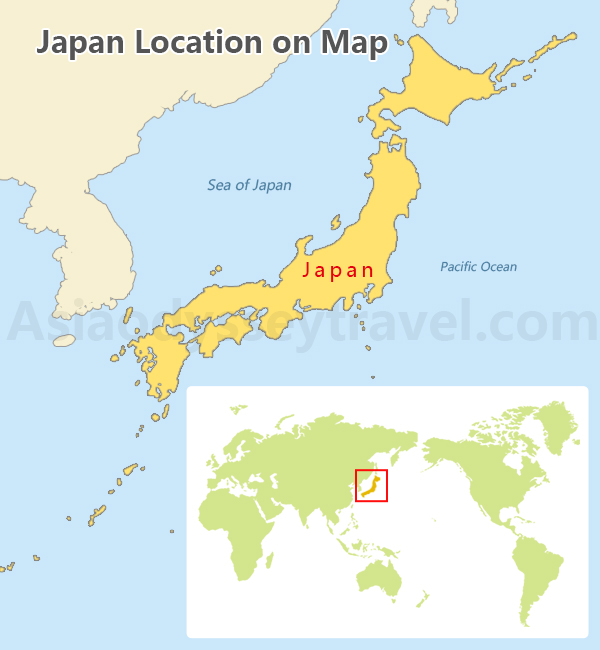
Surrounding Waters: Japan is bordered by the Sea of Japan to the west, the Sea of Okhotsk to the north, and the East China Sea to the southwest.
8 Days Classic Japan Tour with Mt. Fuji - Tokyo, Hakone, Kyoto, Nara & Osaka
Japan Map with Attractions - Top Japan Attractions on Map
Kanto region (tokyo, yokohama, and surroundings).
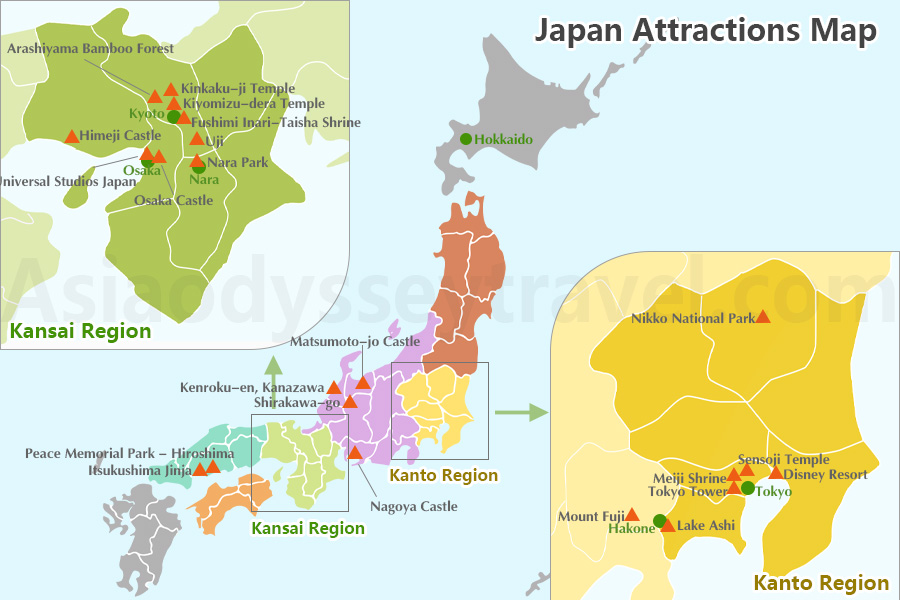
- Tokyo Skytree: Soar above the city for breathtaking views.
- Shibuya Crossing: Experience the iconic pedestrian scramble.
- Senso-ji Temple: Explore this historic temple and the bustling Nakamise shopping street.
- Meiji Shrine: Find peace and tranquility in this serene sanctuary.
- Mount Fuji : A majestic volcano and Japan's iconic symbol.
- Hakone : Enjoy hot springs, stunning scenery, and the Hakone Ropeway.
- Yokohama Landmark Tower: Soar above Yokohama for panoramic views.
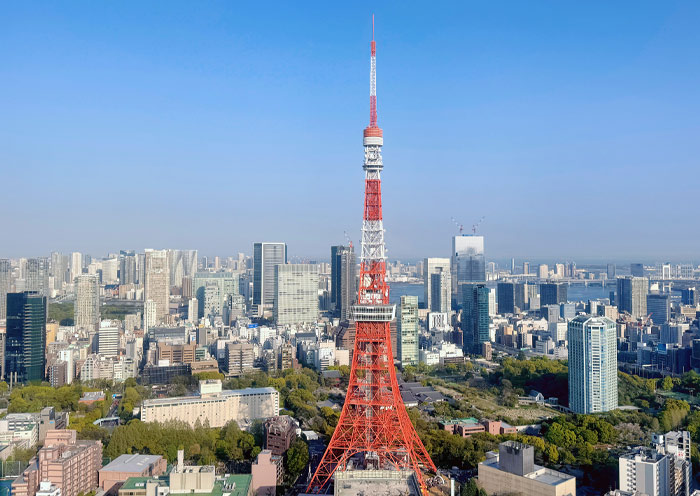
Kansai Region (Osaka, Kyoto, Nara, Kobe)
- Kiyomizu-dera Temple: A UNESCO World Heritage site with stunning views.
- Fushimi Inari-Taisha Shrine: Immerse yourself in the enchanting red torii gates.
- Osaka Castle: Explore this historic castle and its surrounding park.
- Kinkaku-ji Temple (Golden Pavilion): Admire the stunning golden temple.
- Arashiyama Bamboo Forest: Experience tranquility amidst nature.
- Gion District, Kyoto: Witness the charm of traditional Kyoto .
- Nara Park: Encounter friendly deer and visit Todai-ji Temple.
- Kobe Beef: Indulge in world-renowned wagyu beef.
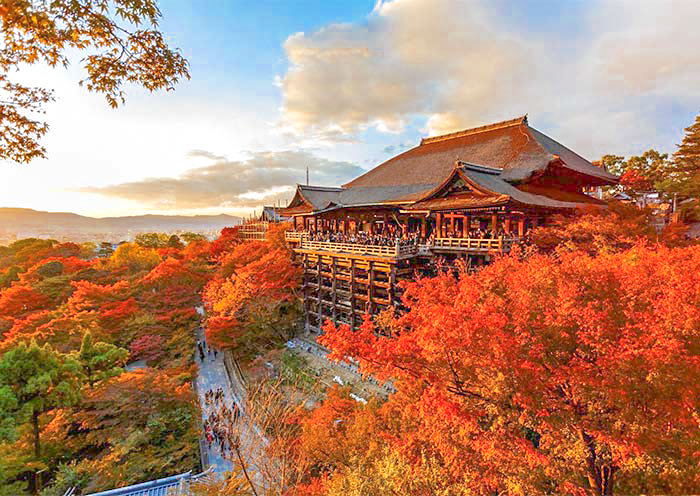
Other Regions
- Hiroshima Peace Memorial Park: A poignant reminder of peace.
- Miyajima Island (Itsukushima Shrine): Marvel at the floating torii gate.
- Okinawa: Enjoy beautiful beaches, crystal-clear waters, and marine life.
- Hokkaido: Experience stunning landscapes, hot springs, and fresh seafood.
- Sapporo: Enjoy winter sports, beer gardens, and the Odori Park.
- Nikko National Park: Explore stunning waterfalls, lakes, and temples.
- Takayama: Experience traditional Japanese culture and architecture.
- Kanazawa: Discover the Kenrokuen Garden and the samurai district.
- Naoshima: Explore contemporary art and architecture on this island.
- Matsumoto Castle: Visit one of Japan's most complete original castles.
Related Article: Tokyo Tourist Attractions | Things to Do & Places to Visit in Tokyo
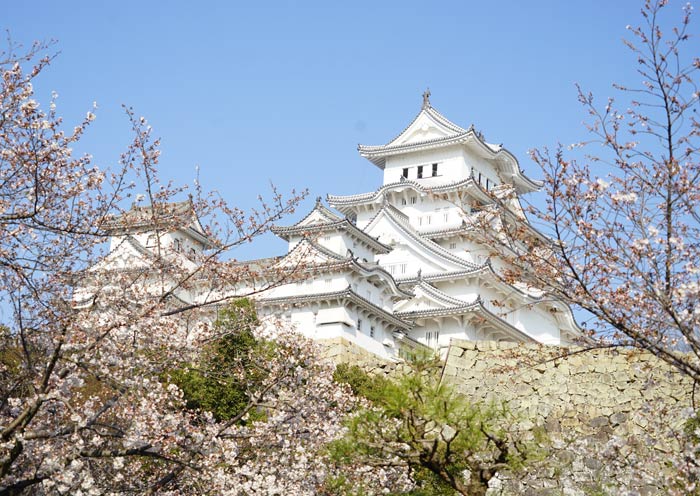
Japan Map with Major Cities
Japan boasts a number of vibrant and culturally rich cities. Here are some of the most prominent ones:
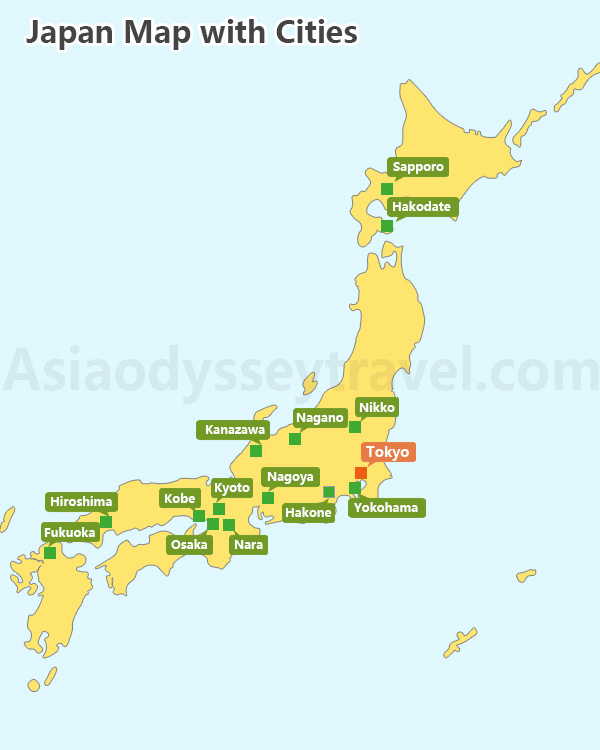
Major Metropolitan Areas
- Tokyo : The capital and largest city, offering a blend of tradition and modernity.
- Osaka : Known for its lively atmosphere, delicious food, and historical landmarks.
- Nagoya: A major industrial city with a rich cultural heritage.
- Yokohama: A port city with a modern skyline and diverse attractions.
- Kobe: Renowned for its beef, beautiful harbor, and international atmosphere.
- Sapporo: The capital of Hokkaido, offering a taste of northern Japan's culture and nature.
- Fukuoka: A bustling city with a strong regional identity and delicious food.
10 Days Japan Tour: New Golden Route with Hiroshima & Uji (Osaka to Tokyo)

Cultural and Historical Cities
- Kyoto : The ancient capital, famous for its temples, shrines, and traditional architecture.
- Nara : Home to historical landmarks like Todai-ji Temple and Nara Park.
- Kanazawa: Known for its well-preserved samurai district and beautiful gardens.
- Hiroshima : A city of peace and remembrance, with the Peace Memorial Park.
7 Days Japan Golden Route Tour in Small Group
These are just a few of the many fascinating cities Japan has to offer. Each has its own unique charm and attractions, making it a diverse and captivating country to explore.
Related Article: Most Beautiful Places in Japan | Top 15 Places to Visit in Japan
Japan Map with Airports
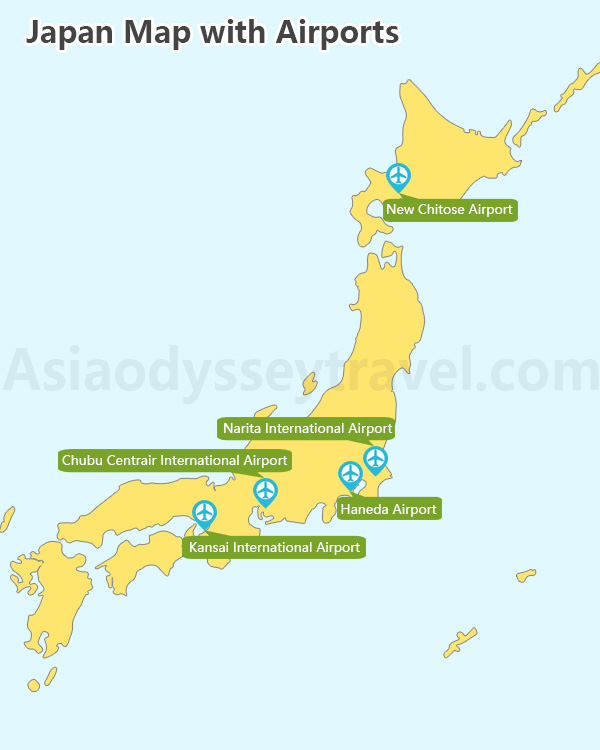
Japan has several major international airports that serve as gateways to the country. Here are some of the main international airports in Japan:
Narita International Airport (NRT):
Location: Located in Narita, Chiba Prefecture, serving the Greater Tokyo Area.
Note: One of the busiest airports in Japan handling a significant portion of international flights to and from Tokyo.
Haneda Airport (HND):
Location: Situated in Ōta, Tokyo , and also serving the Greater Tokyo Area.
Note: Haneda is known for its proximity to central Tokyo and is a major hub for domestic and international flights.
Kansai International Airport (KIX):
Location: Located on an artificial island in Osaka Bay, serving the Kansai region.
Note: One of the most important airports in western Japan , handling a large number of international flights.
Chubu Centrair International Airport (NGO):
Location: Situated on an artificial island in Ise Bay near Nagoya , serving the Chubu region.
Note: A major international gateway serving central Japan and a hub for both domestic and international flights.
New Chitose Airport (CTS):
Location: Serves Sapporo and is located in Chitose, Hokkaido .
Note: The main airport in Hokkaido, handling both domestic and international flights.
These airports play a crucial role in connecting Japan to the rest of the world, facilitating travel and tourism to different regions of the country.
10 Days Best Japan Group Tour with Stunning Highlights (Start from Osaka)
Japan Travel Map - Travel to Japan with Maps
Tokyo , Kyoto , and Osaka are the most popular cities for first-time visitors to Japan . A week-long trip can cover the highlights of these places. If you want to see more, like Mount Fuji or the ancient city of Nara , you'll need more time. Hiroshima is also a popular choice, with a start in Osaka.
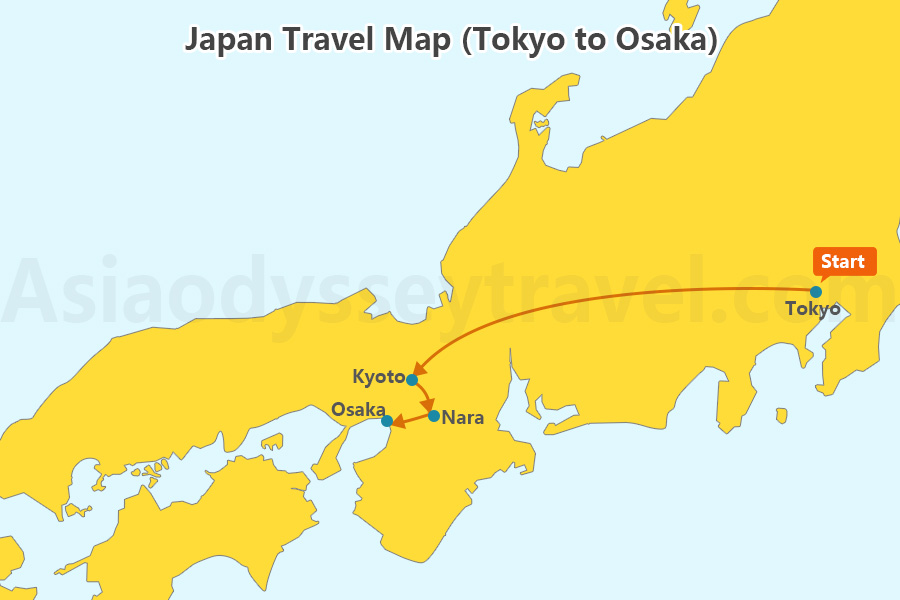
Option 1: Enter in Tokyo, Departure in Osaka
- Day 1: Arrive in Tokyo .
- Day 2: Explore Tokyo - Visit Meiji Shrine, Shibuya Crossing, Asakusa (Senso-ji Temple, Nakamise Shopping Street, Tokyo Skytree from afar), Akihabara (optional: visit a manga cafe), Tsukiji Market (optional: try sushi).
- Day 3: Take the Shinkansen to Kyoto .
- Day 4: Explore Kyoto - Visit Kinkaku-ji (Golden Pavilion), Nijo Castle, have lunch at Nishiki Market, in the afternoon visit Gion, Yasaka Shrine, Sannenzaka, Kiyomizu-dera.
- Day 5: Kyoto (Fushimi Inari Taisha) - Nara (Todai-ji Temple, Kasuga Taisha, Nara Park, Mt. Wakakusa) - Osaka .
- Day 6: Explore Osaka - Osaka Castle, Ukiyo-e Museum, food tour in Dotonbori and Shinsaibashi, visit Minami (Namba), Shintennoji Temple, Shinsekai (external view).
- Day 7: Depart from Osaka.
Related Article: Japan Itineraries 2025: 4 Days to 2 Weeks Japan Travel Itinerary
7 Days Japan Essential Tour: Tokyo Kyoto Nara Osaka (Basic Golden Route)
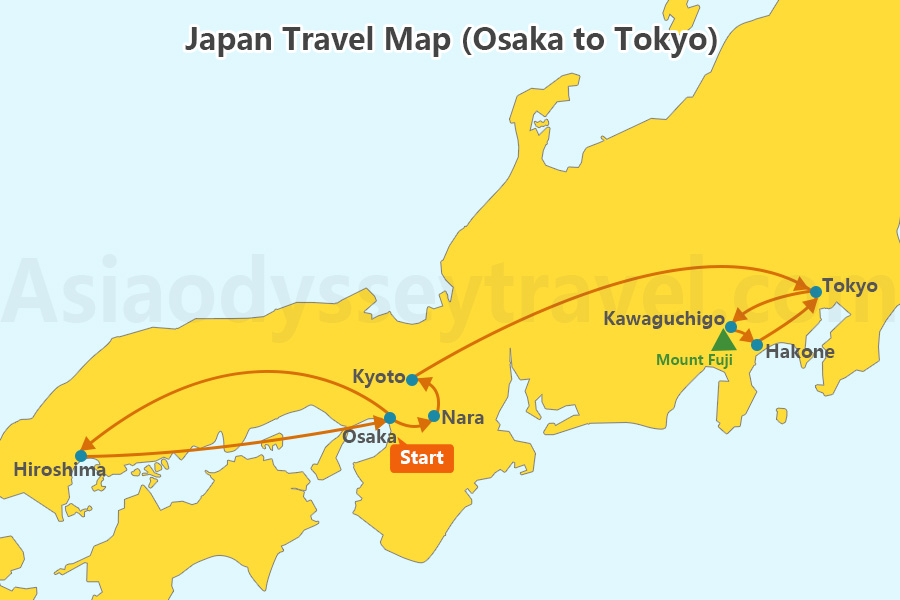
Option 2: Enter in Osaka, Departure in Tokyo
- Day 1: Arrive at Kansai International Airport, Osaka.
- Day 2: Explore Osaka - Visit Osaka Castle, Ukiyo-e Museum, food tour in Dotonbori and Shinsaibashi, Minami (Namba), Shintennoji Temple, Shinsekai (external view).
- Day 3: Osaka - Hiroshima - Osaka - Guided tour: take the Shinkansen to Hiroshima, visit the Atomic Bomb Dome, Hiroshima Peace Memorial Museum, Hiroshima Peace Memorial Park, and if time allows, Miyajima Island (Itsukushima Shrine).
- Day 4: Osaka - Uji - Nara - Kyoto : Nara (Todai-ji Temple, Kasuga Taisha, Nara Park), Uji (Byodoin Temple, Uji Bridge, Matcha Street).
- Day 5: Kyoto - Visit Fushimi Inari Taisha, Kiyomizu-dera, Sannenzaka, Yasaka Shrine, Gion & Hanamikoji. Optional activities: Kimono experience, Geisha performance, free time at Nishiki Market.
- Day 6: Kyoto - Morning in the city (Kinkaku-ji, Nijo Castle) and afternoon in Arashiyama (Sagano Scenic Railway, Bamboo Grove, Tenryu-ji Temple, Togetsukyo Bridge).
- Day 7: Take the Shinkansen to Tokyo .
- Day 8: Explore Tokyo - Visit Meiji Shrine, Shibuya Crossing, Asakusa (Senso-ji Temple, Nakamise Shopping Street, Tokyo Skytree from afar), Akihabara (optional: visit a manga cafe), Tsukiji Market (optional: try sushi).
- Day 9: Tokyo - Mt. Fuji - Hakone - Tokyo, Visit Mt. Fuji (5th Station, Lake Kawaguchi), Hakone (Owakudani Ropeway, Lake Ashi boat ride to see the floating torii gate) and return to Tokyo.
- Day 10: Depart from Tokyo.
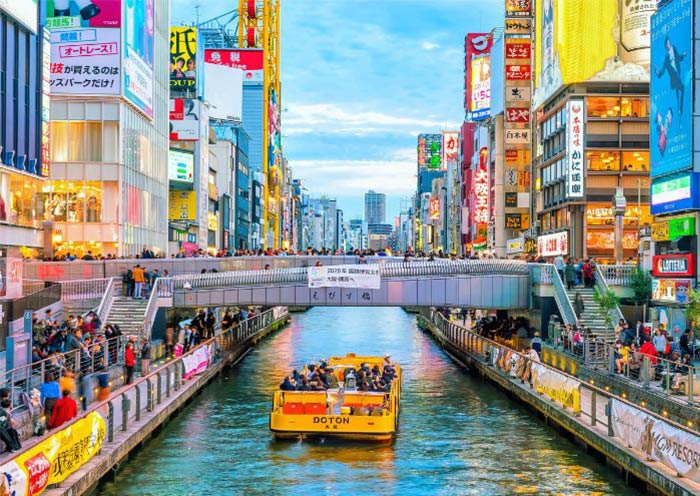
If you have any questions about this article, please contact us by submitting the following form and we'll immediately get back to you.
Ask Us for More Information
Related Travel Articles
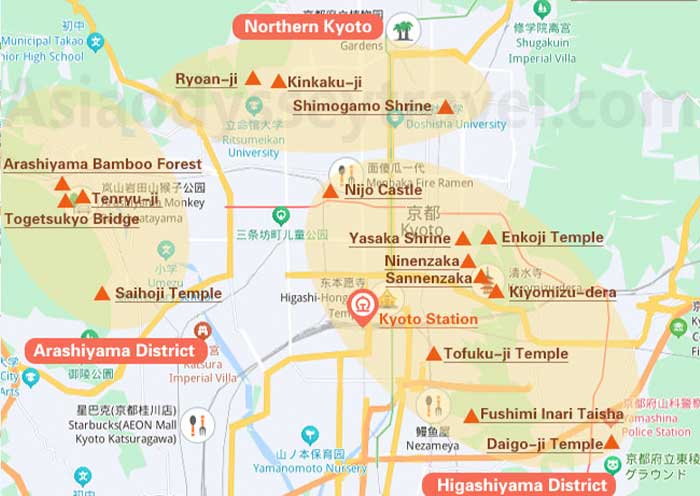
Are you planning a trip to Japan and looking for the absolute best things to do? This Japan Bucket List features over 230 incredible experiences and must dos in Japan covering all regions. There’s even a list of the best food experiences to be had in Japan!
If it’s your first-time visiting Japan then you’re in for a real treat. Japan is one of the most beautiful countries in the world to explore.
We usually recommend first-time visitors focus their time on these 5 destinations , however, there are actually many more must-do Japan experiences that you should not miss out on.
This Japan bucket list features loads of must-dos in Japan, covering not only the main tourist destinations such as Tokyo, Kyoto , Osaka, and Hiroshima but also has oodles of fun things to do in off-the-beaten-path locations that the vast majority of visitors tend to skip.
While you probably won’t be able to tick off all 230+ of these epic Japan experiences during your first visit , this list is designed to highlight the very best of Japan , so you can pick and choose which experiences you would like to do, depending on the regions you want to visit.
Whether you’re planning to stay for 7 days , 14 days, or longer in Japan. Or visit Japan in Summer, Spring, Autumn , or winter. This list of Japan must-dos covers amazing experiences for all seasons.
So, without further ado, let’s dive right in…
Here are the best bucket list things to add to your Japan itinerary!
Related articles you might like:
- The Ultimate Guide to Planning a Trip to Japan
- 20 Things to Know Before Visiting Japan for the First Time
- 5 Best Places to Visit in Japan for First Timers
- 30+ Places to Get Off the Beaten Path in Japan
- The Perfect 7 Day Japan Itinerary: 4 route options!
In This Post:
Download this Japan Bucket List for FREE!
Before we get started, you can download this bucket list for free to take with you on your trip and tick off items as you go!
You’ll also get exclusive access to a ton of free and useful travel resources including printable bucket lists, travel packing and preparation checklists, detailed travel itineraries, and detailed maps to access on-the-go directly from the Google Maps app on your phone!
Enter your details below (don’t worry, we won’t spam you) and check your inbox!

10 Must do Japan Experiences
- Take a ride on the world-famous Shinkansen bullet train.
- Visit a traditional Japanese hot spring (onsen) and relax in the natural mineral-rich waters.
- Take a stroll through one of Japan’s many beautiful gardens.
- Witness the skill of sumo wrestlers at a sumo tournament or training stable.
- See the beauty of Japan during Sakura (cherry blossom season).
- Go skiing in the Japanese Alps.
- Attend a traditional tea ceremony and learn about the art and culture of tea in Japan.
- Watch a kabuki performance – a traditional form of Japanese theater.
- Take a cooking class and learn how to make traditional Japanese dishes like sushi or tempura.
- Experience Japan’s obsession with karaoke.
Japan Bucket List by Region

Tokyo & Kanto Region
- Visit the iconic Tokyo Skytree tower for panoramic views of the city.
- Explore the historic Asakusa district in Tokyo, home to the famous Senso-ji temple.
- Take a stroll through the stunning gardens at the Imperial Palace in Tokyo.
- Visit the Meiji Shrine, a peaceful oasis in the heart of Tokyo’s bustling Shibuya district.
- Check out the trendy Harajuku district in Tokyo for unique fashion, street food, and shopping.
- Take a day trip to the beautiful city of Kamakura, home to many ancient temples and shrines.
- Explore the charming town of Hakone, famous for its hot springs, onsen, and stunning views of Mount Fuji.
- Wander down Memory Lane (Omoide Yokocho) in Shinjuku
- Take a cruise on Lake Ashi and admire the stunning scenery.
- Visit the breathtaking Tokyo Tower for amazing views of the city.
- Visit the Nikko Toshogu Shrine, a UNESCO World Heritage Site and one of Japan’s most ornate shrines.
- Experience Tokyo’s bustling nightlife in the vibrant neighbourhood of Shinjuku.
- Try the freshest seafood at the famous Tsukiji Fish Market in Tokyo.
- Check out the cutting-edge contemporary art at the Mori Art Museum in Roppongi Hills.
- Take a stroll through the beautiful gardens at Shinjuku Gyoen National Garden in Tokyo.
- Visit the breathtaking Akihabara district in Tokyo, famous for its anime, manga, and electronics.
- Explore the charming town of Kawagoe, known as “Little Edo” for its well-preserved traditional architecture.
- Go shopping in the Ginza district, known for its luxury boutiques and department stores.
- Visit the Tokyo National Museum for an in-depth look at Japanese history and culture.
- Try delicious street food at the Yurakucho Yakitori Alley in Tokyo.
- Visit the quirky Robot Restaurant in Shinjuku for an unforgettable dinner and show.
- Experience the bustling energy of the Shibuya Crossing, one of the busiest intersections in the world.
- Check out the Yokohama Chinatown, the largest Chinatown in Japan.
- Take a relaxing hot spring bath at the Kusatsu Onsen in Gunma Prefecture.
- Visit the Hitachi Seaside Park in Ibaraki Prefecture for its stunning seasonal flowers and panoramic views.
- Explore the scenic hiking trails at the Takao-san mountain in Tokyo.
- Take a tour of the Kirin Beer factory in Yokohama.
- Visit the Hasedera Temple in Kamakura for its stunning ocean views and ancient Buddhist statues.
- Go on a scenic train ride on the Hakone Tozan Railway.
- Take a relaxing boat ride along the Sumida River.
- Explore the vibrant Nakameguro district, known for its cherry blossoms in spring.
- Visit the Edo-Tokyo Museum for an in-depth look at the city’s history and culture.
- Visit the beautiful Kiyosumi Gardens, a peaceful oasis in the heart of the city.
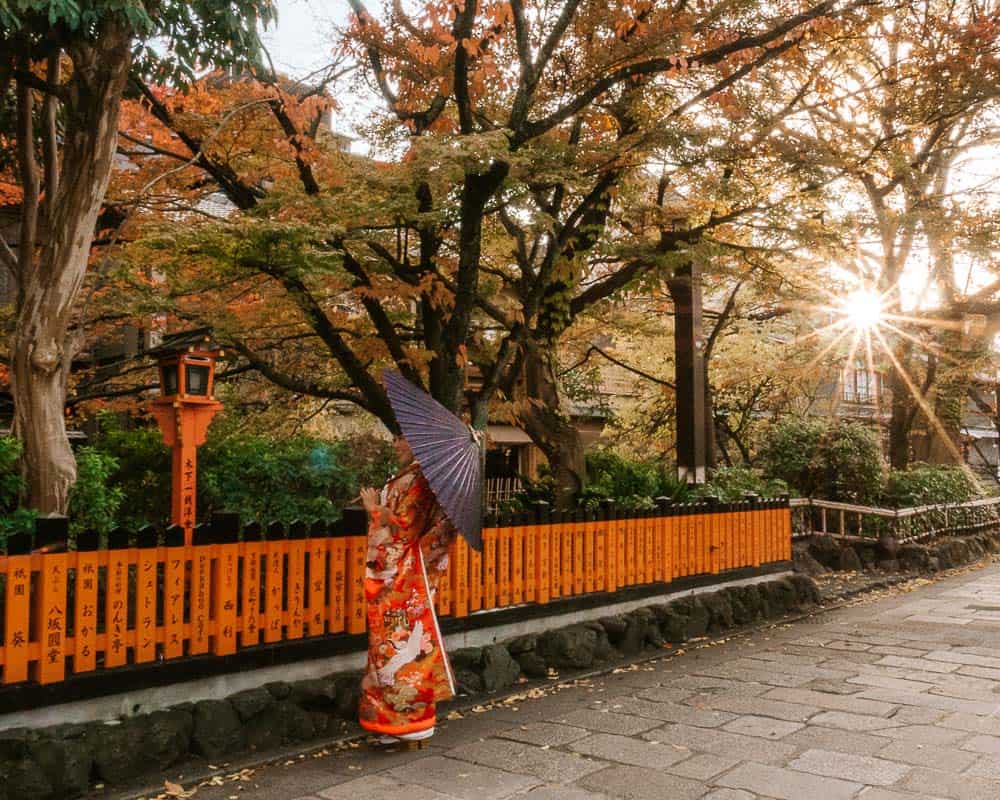
Kyoto, Osaka & Kansai Region
- Visit the iconic Osaka Castle, one of Japan’s most famous landmarks.
- Explore the historic Nara Park and feed the friendly deer.
- Take a stroll through the beautiful gardens at the Katsura Imperial Villa in Kyoto.
- Visit the impressive Himeji Castle, a UNESCO World Heritage Site.
- Explore the vibrant Dotonbori district in Osaka, known for its nightlife, food, and shopping.
- Visit the beautiful Tofukuji Temple in Kyoto during autumn to see the stunning fall foliage.
- Take a day trip to the charming town of Arashiyama, known for its Bamboo Grove and Monkey Forest.
- 35. Take a tour of the Suntory Yamazaki Distillery, known for its world-class whisky.
- Dress up in a kimono and wander through the historic Higashiyama district in Kyoto.
- Visit the stunning Itsukushima Shrine on Miyajima Island, a UNESCO World Heritage Site.
- Take a relaxing boat ride along the scenic Hozugawa River.
- Visit the beautiful Kinkakuji Temple, also known as the Golden Pavilion.
- Check out the vibrant nightlife in the Nakazaki-cho and Ura Namba districts in Osaka.
- Explore the stunning gardens at the Ritsurin Koen in Takamatsu.
- Visit the famous Fushimi Inari Shrine in Kyoto, known for its thousands of torii gates.
- Take a day trip to the charming town of Hikone, known for its impressive castle and scenic views.
- Hike the famous Kumano Kodo pilgrimage trail.
- Visit the beautiful Kasuga Taisha Shrine in Nara, known for its thousands of stone lanterns.
- Explore the trendy Amerikamura district in Osaka, known for its unique fashion and street culture.
- Take a stroll through the picturesque town of Kinosaki Onsen, known for its hot springs and traditional atmosphere.
- Visit Japan’s most famous Moss Garden, Sahio-Ji in Kyoto
- Visit the beautiful Nijo Castle in Kyoto, known for its stunning architecture and gardens.
- Check out the vibrant nightlife in the Shinsaibashi district in Osaka.
- Wander along the Philosopher’s Path in Kyoto during Sakura
- Take a day trip to the scenic Koyasan, a UNESCO World Heritage Site and home to many temples.
- Visit the stunning Hikone Castle, one of Japan’s best-preserved castles.
- Take a relaxing bath at one of the many hot springs in the Arima Onsen district in Kobe.
- Visit the beautiful Byodoin Temple in Uji, known for its stunning architecture and gardens.
- Explore the historic town of Tsumago-juku, one of the best-preserved post towns on the Nakasendo trail.
- Take a day trip to the scenic Amanohashidate, known for its stunning sandbar and views.
- Visit the stunning Kiyomizu-dera Temple in Kyoto, known for its beautiful views and architecture.
- Visit the beautiful Ishiyama-dera Temple in Otsu.
- Visit the Shinto shrine of Izumo Taisha in Shimane Prefecture, known as one of Japan’s most important shrines.
- Explore the beautiful Wakayama Castle.
- Go hunting for Giesha or Maiko in Gion, Kyoto.
- Explore the vibrant nightlife and food scene in the port city of Kobe.
- Visit the historic Silver Temple (Ginkaku-Ji) in Kyoto
- Sample traditional Japanese delicacies at the Nishiki Market in downtown Kyoto.
- Tour the stunning grounds of Kodai-Ji temple in Kyoto.
- Take a wander down the Sanneizaka and Nineizaka Paths in Kyoto.
- Wander the grounds of Daigo-Ji temple in Fushimi Ward during Autumn.
- Visit the beautiful Lake Biwa, the largest freshwater lake in Japan, and explore its surrounding towns and attractions.
- Visit the scenic Ise-Shima National Park, which is known for its beautiful coastline and traditional seafood cuisine.
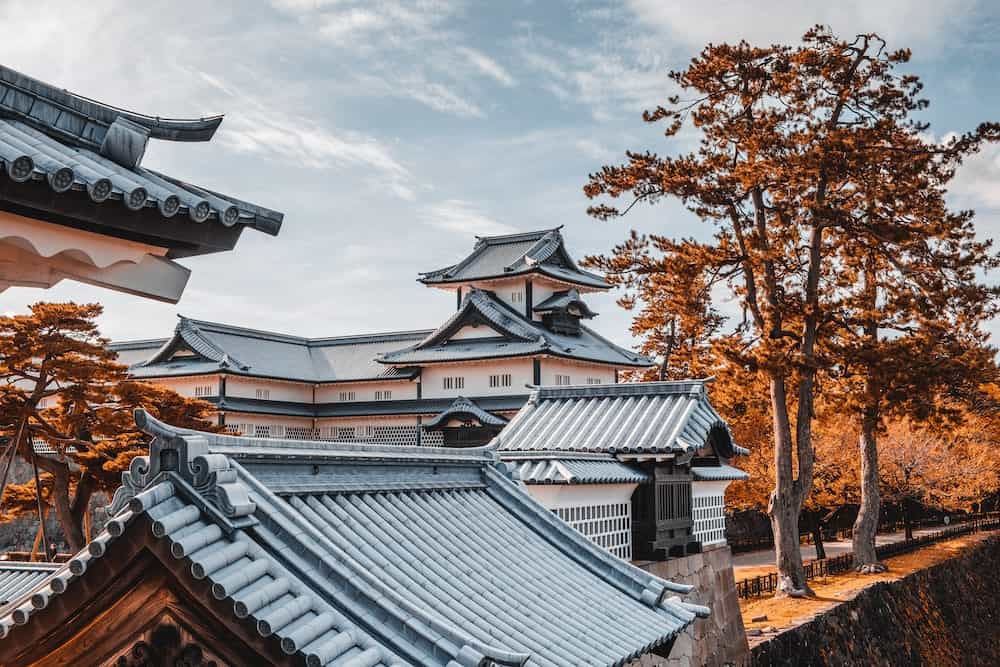
Chubu Region
- Visit the historic city of Takayama and explore its traditional streets and temples.
- Hike the beautiful Tateyama Kurobe Alpine Route, which features stunning scenery and a variety of transportation options.
- Visit the iconic Matsumoto Castle, one of Japan’s most beautiful castles.
- Explore the charming city of Kanazawa, which is known for its traditional crafts and beautiful gardens.
- Visit the UNESCO World Heritage Site of Shirakawa-go, a picturesque village with traditional thatched-roof houses.
- Visit the impressive Kenrokuen Garden in Kanazawa, one of the three most beautiful gardens in Japan.
- Hike the beautiful Kamikochi Valley, which is located in the Japanese Alps.
- Explore the charming town of Tsumago, which is located on the Nakasendo historic trail.
- Take a scenic train ride on the Oigawa Railway, which runs through beautiful mountain scenery in Shizuoka Prefecture.
- Explore the historic town of Gujo Hachiman, which is known for its traditional waterways and dance festivals.
- Take a day trip to the stunning Izu Peninsula, known for its hot springs, beaches, and scenic hiking trails.
- Visit the stunning Takato Castle Park in Nagano Prefecture, which is famous for its cherry blossom festival.
- Explore the historic town of Inuyama, which features a beautiful castle and traditional streets.
- Take a scenic train ride on the Iseji line, which runs along the coast of Mie Prefecture.
- Visit the UNESCO World Heritage Site of Iwami Ginzan Silver Mine, which is located in Shimane Prefecture and features historic mining facilities and beautiful scenery.
- Take a trip to the Kiso Valley, which is known for its traditional post towns and scenic hiking trails.
- Visit the iconic Nagoya Castle, one of Japan’s most famous castles.
- Explore the city of Nagano, which hosted the Winter Olympics in 1998 and is known for its many outdoor activities and hot springs.
- Visit the impressive Gujo Falls, one of the largest waterfalls in Japan, located in Gifu Prefecture.
- Explore the historic city of Gifu, which is known for its traditional cormorant fishing on the Nagara River.
- Take a trip to the stunning Kurobe Gorge, which features beautiful scenery and a scenic train ride.
- Explore the city of Toyama, which is known for its rich cultural heritage and beautiful scenery.
- Visit the UNESCO World Heritage Site of Fujisan, located in Yamanashi Prefecture, and hike or climb Mount Fuji.
- Explore the historic city of Kanonji, which is located in Kagawa Prefecture and is known for its many temples and shrines.
- Visit the beautiful Lake Suwa, located in Nagano Prefecture, and explore its surrounding towns and attractions.
- Check out the unique art installations at the Echigo-Tsumari Art Field in Niigata Prefecture.
- Take a trip to Sado Island, Japan’s stunning “Butterfly Island”.
- Go on a thrilling roller coaster ride at the Fuji-Q Highland amusement park.

Hiroshima & Chugoku Region
- Visit Hiroshima Peace Memorial Park and Museum
- Explore Miyajima Island and its iconic torii gate
- Take a scenic drive through the Seto Inland Sea
- Visit the Kintaikyo Bridge in Iwakuni
- Hike the trails of Mount Misen on Miyajima Island
- Visit the historic city of Hagi and its samurai district
- Take a scenic train ride on the Sanin Main Line
- Visit the Okayama Korakuen Garden
- Visit the stunning Tottori Sand Dunes in Tottori Prefecture, one of Japan’s largest sand dune systems.
- Explore the castle ruins of Okayama Castle
- Visit the Mazda Museum in Hiroshima
- Go to the Hiroshima Food Market and try Hiroshima-style okonomiyaki
- Take a day trip to the island of Naoshima, famous for its contemporary art museums
- Try the local specialty of Hiroshima-style tsukemen (dipping noodles)
- Visit the Adachi Museum of Art in Shimane Prefecture for its stunning gardens and Japanese art collection.
- Go on a sake brewery tour in the town of Saijo
- Visit the Itsukushima Shrine on Miyajima Island and see the traditional Japanese wedding ceremonies.
- Visit the Akiyoshi Cave and limestone plateau in Yamaguchi
- Explore the historic streets of Kurashiki Bikan district in Okayama
- Take a boat ride to see the floating torii gate at Motonosumi Inari Shrine in Yamaguchi
- Visit the Hiroshima Castle and its surrounding park
- Go on a cycling tour around the Setouchi region, including islands such as Shodoshima and Oshima.

Shikoku Region
- Walk the 88 Temple Pilgrimage Trail that circles the island, visiting the many beautiful temples along the way.
- Visit the Ritsurin Garden in Takamatsu, one of the most famous gardens in Japan.
- Explore the Iya Valley, known for its natural beauty and historic vine bridges.
- Take a dip in the famous outdoor hot springs of Dogo Onsen in Matsuyama, the oldest hot spring resort in Japan.
- Hike the beautiful Mount Ishizuchi, the highest mountain in western Japan.
- Visit the Naruto Whirlpools in Tokushima, one of the most famous natural attractions in Japan.
- Take a boat tour of the Oboke Gorge, a scenic area of rapids and steep cliffs.
- Explore the historic city of Kochi, with its castle, museum, and beautiful coastline.
- Visit the stunning Kotohira-gu Shrine, also known as Konpira-san, which has been a popular pilgrimage site for over 1,000 years.
- Explore the historic town of Uchiko, which has many well-preserved Edo-era buildings.
- Visit the Tsurugisan Quasi-National Park, which is home to the beautiful Tsurugi-san mountain and other natural wonders.
- Try the local specialty of Sanuki udon noodles in Kagawa prefecture, which are famous throughout Japan.

Okinawa & Kyushu Region
- Visit the Nagasaki Peace Park and Atomic Bomb Museum
- Take a dip in the famous hot springs of Beppu
- Explore the historic city of Kumamoto and its castle
- Visit the unique sand baths of Ibusuki
- Take a scenic train ride on the Yufuin no Mori train
- Visit the active volcano of Mount Aso
- Explore the historic city of Nagasaki and its Glover Garden
- Take a day trip to the beautiful island of Yakushima
- Visit the impressive Takachiho Gorge and its waterfalls
- Try the local specialty of Kumamoto ramen
- Visit the stunning Dazaifu Tenmangu Shrine in Fukuoka
- Explore the hot springs and sand dunes of Amami Oshima
- Visit the Huis Ten Bosch theme park, which is modeled after a Dutch town
- Take a boat tour to see the beautiful Hashima island in Nagasaki
- Try the famous beef from Miyazaki prefecture.
- Snorkel or dive in the crystal clear waters around the Kerama Islands
- Visit the Shurijo Castle, a UNESCO World Heritage Site and the former palace of the Ryukyu Kingdom
- Explore the Churaumi Aquarium, which is one of the largest in the world and home to many rare marine species
- Take a walk on the beautiful white sand beach of the tropical island of Ishigaki
- Visit the Okinawa World theme park to see the Gyokusendo Cave and experience traditional Okinawan culture.

Hokkaido Region
- Visit the Sapporo Beer Museum and try Hokkaido’s famous beer
- Go skiing or snowboarding in Niseko or Rusutsu
- Relax in the natural hot springs (onsen) at Jozankei or Noboribetsu
- Visit the Sapporo Snow Festival in February
- See the famous red-crowned cranes at the Kushiro Marshland
- Take a scenic drive along the coast in Shakotan or Otaru
- Visit the stunning Blue Pond in Biei
- Go whale watching in Rausu
- Visit the stunning Shiretoko National Park, a UNESCO World Heritage Site
- Take a ride on the Hakodate Ropeway and see the stunning night view
- Visit the Asahiyama Zoo and see the adorable penguins and polar bears
- Go horseback riding through the fields in Furano
- Visit the Ainu Museum in Shiraoi and learn about the indigenous people of Hokkaido
- Go hiking in Daisetsuzan National Park, Japan’s largest national park
- See the colorful flower fields in Furano and Biei during the summer months
- Try Hokkaido’s famous seafood, such as king crab and sea urchin
- Visit the Otaru Canal and explore the historic buildings and shops
- Go kayaking or canoeing on the Shiretoko Five Lakes
- Visit the Shikotsu-Toya National Park and see the stunning caldera lakes
- Take a relaxing boat ride on Lake Akan and see the Marimo, a rare and protected algae
- Visit the Sapporo Clock Tower, a symbol of Hokkaido’s history and culture.
Tohoku Region
- Visit the UNESCO World Heritage Site of Hiraizumi, which features historic temples and gardens.
- Explore the city of Sendai, which is the largest city in the Tohoku region and is known for its cultural attractions and seafood cuisine.
- Visit the scenic Oirase Gorge, located in Aomori Prefecture, which features beautiful waterfalls and hiking trails.
- Explore the historic town of Hirosaki, which is known for its beautiful cherry blossom festival in the spring.
- Visit the iconic Zao Fox Village, located in Miyagi Prefecture, which features a large number of foxes in a natural habitat.
- Take a scenic train ride on the Aoimori Railway, which runs through beautiful coastal scenery in Aomori Prefecture.
- Visit the stunning Matsushima Bay, which is known for its beautiful scenery and historic temples.
- Explore the city of Yamagata, which is known for its hot springs and skiing opportunities in the winter.
- Visit the beautiful Oga Peninsula, which is known for its traditional festivals and beautiful coastline.
- Explore the historic town of Kakunodate, which features many traditional samurai houses and is known for its autumn foliage.

Japanese Food Bucket List
- Sushi – fresh and flavorful seafood served on bite-sized portions of vinegared rice.
- Ramen – a hearty noodle soup made with a rich, savory broth and various toppings like pork, egg, and vegetables.
- Tempura – crispy, deep-fried seafood or vegetables in a light batter.
- Okonomiyaki – a savory pancake made with cabbage, flour, eggs, and various toppings like pork, shrimp, and cheese.
- Yakitori – skewered and grilled chicken, often served with a variety of sauces and seasonings.
- Tonkatsu – deep-fried breaded pork cutlet, served with a tangy sauce and rice.
- Udon – thick and chewy wheat flour noodles in a flavorful broth, often served with various toppings like tempura or eggs.
- Takoyaki – small, ball-shaped snacks made with batter and diced octopus, often topped with sauce, mayonnaise, and bonito flakes.
- Mochi – soft and chewy rice cakes, often filled with sweet bean paste or fruit.
- Shabu-shabu – a hot pot dish featuring thinly sliced beef or pork, vegetables, and noodles cooked in a flavorful broth.
- Soba – thin and nutty buckwheat noodles, often served cold with dipping sauce or hot in a broth.
- Onigiri – rice balls filled with various fillings like pickled plum, tuna, or salmon.
- Oden – a hearty stew featuring various ingredients like boiled eggs, daikon radish, and fish cakes simmered in a flavorful broth.
- Katsu curry – breaded pork cutlet served with Japanese-style curry sauce and rice.
- Matcha – finely ground green tea leaves, often used in traditional Japanese tea ceremonies and used to flavor desserts and drinks.
- Kobe beef – premium, high-quality beef known for its marbling and tenderness.
- Miso soup – a flavorful soup made with fermented soybean paste and various ingredients like tofu and seaweed.
- Kaiseki – a traditional multi-course Japanese meal, featuring beautifully presented small dishes made with seasonal ingredients.
- Sashimi – thinly sliced raw seafood served with soy sauce and wasabi.
- Tonkotsu ramen – a rich and creamy pork bone broth-based ramen, often served with chashu pork and marinated soft-boiled eggs.
- Gyoza – pan-fried or steamed dumplings filled with minced pork, cabbage, and other ingredients.
- Yakiniku – Japanese-style grilled meat, often served with dipping sauces and side dishes like rice and vegetables.
- Taiyaki – fish-shaped cakes filled with sweet red bean paste or other fillings like custard or chocolate.
- Anago – grilled or simmered saltwater eel, often served with a sweet and savory sauce and rice.
- Katsuobushi – dried and smoked bonito fish flakes, often used to flavor soups and other dishes.
- Nikujaga – a hearty stew made with beef, potatoes, and onions in a sweet and savory sauce.
- Mitarashi dango – skewered rice dumplings brushed with a sweet soy sauce glaze.
- Ichigo daifuku – mochi filled with sweet red bean paste and a fresh strawberry.
- Ochazuke – a comforting dish made with rice, tea, and various toppings like salmon or pickled plum.
- Kakiage – a type of tempura made with mixed vegetables and seafood, often served as a topping for udon or soba noodles.
- Chirashi sushi – a colorful and flavorful dish made with sushi rice and various toppings like raw fish, egg, and vegetables.
- Oyakodon – a savory rice bowl dish made with chicken, egg, and onions in a sweet and savory sauce.
- Hiyashi chuka – a refreshing cold noodle dish topped with various vegetables, meat, and a sweet and tangy sauce.
- Melonpan – a sweet and crispy bread bun topped with a cookie dough-like crust.
- Karage – bite-sized pieces of deep-fried chicken, often served as a snack or appetizer.
- Dango – small round rice dumplings served on a skewer with various toppings like sweet soy sauce or sesame seeds.
- Zaru soba – chilled buckwheat noodles served with a savory dipping sauce and various toppings like wasabi and green onions.
- Wagashi – traditional Japanese sweets made with ingredients like mochi, bean paste, and fruit, often served with tea.
Have we missed a spot? Can you recommend any other great Japan Bucket List ideas for other readers to check out, let us know in the comments below!
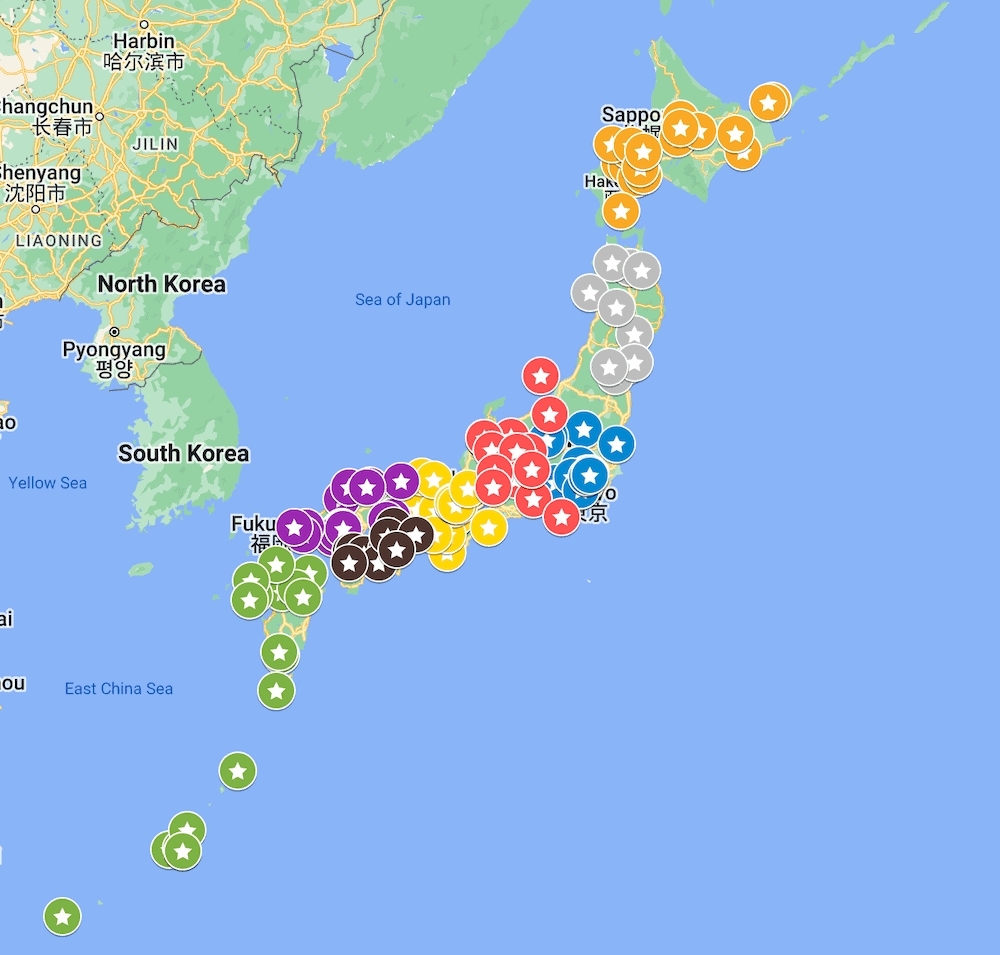
Map of Must dos in Japan
Are you planning a trip to Japan soon? We’ve created a handy Japan Bucket List Map that you can download for your trip. This map uses Google Maps so you can save to your phone and access it on-the-go using the Google Maps App.
This Japan Map below features all the top must do things in Japan that are listed in this article, plus many more. To get free access to this map to use on-the-go, click here to sign up to our Travel Resource Library.
Ready to Book Your Trip to Japan?
Japan is one of the world’s top Bucket List Destinations and one we highly recommend everyone visits at least once in their lifetime. We hope this Japan Bucket List has given you some inspiration to start planning your own trip to Japan !
To help you with your planning, we have a ton of other Japan travel blog articles featuring loads of handy tips and tricks. We recommend starting here:
Read More About Japan:
- The Ultimate Guide to Planning a Trip to Japan for First Timers
- The Ultimate Japan Bucket List: 230+ Experiences
- 20 Things You Should Know before Visiting Japan for the First Time
Last but not least… Have a great trip to Japan!
Feeling inspired? Here are 10 amazing destinations you must add to your Travel Bucket List !
Share This Post:
Get Access to our FREE Travel Resources Library!
Subscribe and get exclusive access to loads of printable planning checklists, maps, itineraries, destination bucket lists, and more!
You’ll Also Love

The Ultimate Japan Travel Guide for First Timers: How to Plan Your Trip!
- Destinations
- Travel Guides
- Travel Itineraries
- Travel Tips
- Accommodation
Join Our Newsletter
And get exclusive access to our FREE Travel Planning Resources!
- Work With Us
- Disclosure Policy
- Terms & Conditions
- Privacy Policy
Copyright © 2024 Bucket List Seekers
Privacy Overview
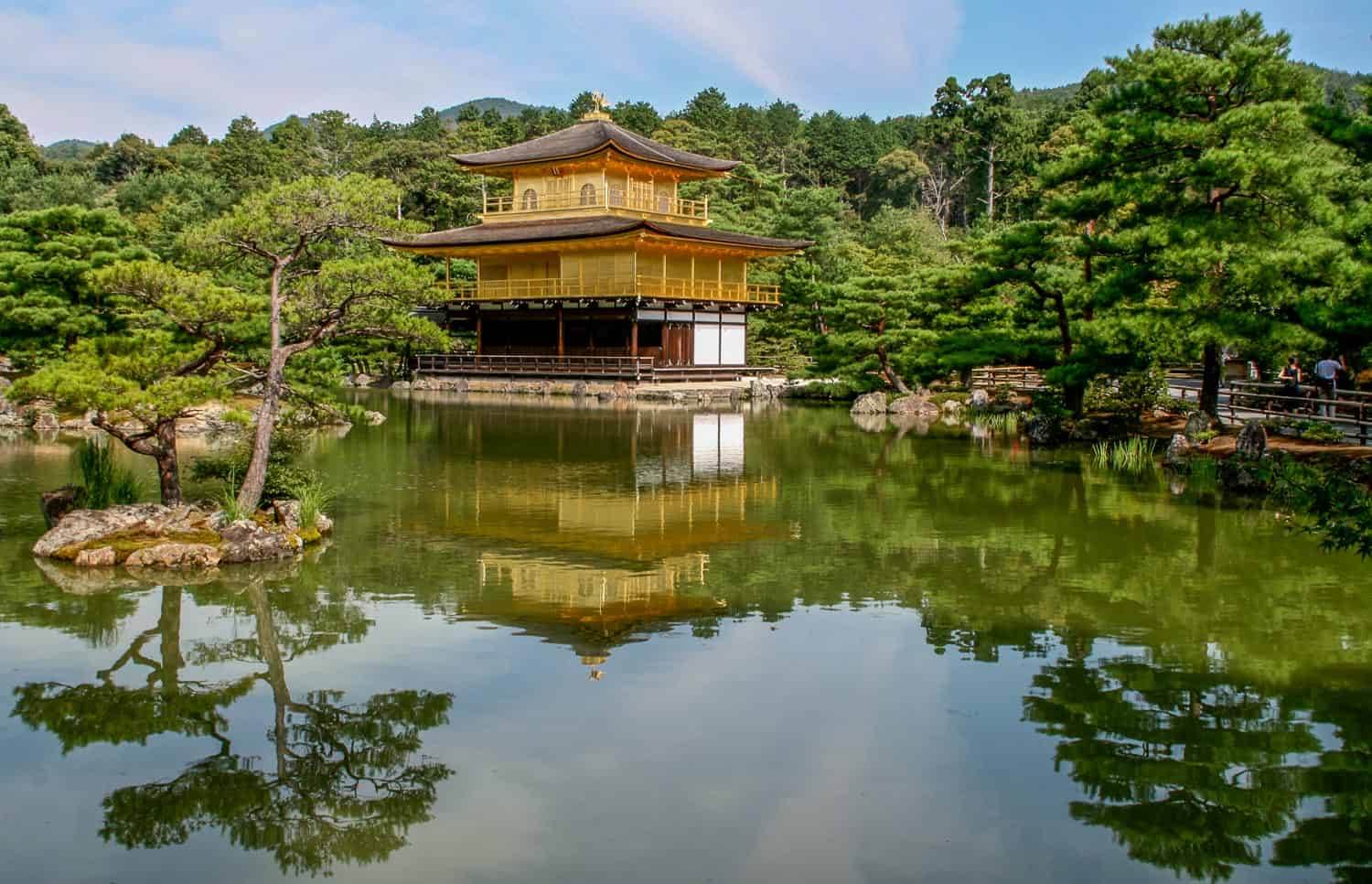
16 Unmissable Places to Visit in Japan in 2024
This page contains affiliate links. Please read our disclosure for more info.
Japan is somewhere I think everyone should visit. From futuristic skyscrapers to tranquil bamboo forests and neon arcades to serene temples, it’s like nowhere else on the planet.
The food is incredible, the people are ultra polite, and it has one of the most efficient public transport systems in the world. We love the combination of ease of travel and glorious bewilderment.
Japan has so much to offer but where should you start? These are our picks for the 10 best places to visit in Japan, perfect for your first or second trip to the country (plus extra suggestions for the repeat visits that are likely to happen!).
I’ve included our favourite things to do in each place, how long to spend there, and where we stayed. At the end of the post you’ll find a map of all these Japan destinations to start planning your route.
I recommend mixing a few of the popular cities (most people won’t want to miss Tokyo and Kyoto) with some quieter, more rural places in Japan to see a different side of the country and take a break from the crowds.
Video of Japan Must Sees
Top places to visit in japan, more amazing japan destinations, and a few more places to go in japan, best places to visit in japan map, japan travel tips.
Watch our short video for ideas on where to go in Japan for an amazing trip.
Back to Contents
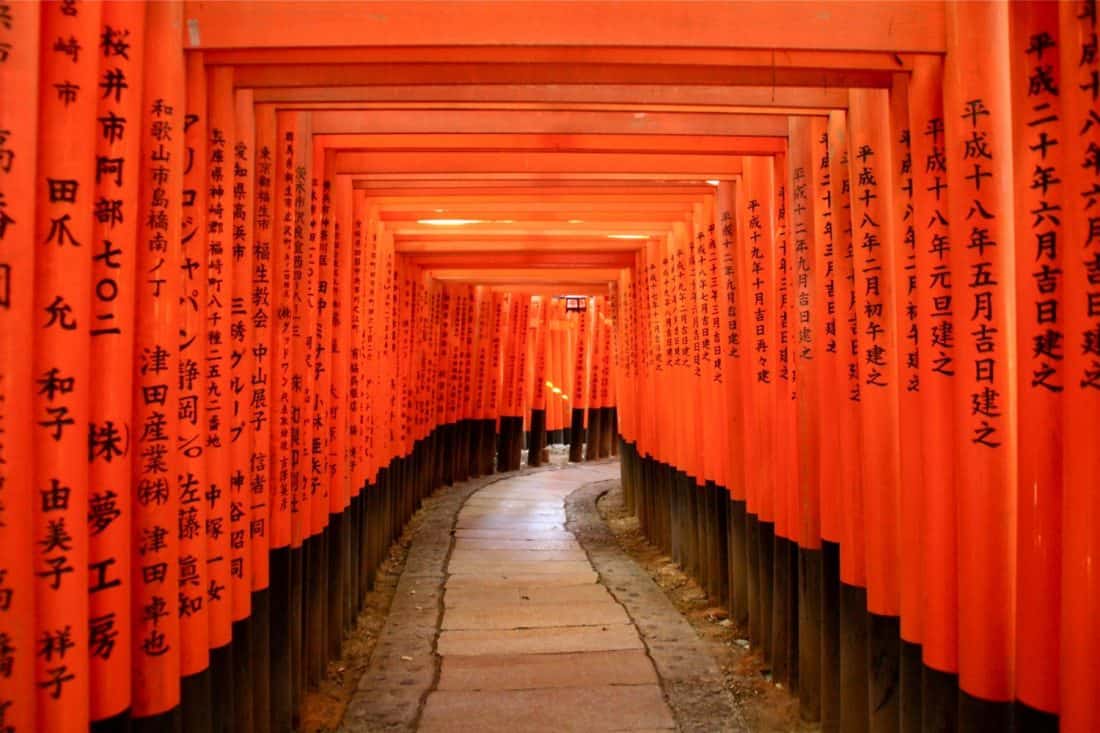
If you only have time for one Japan destination, make it Kyoto.
This is traditional Japan as you imagined it—geisha in brightly coloured kimonos emerging from wooden teahouses, forests of bamboo, temples and shrines in gold and silver and scarlet, raked gravel Zen gardens, intricate feasts served on lacquered plates, graceful tea ceremonies, and markets full of intriguing but unidentifiable ingredients.
The concrete high-rises of downtown Kyoto can be disappointing, so head out towards the mountains to the surrounding neighbourhoods where you’ll find narrow stone streets, old wooden houses, monks in flowing robes, and the sounds of chanting and gongs from the many temples and shrines.
Gion is the place to spot geisha, Higashiyama has many beautiful temples to explore, and Arashiyama, up in the western hills, is one of the most traditional neighbourhoods and home to bamboo groves, quirky temples, and monkeys.
Kyoto is one of the top Japan tourist spots, so try to visit the popular temples early in the morning as they do get crowded.
In Kyoto don’t miss:
- Wandering through the red torii gates of Fushimi Inari shrine.
- Drinking matcha in a traditional tea ceremony. We loved Tea Ceremony Ju-An at Jotokuji Temple.
- Learning to cook traditional Japanese cuisine in a Kyoto cooking class .
- Taking the train to the village of Kibune and walking across the valley to the beautiful Kurama-dera temple.
- Retreating from the busy streets of Gion to the magical Yasaka-jinja at night.
- Strolling the Philosopher’s Path.
- Experiencing Zen Buddhist cuisine at the Tenryu-ji temple.
- Getting off the beaten track at the quirky Otagi Nenbutsuji temple .
- Exploring these magical Kyoto cherry blossom spots if you visit in late-March or early-April.
- Enjoying the magnificent autumn colours if you visit in mid to late-November (Eikando and Enkoji are our favourite temples in autumn).
How Long to Spend: 3 nights minimum but 5 nights would be better. We’ve spent two months in Kyoto and still haven’t done everything! A longer stay also allows you to avoid the crowds more easily (you have more early mornings available) and take some of these wonderful day trips from Kyoto .
Read: Our post on the many amazing things to do in Kyoto (and how to avoid the crowds) and our guide to Kyoto’s temples and shrines and the best vegetarian restaurants in Kyoto
Where to stay in Kyoto: For a traditional ryokan, we loved our huge suite with private bath overlooking the garden at Ryokan Yachiyo near Nanzenji temple. At central Sora Niwa Terrace we enjoyed the amazing view from its onsen and rooftop bar. Or in a quiet part of Gion, Hotel The Celestine is stylish and close to temples. See our guide to where to stay in Kyoto for detailed hotel reviews and neighbourhood tips.
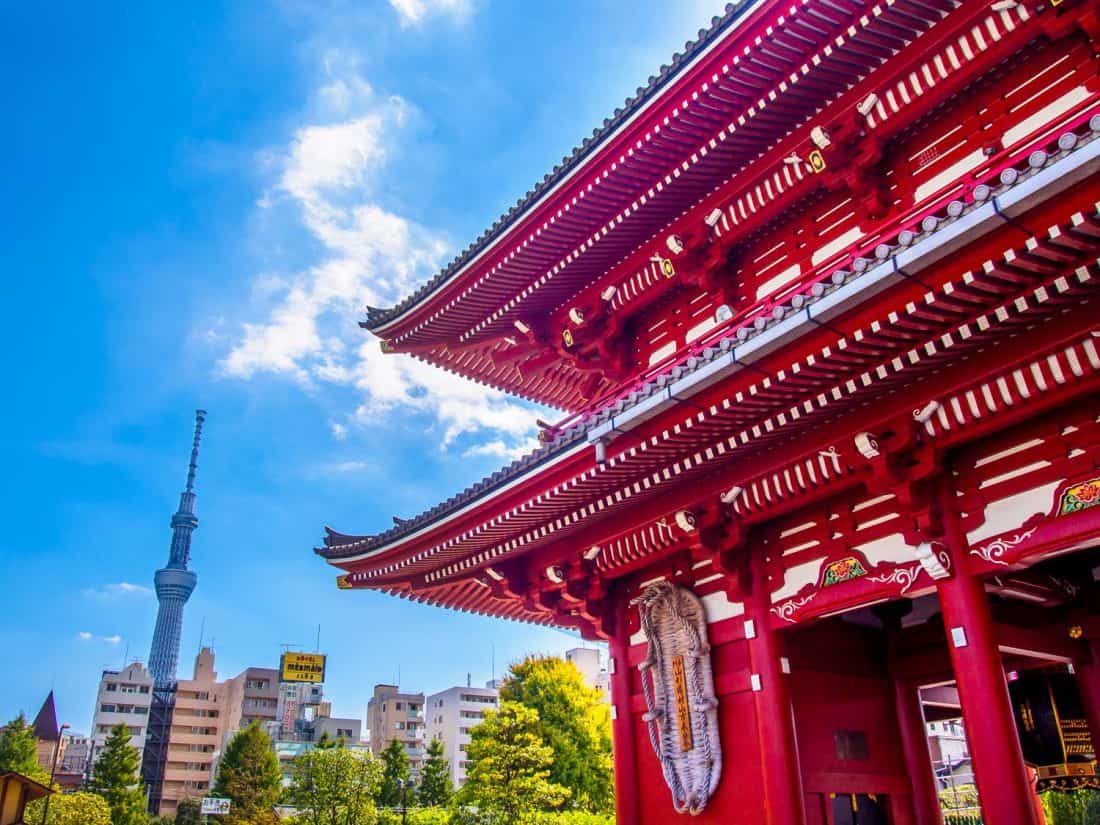
If Kyoto is the heart of traditional Japan, Tokyo is its ultramodern counterpart.
It’s here you’ll find the skyscrapers, noisy arcades, busy pedestrian crossings, quirky youth fashions, and many many incredibly delicious restaurants.
If all you do in Tokyo is eat, you’ll have an amazing time—even as vegetarians we ate so well.
Tokyo is also home to some of the weirdest activities we’ve ever done. From themed cafes (cats, owls, maids, robots, goats—you name it, Tokyo has it) to sensory-overload shows and arcades to cos-play go-karting.
On my first trip to Tokyo I was overwhelmed by the sprawling city and couldn’t help comparing it unfavourably to Kyoto.
On repeat visits I’ve grown to love the city (the food certainly helped) and while it isn’t as attractive as Kyoto, there is so much to do that you won’t want to skip it.
In Tokyo don’t miss:
- Driving a go-kart on the real roads while dressed as your favourite character. Insanity but so much fun!
- Eating in a tiny restaurant on atmospheric Memory Lane in Shinjuku .
- Gazing at the 360º skyline from the Shibuya Sky observatory (go at sunset for day and night views)
- Walking across the famous Shibuya Crossing.
- Gawping at the outrageous outfits on Takeshita Street in Harajuku.
- Visiting the brilliant DisneySea (our favourite Disney park in the world!) or neighbouring Tokyo Disneyland (or both if you have two days spare).
- Immersing yourself in the colourful digital art museum, TeamLab Planets (and don’t miss Uzu vegan ramen afterwards).
- Watching sumo wrestlers train— we did this morning sumo stable visit and it felt such an honour to see these impressive athletes close up.
- Drinking green tea at the relaxing Sakurai Japanese Tea Experience (the tea course is worth it).
- Exploring the cool neighbourhood of Shimokitazawa for cafes, vintage clothes, and record stores.
How Long to Spend: 3 – 5 nights or longer if you want to take day trips (such as to Nikko, Kawaguchiko or Hakone (for Mt Fuji), and Kamakura). We’ve spent over 6 weeks here on various trips and still find new things to do. If time is limited, I would allocate more time to Kyoto than Tokyo.
Read: 23 cool things to do in Tokyo and the best vegetarian restaurants in Tokyo .
Where to stay in Tokyo: Read why I think Shinjuku is the best area to stay in Tokyo . My top pick is Hotel Century Southern Tower next to Shinjuku Station—our panoramic king room had an incredible view and was more spacious than most Tokyo hotel rooms. Or splurge on the luxurious Hotel Park Hyatt where the film Lost in Translation was filmed. Search for hotels in Tokyo here .
Top tip: Consider buying a Japan Rail Pass in advance as it’s so easy being able to hop on and off trains all over the country. Read our Japan Rail Pass guide for full details.
More Tokyo, Direct to your Inbox!
Thank you for subscribing! You should receive an email from us very soon. Click on the link in the email to confirm your subscription.
3) Takayama

Takayama is an utterly gorgeous small town on the edge of the Japan Alps and one of the best less-visited places to go in Japan.
I loved wandering the historic centre full of traditional wooden houses, colourful shrines, neatly shaped trees, and bright red bridges over the river.
In Takayama don’t miss:
- Wandering the old town in the early morning before the crowds arrive.
- Buying delicious fruit from the morning markets.
- Snacking on mitarashi-dango (rice balls grilled in soy) from a street stall.
- Seeing the extravagant floats at the Festival Floats Exhibition Hall.
- Visiting the Hida Folk Village to see traditional thatched houses.
- Cycling through the countryside with Satoyama Experience .
How Long to Spend: 2-3 nights. We had 2 nights and wished we’d had longer because there’s lots to do in the surrounding countryside. With a longer stay you could take day trips to the traditional thatched roof houses of Shirakawa-go and go hiking in Kamikochi in the Japan Alps.
Read: 54 Best Things to do in Japan for an Unforgettable Trip
Where to stay in Takayama: We stayed at Super Hotel Hida Takayama , a good mid-range business hotel near the train station. Next time I want to stay at Oyado Koto No Yume , a ryokan with onsen which gets excellent reviews. Find more hotels in Takayama here .
Top tip: See our Japan 2 week itinerary for more details on combining these top places in Japan for an amazing trip.
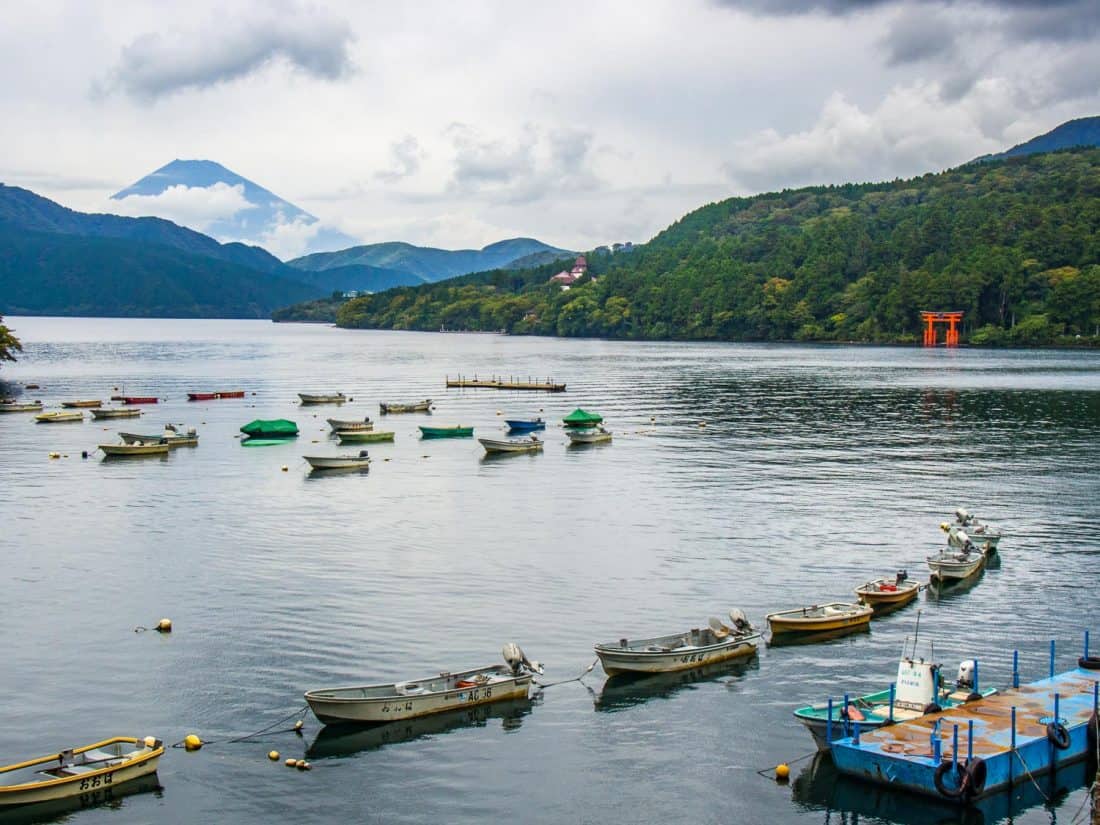
Mount Fuji is on most people’s lists of places to visit in Japan, but this must-see Japan landmark can be rather elusive and is often hidden by clouds.
There are a number of places you can see the mountain from ( Kawaguchiko is another great option), but Hakone is easy to reach from Tokyo and there are lots of other things to do in the area in case you are out of luck with a sighting.
Despite visiting on a cloudy, drizzly day, we were lucky that Mount Fuji emerged from the clouds above Lake Ashi and it was magical!
Hakone is also fun to visit because you can do a loop of the sights on different modes of transport—train, bus, pirate boat (yes, really!), and cable car.
In Hakone don’t miss:
- Buying a Hakone Free Pass so you can hop on and off all the transport options on the Hakone Loop.
- Seeing Mount Fuji from the lake or cable car.
- Eating a black egg cooked in the hot sulphur springs at volcanic Owakudani (not really, we skipped this, but the Japanese love them).
- Soaking in an onsen.
- Staying in a tatami room in a ryokan (traditional inn) and enjoying an elaborate dinner.
- Wandering the outdoor sculpture gallery at Hakone Open Air Museum .
How Long to Spend: You could visit on a day trip from Tokyo but I recommend 1-2 nights to experience a ryokan and onsen. We had one night and did part of the loop in the afternoon we arrived and the rest in the morning. While it was just enough for the main sights, we wished we’d had longer to enjoy our ryokan.
Where to stay in Hakone: I recommend staying in Moto Hakone by Lake Ashi for Mt Fuji views. A ryokan with an onsen and meals included is the perfect way to experience the area. Our ryokan has closed but Yoshimatsu looks like a beautiful alternative. Find more hotels in Hakone here .
5) Kanazawa
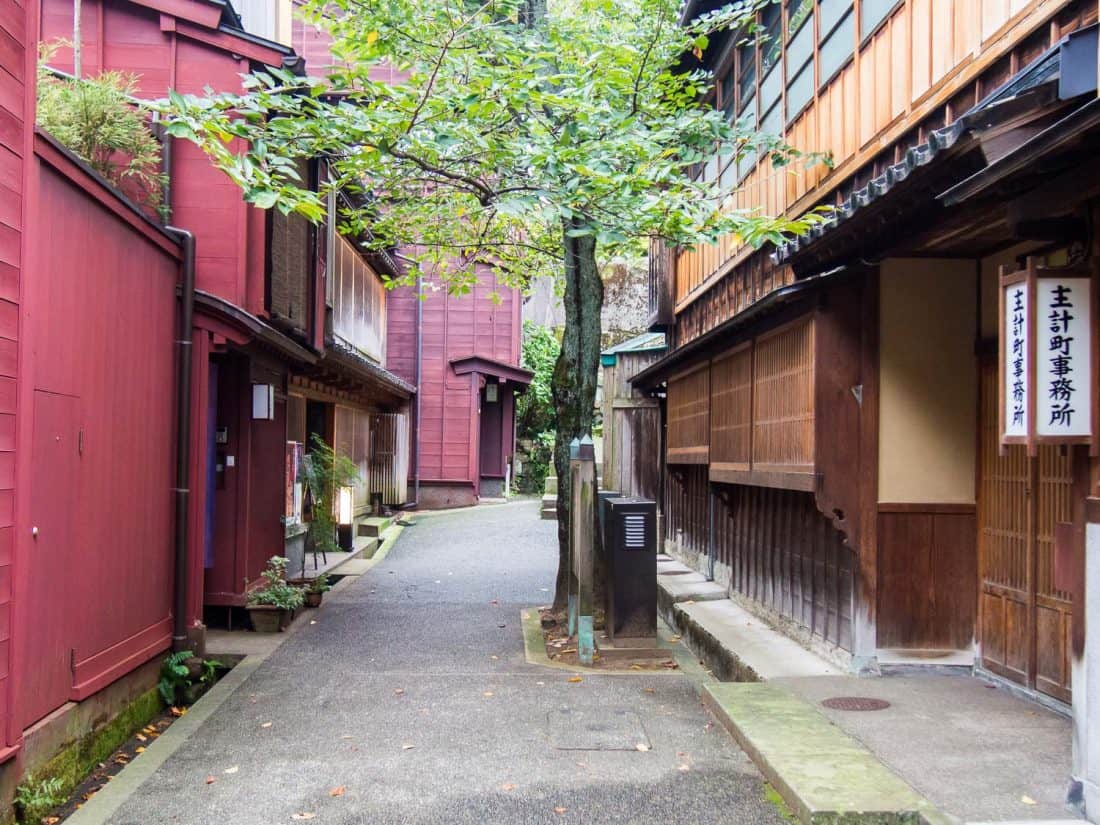
Kanazawa is one of the best cities to visit in Japan, but few foreign tourists make it here.
Consider Kanazawa as a quieter alternative to Kyoto to experience geisha districts with preserved wooden buildings.
There is also one of the most beautiful gardens in the country, a stunning castle, and many art museums to explore.
In Kanazawa don’t miss:
- Wandering Kenroku-en Garden , one of the top three gardens in Japan.
- Exploring the wooden teahouses of the geisha districts Higashi Chaya and the quieter Kazuemachi and Nishi Chaya.
- Experiencing a traditional tea ceremony at the exquisite Gyokusen-en Gardens.
How Long to Spend: 2 nights.
Where to stay in Kanazawa: We stayed in a standard business hotel in the centre—there are lots of budget options. Find hotels in Kanazawa here .

Nikko is a temple town and UNESCO world heritage site in the mountains a few hours north of Tokyo and makes a cool retreat from the city. The area is famous for its vibrant autumn colours.
The temples and shrines with their vermillion gates and moss-covered stone lanterns are scattered on the wooded hillside.
The main attraction is Toshogu Shrine, a stunning complex with more than a dozen lavishly decorated red and gold buildings amongst huge, ancient cedar trees. The crowds can be overwhelming, so afterwards head to one of the quieter shrines.
In Nikko don’t miss:
- Visiting Toshogu Shrine early to avoid the crowds
- Playing games at atmospheric Futarasan-jinja
- Exploring Taiyuinbyo
- Hiking up the mountain to the peaceful Takino shrine
- Photographing the bright red Shinkyo bridge
- Munching on dango (grilled rice balls on a stick) from a street stall
- Eating sushi at Komekichi Kozushi
How Long to Spend: You could visit Nikko as a day trip from Tokyo, but it’s worth spending a night or two to explore one of the most beautiful places in Japan including hiking trails, lakes, waterfalls, and hot springs.
We had one night and wished we’d had two so that we could have visited Toshogu Shrine early on the second day.
Where to stay in Nikko: We stayed at Nikko Park Lodge Tobu Station , a good budget option conveniently located close to the train stations. For more character, you could stay in a traditional ryokan with views and outdoor onsen baths such as Nikko Hoshino Yado . Find more hotels in Nikko here .
7) Koya-San
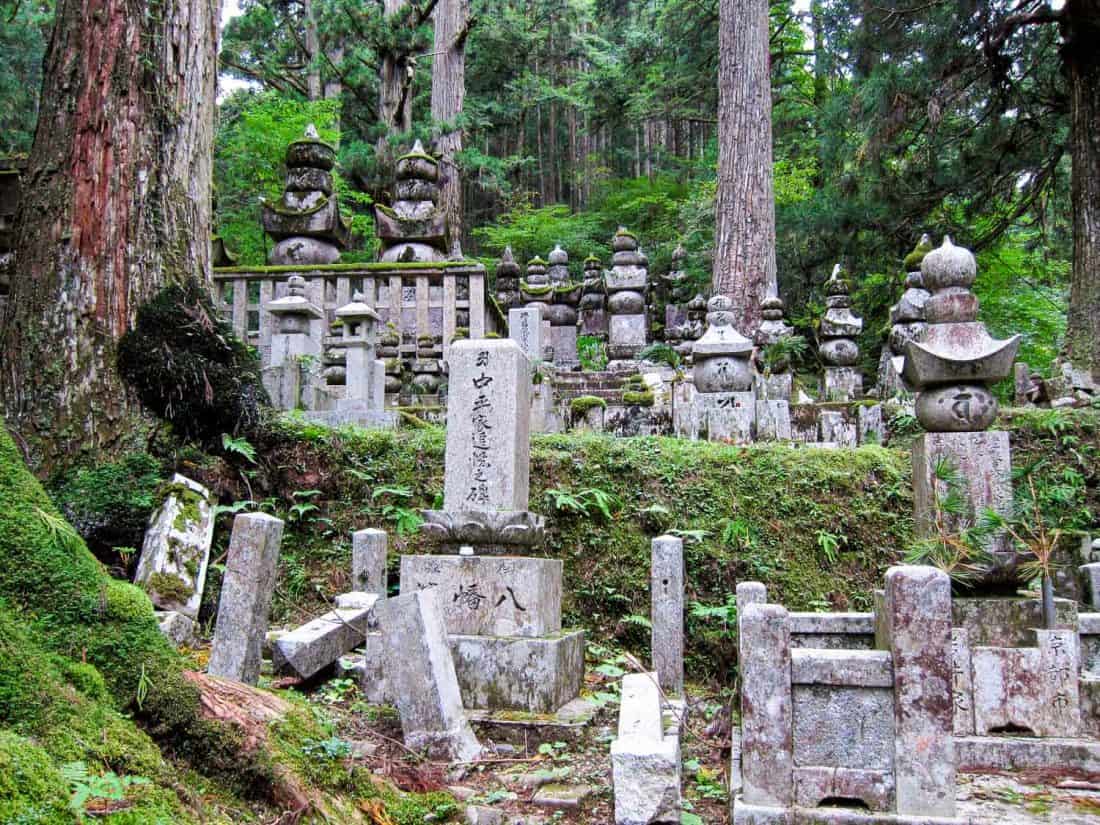
Koya-san (Mount Koya) is one of the most interesting places in Japan to experience the traditional side of the country.
This secluded and sacred temple town is located in the forest-covered mountains of Kansai and is one of the best places to get a taste of life as a monk by staying in a shukubo or temple lodging.
After wandering around the otherworldly Okunoin forest cemetery , we checked into our simple tatami room at the temple, soaked in the communal onsen bath, and enjoyed a delicious shojin ryori vegetarian Buddhist meal.
In the morning we were up early for the chanting and meditation ceremony with the monks.
A temple stay at Koya-san is a fascinating experience and well worth the detour from Osaka or Kyoto.
How Long to Spend: 1 night.
Read: Sleeping with Monks: A Night in a Japanese Temple in Koya-San
Where to stay in Koya-san: We stayed in Haryo-in, the cheapest temple accommodation, but it’s quite basic and I’d recommend paying more to stay at one of the more traditional temples like 1000-year-old Eko-in which gets superb reviews. Find more temple lodgings here .
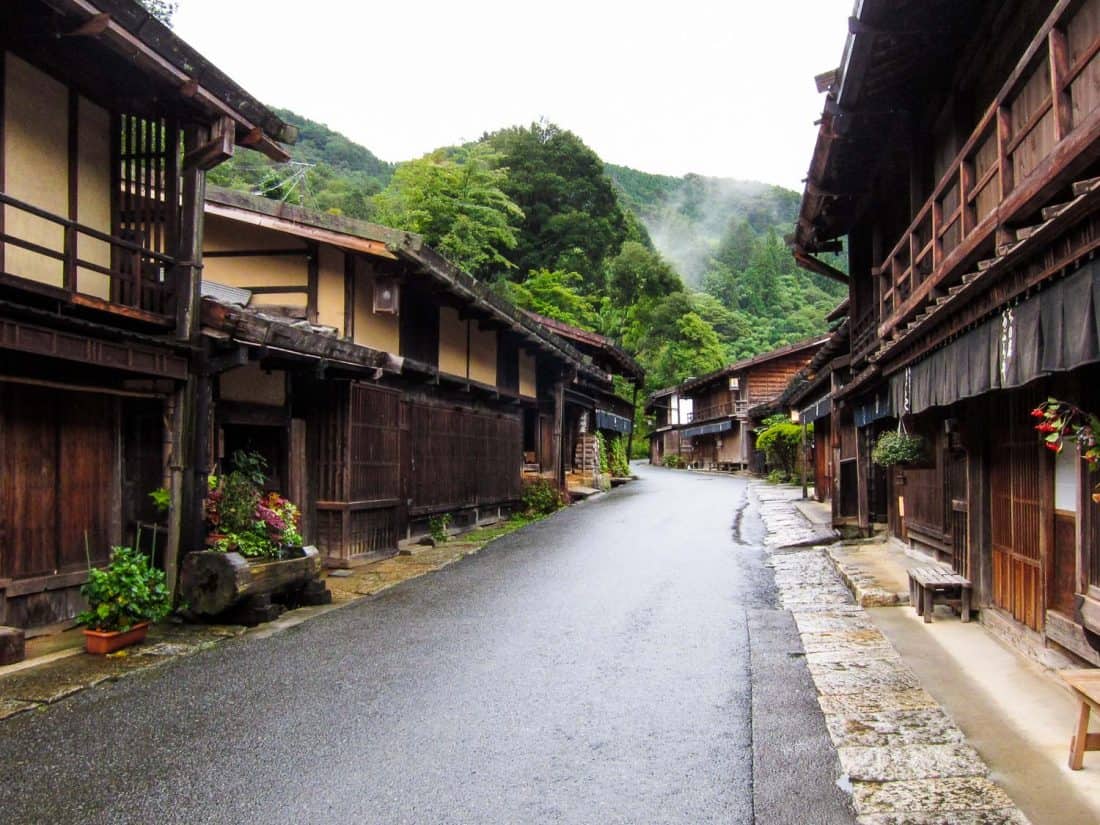
Tsumago is a picture-perfect traditional mountain village in the Kiso Valley.
It is one of the best-preserved post towns in Japan and you feel like you’ve stepped back in time on the traffic-less streets of beautifully restored wooden inns.
During the Edo period 300 years ago, Tsumago was a stop on the Nakasendo Way between Kyoto and Edo (now Tokyo).
You can hike part of this trail to the village of Magome in about two to three hours. Unfortunately, a typhoon prevented us doing this, but it’s supposed to be a scenic and easy walk.
How Long to Spend: 1-2 nights. If you can arrive early enough on the first day to hike the Nakasendo Way in the afternoon, then 1 night is enough as it’s a tiny village.
Where to stay in Tsumago: In keeping with the Edo-era atmosphere, stay in a traditional ryokan or minshuku (a simpler family-run inn). We stayed at the basic Minshuku Shimosagaya . Neighbouring Magome has more choice including the budget Chaya Hotel or historic Tajimaya .
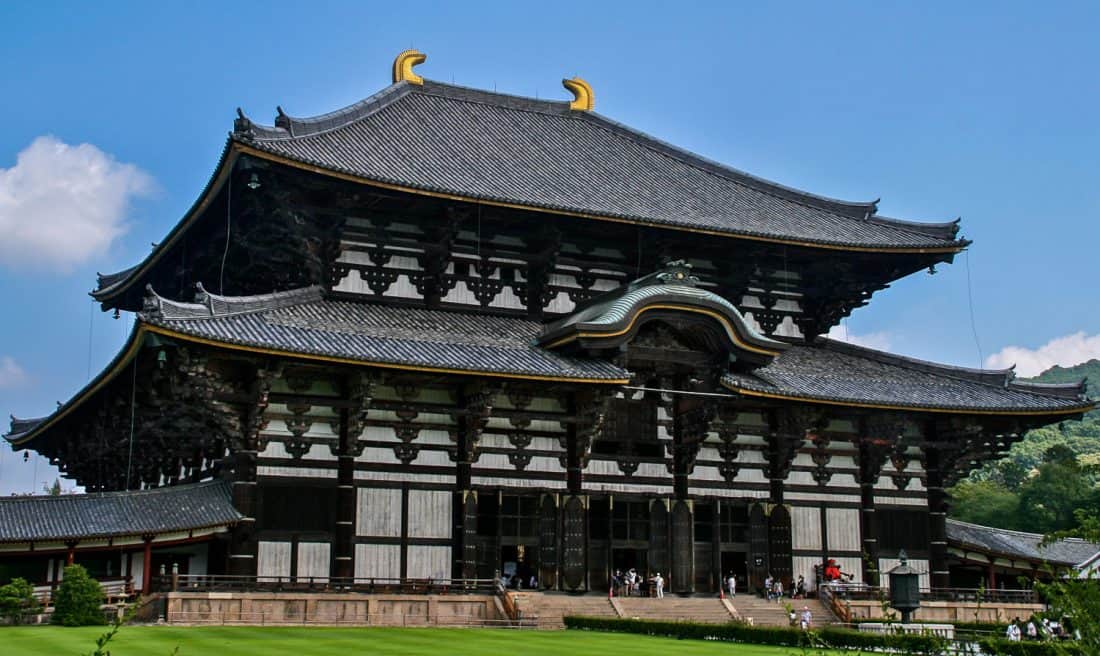
Nara was Japan’s first permanent capital and is full of historic treasures including many UNESCO world heritage sites.
It’s one of the top Japan attractions and makes a rewarding day trip from Kyoto to visit the temples and wild deer in Nara Park.
The Daibutsu-den (Hall of the Great Buddha) at Todaiji is the main sight—it’s the largest wooden building in the world and nothing prepares you for the immense sight.
Inside is the 15-metre tall gold and bronze statue of Buddha that dates back to 751.
We also love the forest shrine complex Kasuga Taisha.
How Long to Spend: Most people visit as a day trip from Kyoto or Osaka. You can see the highlights in half a day but a full day is better.
Where to stay in Nara: The advantages of staying overnight in Nara are avoiding the crowds with an early start and experiencing our favourite ryokan in Japan. Tsukihitei is a small traditional inn with a magical forest setting and delicious meals. It’s only a 15-minute walk to the Nara temples.
Sign Up for more free Japan Content!
10) hiroshima and miyajima.

Come to pay your respects to the victims of the atomic bombing at Hiroshima’s moving Peace Memorial Museum and Park and stay to explore the modern city that was almost entirely rebuilt after World War II.
Hiroshima is usually combined with a visit to the famous floating torii gate at Itsukushima shrine on nearby Miyajima Island.
You’ll also want to try the delicious local speciality okonomiyaki, a thick pancake of batter, vegetables and noodles.
How Long to Spend: 1-2 nights is enough to visit the Peace Memorial Museum and Miyajima Island or you could visit as a long day trip from Kyoto, Osaka or Okayama. We spent 1 night in Hiroshima then 1 night on Miyajima.
Read: 14 Best Day Trips from Kyoto .
Where to stay in Hiroshima: The Sheraton Grand Hiroshima was the most spacious Western-style hotel we stayed in in Japan. We really appreciated the king size bed after a few weeks of small Japanese hotels. It’s right next to the station too. Find more hotels in Hiroshima here . Where to stay in Miyajima: While you could visit the island on a day trip, we loved seeing the top sights without the crowds at night and early in the morning. Iwaso Ryokan has the perfect location (secluded but central), beautiful meals, and our room had a view of the torii gate.
There are so many incredible places to explore in Japan. Here are some more destinations that we absolutely loved (and it was hard to leave them off the top 10 list!).
If any of these appeal to you more than the ones above (or fit into your itinerary better), then they will be just as enjoyable.
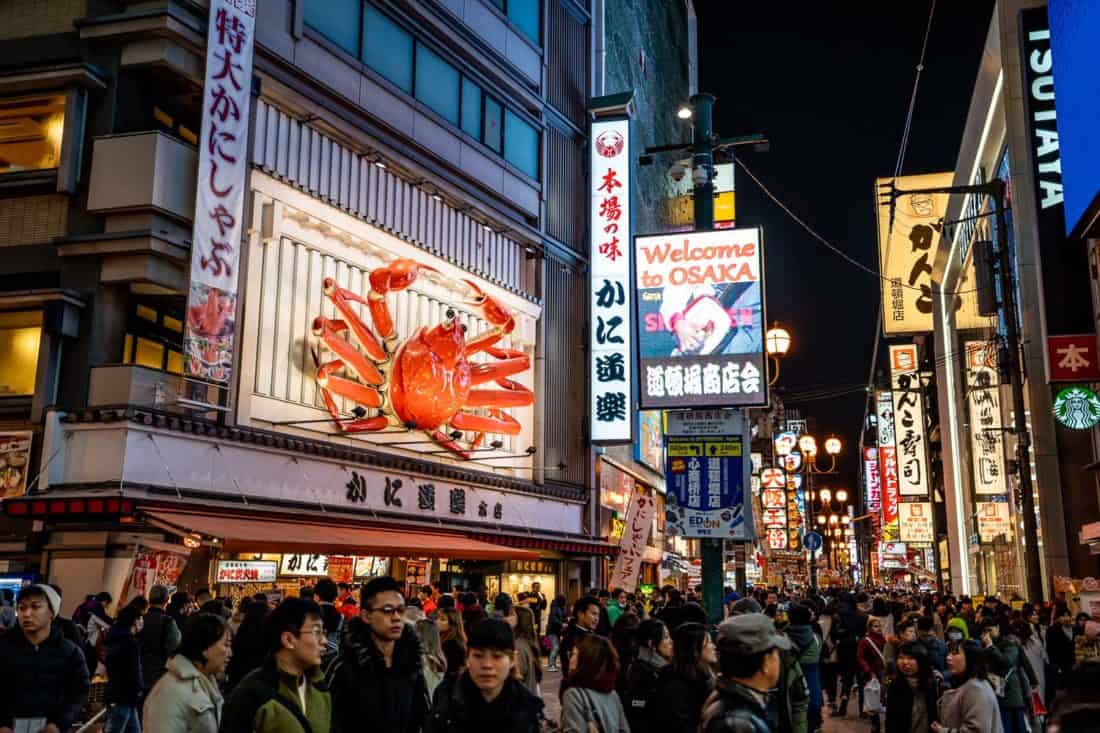
Osaka is a Japan must-see for many visitors. We love the neon craziness of Dotonburi, the amazing food ( for vegetarians too ), friendly people, affordable prices, and the scary rides and brilliant Harry Potter World at Universal Studios Japan .
But, if you have limited time on your first trip to Japan, I would probably say choose Osaka or Tokyo as they are both sprawling modern cities.
If you are flying into or out of Kansai airport then it makes sense to spend a night or two in Osaka. You could also visit as a day trip from Kyoto.
In Osaka, we loved staying in Shinsaibashi . The location is ideal—quiet but close to lots of cool shops and restaurants and within walking distance of Dotonburi. Hotel options include the stylish Hotel The Flag .
12) Kinosaki Onsen
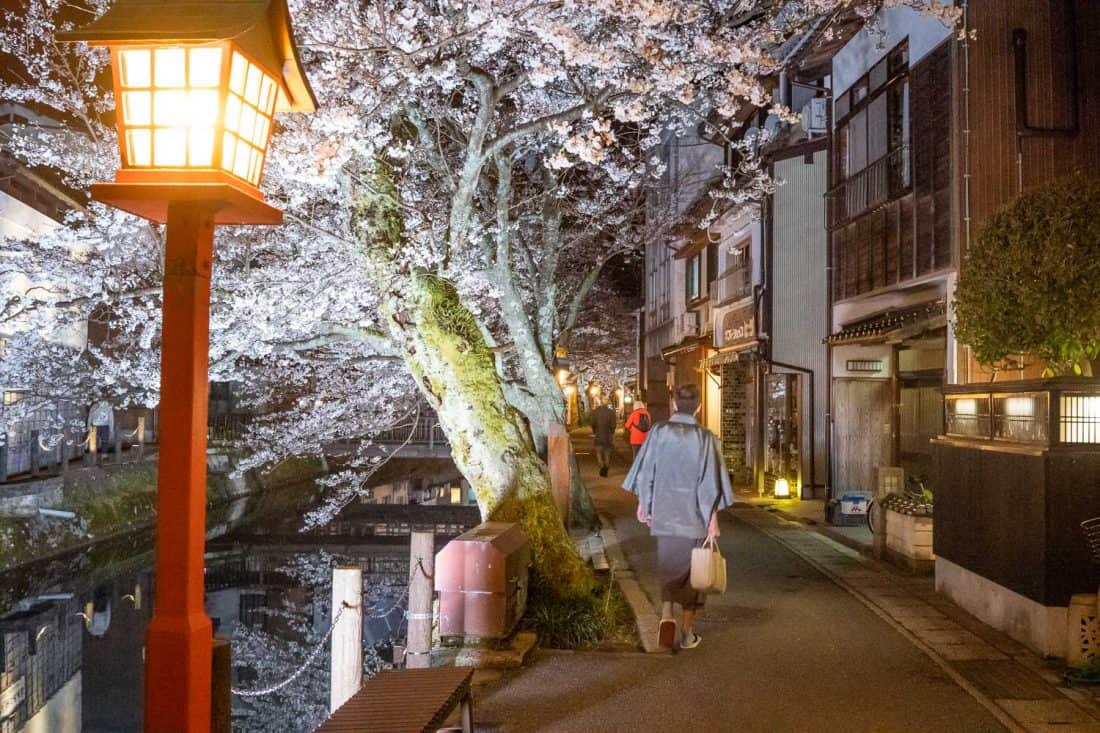
On our first Japan trip we were terrified of getting naked in onsens, but on our latest visit we were brave enough to spend a few nights in an onsen town.
Onsen hopping dressed in a kimono in a traditional hot spring resort is a classic Japanese experience. Kinosaki Onsen is a great place to experience it.
It’s only a few hours from Kyoto or Osaka and the canal-side town is very pretty, especially in cherry blossom season.
We stayed in a traditional tatami mat room at Morizuya Ryokan . It’s ideal for first-timers as they speak English and are very friendly, walking you through everything you need to know. The epic meals served in your room are delicious too.
Read our Kinosaki Onsen guide for all the details including onsen etiquette and how to get over your fears.
13) Naoshima Island
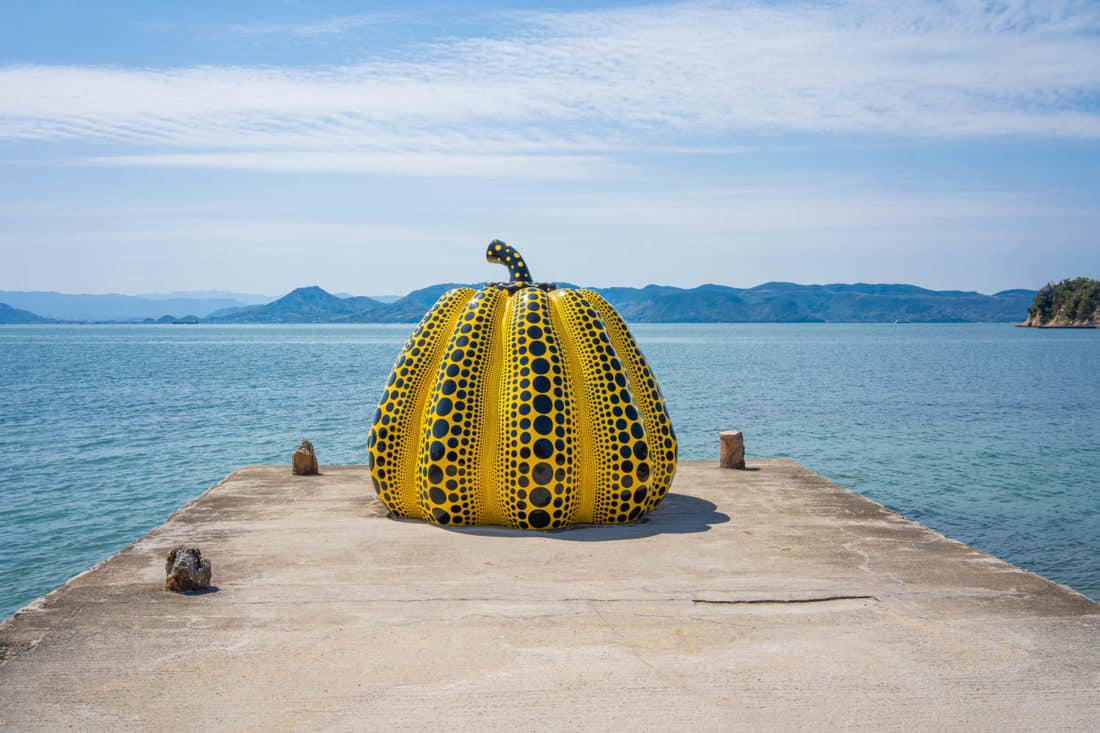
Contemporary art fans will love Naoshima, a sleepy island in the Seto Inland Sea known for its art galleries and outdoor sculptures.
We visited on a day trip from Okayama and had a wonderful day cycling around and combining art with beautiful sea views and tiny fishing villages.
Read our Naoshima Island guide for a recommended one day itinerary.
14) Okayama
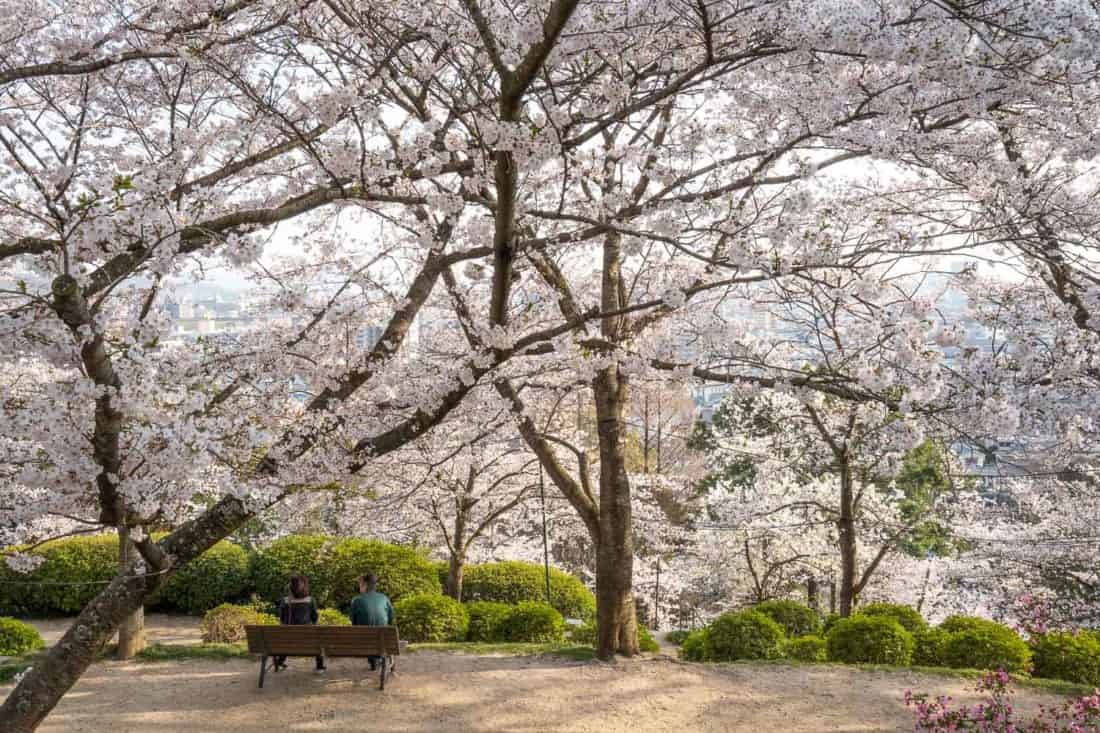
If you are interested in getting off-the-beaten-track, Okayama is a great place to visit in Japan.
This modern city is home to one of the best gardens in the country and is especially beautiful in sakura season when you can enjoy the cherry blossoms without the crowds of Kyoto or Tokyo.
As it’s on a bullet train line, it’s a convenient and affordable base for exploring the area including the historic Kurashiki, Naoshima Island, Himeji Castle, and Hiroshima.
We also did a fantastic bike trip on the Kibiji Bike Trail through rice fields to untouristy temples.
Our post on the best things to do in Okayama has all our tips.
15) Himeji Castle
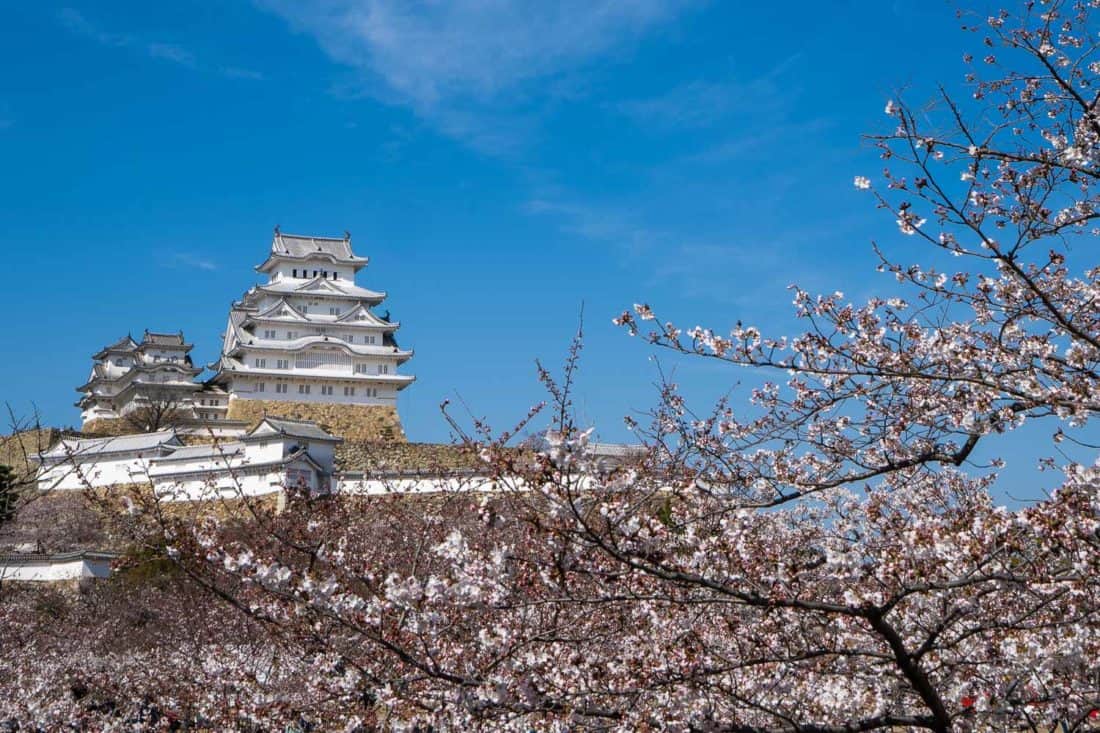
Himeji Castle is one of the few original castles in Japan (most were destroyed at some point and rebuilt). It’s well worth a visit, especially in cherry blossom season.
You can easily visit in half a day from Osaka, Kyoto, Okayama (as we did) or on the way to Hiroshima.
16) Kawaguchiko
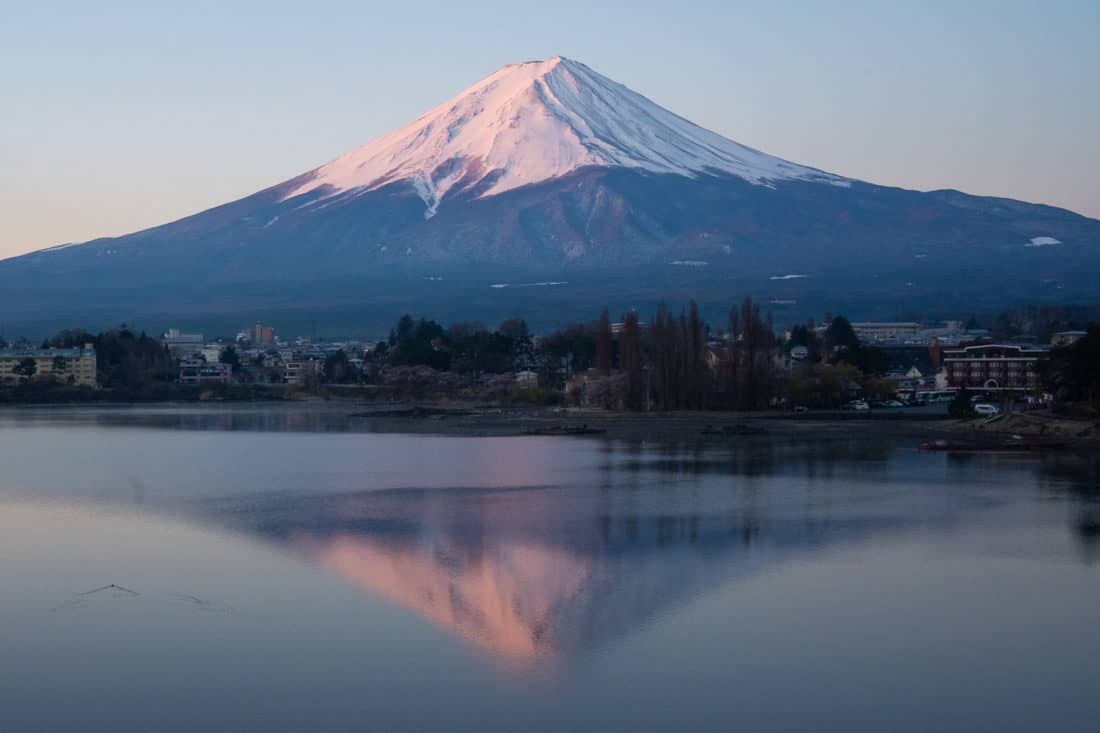
For the best views of Mount Fuji, head to Lake Kawaguchiko. It’s especially lovely in cherry blossom or autumn leaf seasons.
You can enjoy the views by walking or cycling around the lake or taking a trip on a cable car or boat (we hired a panda pedal boat!).
The lake is also home to one of my favourite museums and tea houses in Japan.
Kawaguchiko Lakeside Hotel is an excellent affordable option here. Unusually for Japan, our room was huge, and it’s close to the lake with Mt Fuji views from some rooms.
See my Lake Kawaguchiko guide for more tips.
These Japan tourist attractions and off-the-beaten-path gems are on our list for our next trip:
- Kamakura – Beaches, Buddhas, hikes and vegetarian-friendly food. You could visit as a day trip from Tokyo.
- The Izu Peninsula – Rugged coastline, mountains, and hot springs not far from Tokyo.
- Shirakawa-go – A village of traditional grass-roofed houses in a scenic setting. You could fit in a visit between Takayama and Kanazawa.
- Takaragawa Onsen – A scenic onsen resort a few hours from Tokyo. It has a large mixed-gender onsen, so unusually you don’t have to be naked.
- Hokkaido – The northernmost island of Japan known for its natural beauty and outdoor activities.
- Okinawa – A chain of tropical islands in the far south of Japan.
Read our detailed Japan guides for everything you need to know to plan a brilliant trip.
- 56 Best Things to Do in Japan for an Unforgettable Trip
- Planning a Trip to Japan: Dos and Don’ts
- Two Weeks in Japan: A Detailed Itinerary
- Is a Japan Rail Pass Worth It?
- Where to Stay in Japan: The Ultimate Guide to Accommodation
- 20 Fascinating Books to Read Before Visiting Japan
- Vegetarian Survival Guide to Japan
More Japan, Direct to your Inbox!
I hope this post has given you some ideas of where to go in Japan. Wherever you decide to visit you are sure to have an amazing trip.
What are your favourite places in Japan? Leave a comment and let us know so we can add them to our Japan bucket list.
If you enjoyed this post, pin it!
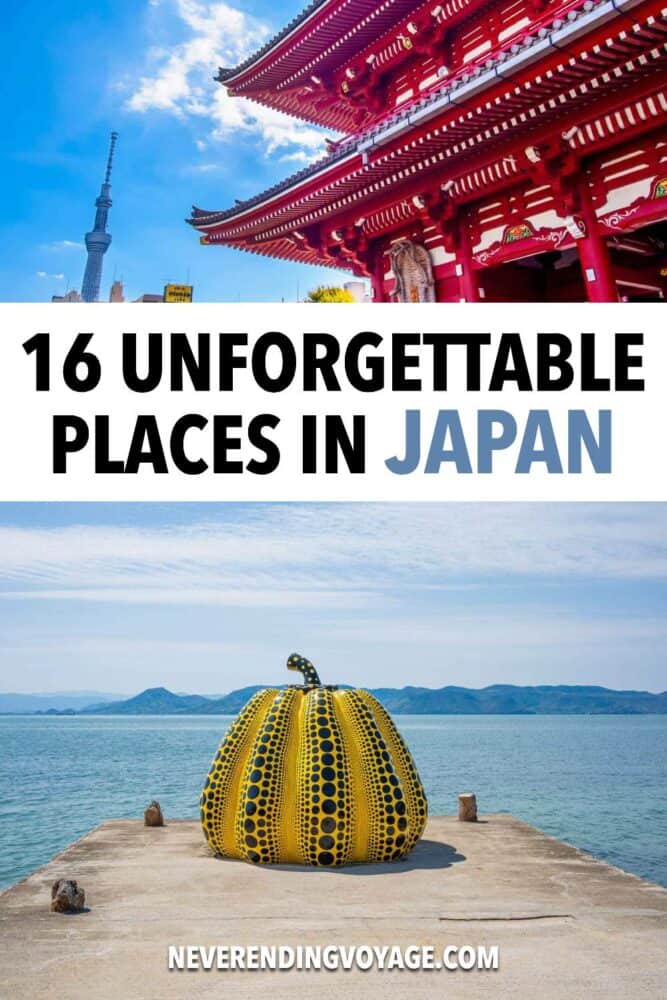
64 Comments
Thanks for sharing some info , however are you seriously recommending a room at an outageous 2000 EUR / night ?
Reply ↓
We didn’t pay that much anywhere so I don’t know which place you are referring to. Prices vary so you might be looking at an especially expensive time. Ryokans are expensive but they do include a gourmet dinner and breakfast and are a unique experience that most visitors only do for a night or two.
very informative
thanks for sharing
First of all – your posts are fantastic and so full of great detail. We are planning our first trip to Japan in November. First draft is 5 days Tokyo – 2 days Hakone – 5 days Kyoto – 3 days Hiroshima – 4 days Tokyo.
I was trying to see how to fit Lake Kawaguchi or Takayama or Kanazawa into the trip but they all seem to require quite the journey time given the other places we have picked. Wondering if it would be better to add some days to the end of the trip and just visit from Tokyo. So maybe do Tokyo to Kanazawa for a couple of days. Not particular keen on 5-6 hour trip from Takayama back to Tokyo so may have to skip that.
Hi Kevin I would do Tokyo – Hakone – Takayama – Kyoto – Hiroshima – Tokyo.
We did Tokyo – Hakone – Takayama – Kanazawa on our 2 week itinerary: https://www.neverendingvoyage.com/japan-2-week-itinerary/
I prefer Takayama to Kanazawa, especially as you already have lots of big cities on your itinerary. If you really want to fit it in, do so between Takayama and Kyoto.
Lake Kawaguchi is harder to fit in. You could do it as a day trip from Tokyo at the end if you didn’t see Mt Fuji at Hakone (due to clouds) and if you have the energy.
One thing you might also consider is reducing Hiroshima to 2 nights and adding a night on Miyajima Island. We did that last October (one night in each) and really preferred the island after the day trippers had left and early in the morning. You might catch the autumn colour on the island if you are visiting later in November. Again, it changes up the pace from the cities.
If you have big suitcases, you could use a luggage delivery service from Hiroshima to Tokyo and just take a day bag for the overnight (we decided against that but only had a carry on suitcase and laptop bag each).
Good luck with the planning and enjoy Japan!
Erin – Thanks for the advice – good to hear input from someone who has actually experienced it
Apologies for posting the reply so many times – i kept picking the wrong reply option
Awesome guide. Thank you. A lot of the accommodation is around $500aud a night! Extremely expensive. Is that normal around Japan? Me and my partner were wanting to travel around Japan in July this year but if the cost of accommodation us that expensive we might not be able to do the trip. I assume we will be able to find cheap accommodation at most places?
You can definitely find much cheaper accommodation. We did our first few Japan trips on much tighter budgets, but now have the ability to choose more special places to stay.
Your best bet is to look for business hotels in the cities – rooms are usually small but clean and well equipped. Have a browse on Booking.com and you should find plenty of options.
Planning trip(first time ever in Japan) arriving afternoon of December 18th and leaving evening of December 30th. I will be traveling with my 18 and 20 year old boys (privacy should be interesting in the tiny hotel rooms). Planning to stay in Tokyo either 5 nights with day trips to Hakone and either Kamakura or Yokohama OR 4 nights with day trip to either Kamakura or Yokohama and 1 night in Hakone. Is it worth staying the night in Hakone, or just day trip from Tokyo? Then we will spend 3 nights in Kyoto and 3 nights in Osaka (does it matter which order?) with a day trip from each city. One to Nara and one to Hiroshima and Miyajima. My 18 year old wants to have Kobe beef in Kobe, but don’t think it will happen as it’s likely not worth the time away from the other places. I’d love to be able to visit both Kamakura and Yokohama, but don’t think it will work. Likely choosing to go to Kamakura. We will return to Tokyo for the last night and spend the last day (really 1/2 day) in Tokyo before heading to the airport to fly home. Thoughts on the plan? Any specific recommendations?
I think it’s worth spending the night in Hakone if you stay in a ryokan as it will be a unique experience that you won’t get in the cities.
I would probably go to Kyoto before Osaka but it doesn’t make a huge difference. Your day trip choices sound good.
Enjoy Japan!
thank you very much for all the infos and the very beautiful photos!
Hello, Have you been to Tamba-Sasayama in Hyogo? We have a lot of nature, local food, and cultures! Tamba black beans are famous local food and also you can experience a pottery making. I hope you will visit here one day;)
We haven’t but we’ll put it on our list for our next trip this autumn! Thank you for the recommendation!
Wow, this is such a great travel guide. Thanks a lot!
Odd how all of the “best places in Japan to visit” are all in central Japan near Tokyo and Kyoto. How disappointing the travels of the writers to these other parts of the country must have been.
Have you been to the Autumn Takayama Festival? 😊
We did not buy plane tickets yet, but we were going to land on Oct 22 to experience the Kurama Fire Festival in Kyoto. We heard about Takayama festival on Oct 9th and wanted to know if it’s worth changing our plans to fly in earlier for it, and if the weather will be horrible or not during that time? Thank you so mochi for your help! I’m so torn!
We haven’t been but it does look cool! I’m not sure it’s worth changing your plans for. Later in October you’ll have more of a chance of seeing fall colours in Kyoto. If you do decide to go, book your accommodation asap as it gets extremely busy during the festival.
What is the best way to get around these places? Train or car?
Train. You might find this post helpful: https://www.neverendingvoyage.com/planning-a-trip-to-japan/
very nice good work
Thanks for the detailed post with nice photographs
I forgot to include in early to mid December.
I’ve been to all the tourist sites and a few others. Where would you recommend for an overnight not far from Tokyo?
Have you been to the Izu Peninsula? We haven’t yet but our friend who lives in Tokyo recommends it. The onsens would be nice in the winter.
planning on going japan next year, getting lots of ideas from these blogs
Beppu should be on this list!
Hopefully we’ll make it there next time!
nice one thank you i learn lot of things about this web site
what about Harajuku?
I included it in the Tokyo section :)
It’s definitely worth visiting!
Hello I am relooking at your Japan highlights. I had the most amazing trip in Spring 2020 many thanks to your post which seems now to have gone and been replaced by more posts. The one thing I would like to say is that you put before Miyajama on the one i read and i have to say that this was one of my favourite spots. I totally recommend it. We also did the two walks one of which was the edo trail and the other outside of Kyoto. We stayed in Koyasan too thanks to you. Thank you again.
Hi, I’m thinking of planning a trip for me and my daughter to visit Japan but haven’t any ideas of where to start. I was thinking a two week trip but maybe more time would be needed for the things we would like to do. If staying for longer than two weeks is there visas needed ect. I haven’t a clue where to start I’ve looked at your guide which is very helpful. Would I be better of speaking to a travel agent for help and advice ??? Many thanks Paul Miller.
It depends where you are from but many nationalities (including UK and US) can stay in Japan for 90 days without a visa.
Two weeks would give you a great overview (here’s a suggested itinerary: https://www.neverendingvoyage.com/japan-2-week-itinerary/ ) but if you have more time (and the budget), there’s always more to see.
I think Japan is manageable without a travel agent. See our post on planning a trip for ideas to get started: https://www.neverendingvoyage.com/planning-a-trip-to-japan/
We used this page during our six week Japanese adventure and it was brilliantly helpful! Thank you!
I’m glad it helped, Alex. I hope you enjoyed Japan as much as we do.
This page has been very helpful! I am planning a two week trip to Japan next year and this has helped break down each city and what to not miss. Thanks again!
I hope someday, I can visit Japan for some other reasons. As pictures shown, fantastic and very interesting places and educational as well.
Japan has always been a remarkable place for me. I think I missed those places you described about. I hope I can give a shot on my future trip if possible. Btw thanks for sharing your experience with us.
Japanese pachislot, mechanical games,are different from foreign slot machine and popular recently. From 2020 smorking will be prohibited in the pachinko parlors or pachislot parlors. Terefore more and more people will have a good time during playing games. If you come to Japan, you might want to play them.
We keep meaning to try pachinko! That’s good news about the smoking ban!
Hi Great website thanks. We are looking to travel to Japan (arrive Tokyo) in late January for about 14 days. This is our first visit and we don’t mind driving. I would be interested to know what places you could recommend to get a real feel of Japan. Thanks
I don’t recommend driving in Japan. The train system is so efficient and it’ll be less stressful than driving. Here’s our 2 week itinerary: https://www.neverendingvoyage.com/japan-2-week-itinerary/
Thanks for the guidance. If you were going in November for 6 weeks what would you do with your time Cheers Walter
That’s a great amount of time and you should so some great autumn foliage. You could visit everywhere on this list so it really depends on your interests and what pace of travel you prefer.
On our latest 7 week trip we chose to base ourselves in Kyoto for a month then travel around for a couple of weeks and finish with a week in Tokyo. If you prefer to move at a faster pace you could cover a lot of ground.
Hi Guys, great site. I was wondering why you seem to spend so much time in the large cities? I’m planning my first trip and my initial thoughts were to spend just a few days in Tokyo and Kyoto? Arent the more remote sights more rewarding?
I was also wondering about a cherry blossom visit – when if the best time to see them but to avoid the worst of the crowds??
Thanks! Chris
We love the smaller places in Japan and think the ideal trip includes a mix of them with the big cities. I wouldn’t say they are more rewarding, just different. There’s just so much to see (and eat) in Tokyo and especially Kyoto that we keep returning to them.
If you’re not a big city person a few days in Tokyo would be fine. Kyoto has a lot of history, temples, and traditional architecture (and more tourists), so you’ll only cover some of the highlights in a few days.
The cherry blossom are only in full bloom for about a week so there’s no way of avoiding the crowds in popular spots then. It’ll be slightly less crowded at the beginning or end of the blooming period, but it’s hard to predict exactly when that will be (and it varies by location).
I would focus on visiting places that have cherry blossoms but fewer crowds. We were in Kyoto at the beginning of April when the blooms just started (and it was already quite busy) then moved on to Kinosaki Onsen and Okayama where we enjoyed the blossoms without many people around.
I’ve written more about it here (and will be doing an Okayama post at some point): https://www.neverendingvoyage.com/kyoto-cherry-blossoms/
hi guys really nice blog, could you itemize it, how many days you spent in each city, village? and if you would change something, where to stay maybe longer, where shorter?
regards tomek
That’s a good idea! We’re currently travelling in Japan and will update this post soon so I’ll add that info then. If you’d like to know about a specific place now just let me know. Usually we spend a week or more in Kyoto and Tokyo and only 1-3 nights in the smaller places.
My husband and I are interested in making a second trip to Japan in March with our 5 month old baby. This will be our second trip…we’ve done Tokyo, Takayama, and Kyoto previously (along with one night in Osaka). We LOVED Takayama for its food and quaintness. We liked Tokyo but got bored after a few days. Kyoto was probably our least favorite – too touristy, What should we do for our second trip??
It’s very difficult to make recommendations without having any idea of what you like to do, how long you plan to visit, or if your baby goes everywhere with you. Given that you liked Takayama, you might consider Kanazawa, Kurashiki, and Nikko. The first two are small cities of about 400,000 that have delightful walking areas and interesting sights in general. Nikko is very small but houses the shrines of Tokugawa Ieyasu and Tokugawa Iemitsu, who were the first and third shoguns of the Tokugawa Shogunate. These are UNESCO World Heritage and incredible.
You didn’t indicate when you visited Japan on your first trip. If you went to Kyoto during fall foliage you would have encountered a lot of tourists, most of whom are Japanese. Kyoto draws tourists because it is a world class city with a very large number of World Heritage sites in addition to spectacular fall color. I don’t want to sound rude regarding your Tokyo comment. I can understand not liking Tokyo because it is a bit overwhelming in size, although that is part of what makes it so enjoyable for us. However, I cannot comprehend getting bored there.
I wish you luck.
It sounds like you enjoy the smaller, more traditional places so I’d recommend Tsumago, Koya-san and Kanazawa (a bigger city but with some lovely traditional neighbourhoods). Nikko is also beautiful but we found it very crowded (it would have been quieter if we’d stayed overnight and arrived early though).
Your website is terrific. I was provided a link to a couple of regions in Italy for a major summer trip. Your comments, photos and recommendations were of such interest that my wife and I decided to completely change the first 10 days of our trip. Then I got so immersed in the various places you have gone, I decided to look at Japan. We spent a month there five years ago, and then we spent another month this December including Christmas. We have been to all but two of your 10 unmissable places in Japan and have used the trains and metros as our primary modes of transport. We would agree that Japan is a great place to visit and the people are terrific.
Since you asked for additions to your bucket list, I would like to suggest the following. Near Hiroshima is the island of Miyajima. This is the site of the great in the water torii gate, which is quite magical. The museum at the Hiroshima Peace Park provides an incredibly moving experience. Himeji Castle (White Heron Castle) is one of the original late 16th century castles and I believe the largest. It is on the route between Hiroshima and Osaka. It has been recently renovated. Osaka Station is beautifully done with some terrific surrounding buildings. The Dotonburi area is neon heaven with street food in abundance. Kyoto, as you stated, is amazing with probably more UNESCO World Heritage locations than anywhere else in the world. South of Kyoto in Uji is Byodo-in, a world heritage temple with a beautiful new museum.
I agree that Kanazawa is a really nice smaller city. Like Kyoto it was not bombed. The D.T. Suzuki Museum is an outstanding piece of architecture, although of primary interest to people steeped in Buddhism, philosophy. The Seisonkaku Villa is a 10,000 foot samurai home located at the edge of Kenrokuen Gardens and is very interesting. There are two places in Takayama you didn’t mention, each of which is very worthwhile. First, next door to the Float Museum and on the same admission ticket is the Sakurayama Nikkokan. This museum contains scale models of the shrines in Nikko. It took 33 master carpenters and 17 years to complete during the first part of the 20th century. It is incredible. Second, the Takayama Museum of Art houses an outstanding (Michelin 3 star) collection of art nouveau and art deco objects. We visited Matsumoto to see the Matsumoto Castle (Black Crow Castle). It is also one of the oldest castles in Japan.
I would also like to suggest Nagoya, which is one of Japan’s largest and most industrial cities. It is home to Toyota. Three recommendations. First, tour the Toyota Factory to get real insight into a truly sophisticated approach to assembly line manufacture. Second, the Toyota Commemorative Museum of Science and Technology is phenomenal. Many demonstrations of working textile machines and auto robotics. Third, the Nagoya Palace has been rebuilt (just opened in 2018) to exact specifications of the original palace (early 1600s) including all the screens. Even though it is a replica, it’s incredible.
You covered the shrines in Nikko. I would only add that if one did nothing else but see the Nikko shrines, a trip to Japan is warranted. Finally, Tokyo is to us the most exciting city around. Never ending pleasure of wandering around. There are just too many places to enumerate. One little side note: the Isetan Department Store in Shinjuku has a roof garden. You can buy incredible take away food in the basement food halls and take to the roof to eat, if the weather is good. Better than either Harrod’s or Selfridge’s.
Thanks so much for the tips David! We are returning to Japan in a few weeks for two months so we’ll try to visit some of these places.
Hi! Thanks, I am definitely gonna copy your ideas! One question – is it worth to go to Hiroshima instead of Takayama? My husband and I are gonna visit Japan in March 2019 for 9 days. I think it is not enough to fulfil your itinerary and we have to shorten it a bit. Thank you for your blog ;)
Honestly, we preferred Takayama. It’s just so pretty with the traditional Japanese architecture and we like small towns. Hiroshima is more of a big modern city BUT of course, the peace memorial is very moving, so if you really want to see that then choose Hiroshima instead (which is actually what we did on our first trip to Japan).
My husband is wanting to visit , the place that his father served in Japen . He is not sure exactly where that is ?
Hi..!! the blog is very informative.Me and my wife would be visiting Japan in Mar’19 for 8 days.We have opted for a package tour.Based on your recommendations Kyoto & Tokyo seem the 2 top places.Can you please recommend us the third place to visit..??
We are going there on a tour to Himazi with 3 homestays & I want to visit a friend in Miyago. Can we still see Mt Fuji & Kyoto after the tour? Thank you for your wonderful blog. Lynne
If you have time I don’t see why not. You can check train times/distances on the Hyperdia site http://www.hyperdia.com/en/ . Have an amazing trip!
Interesting blog, thank you for sharing your experiences! We will have 9 full days in Japan and hoping to see Tokyo, Mount Fuji ( want to stay two nights there ) Takayama, Kyoto and Hiroshima ( as a one day trip from Kyoto ). We are flying back home from Osaka ( our arrival is at Haneda ).. do you think it is do-able or are we overdoing it? Maybe we should leave out Takayama? but since we are going middle of October we are hoping to see some of autumn there..any recommendations? Thank you!
Hi Nath I think it will be a busy trip but it’s definitely possible to do all that in 9 days. I love Takayama so it’s hard to recommend skipping it. It all depends on your energy levels! If you are up for busy days then go for it! Enjoy! Erin
Wooooow love this post!! I have always dreamed of visiting Japan and seeing real Cherry blossoms.. Though I was able to make one dream a reality – see real cherry blossoms in Atok, Benguet, Philippines (but just a few because we were told that it will took two years for the trees to bloom). They look lovely!! :) I’m still not giving up on the bigger dream which is to go to Japan :D And once I get there, I’d definitely visit Kyoto coz I find their culture very rich.. from geishas to kimonos, to sushi and temples! :) See you soon Japaaaaaaaaan!
Who knew there were cherry blossoms in the Philippines?!
We’re planning to go back to Japan next year for the cherry blossom season, although I’m a little worried the crowds will be crazy. Kyoto is a definite highlight of Japan – I hope you make it there!
Leave a Reply Cancel reply
Required fields are marked *. Your email address will not be published. By clicking the Submit button, you give consent for us to store your information for the purposes of displaying your comment and you accept the terms of our Privacy Policy .
This site uses Akismet to reduce spam. Learn how your comment data is processed .
- Tours & Experiences
- Tailor-made Trips
- Bahasa Indonesia
We are happy to see you again!
Continue with
Or use email.
No Account? Create one
Create account
Already have an account? Sign in
Quickly Sign up with
I agree to Japan Travel's Terms of Service and Privacy Policy . Terms of--> and acknowledge that Japan Travel's Privacy--> applies to me.-->
Email reset password link
Please check your inbox and click the link we will send to you.
Search on Japan Travel

Expo '70 Commemorative Park
Expo '70 Commemorative Park, located in Suita, Osaka, Japan, is a vast cultural and recreational area built on the site of the 1970 World Exposi..
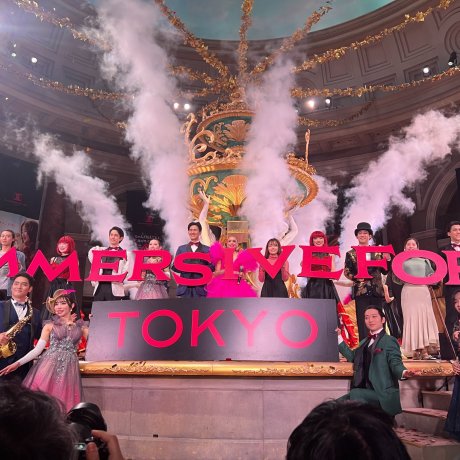
IMMERSIVE FORT TOKYO
Nestled in the heart of Odaiba, Immersive Fort Tokyo is where fantasy and reality intertwine to create an unparalleled entertainment experience. Newly..
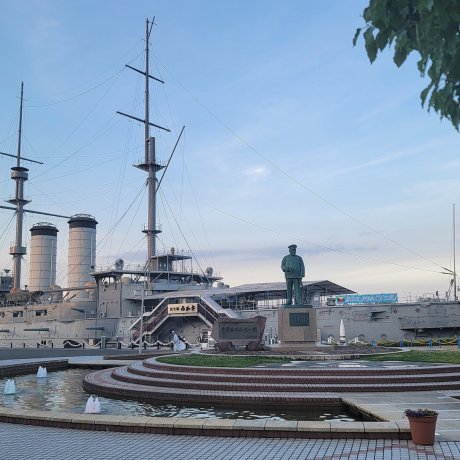
Mikasa Park
Mikasa Park is a destination that appeals to both nature lovers and history buffs, and it has been selected on both the 100 Best City Parks in Japan and..

Nagai Uminote Park Soleil Hill
Nagai Uminote Park Soleil Hill is a fantastic destination for a family-friendly day out, particularly if you're a fan of seasonal blooms. There's..

Nagoya Castle Ruins
Nagoya Castle Ruins—not to be confused with Aichi Prefecture’s Nagoya Castle—is located in Karatsu City, Saga Prefecture. The castle was built..

Den en poteto
Located near Shin-Yurigaoka Station, den en poteto offers a calm, rustic interior space at its bakcstreet patisserie setting. They offer both a lunch..
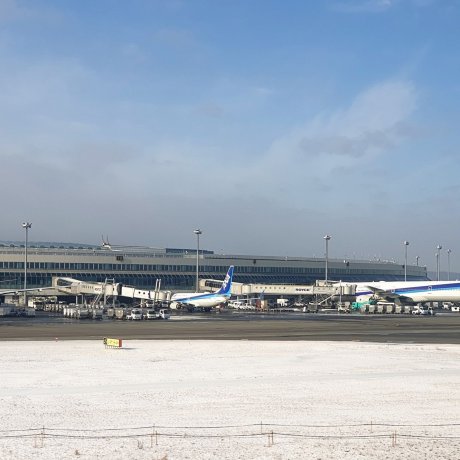
New Chitose Airport
New Chitose Airport serves as Hokkaido’s main international airport and acts as the gateway to the region, thanks to its excellent transit connections..
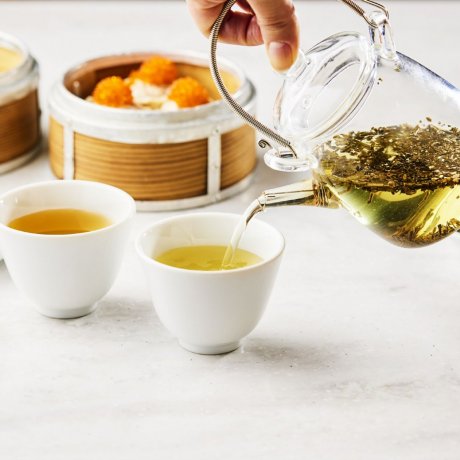
MS. CASABLANCA
Enjoy high-quality authentic Chinese food such as dim sum, congee, and noodles at MS. CASABLANCA. This casual Chinese dining space is chic and comfortable,..
Let us know how we can help.

Japan tourist map
You can find on this page the Japan tourist map to print and to download in PDF. The Japan tourist attractions map presents the monuments, museums, parks and points of interest of Japan in Asia.
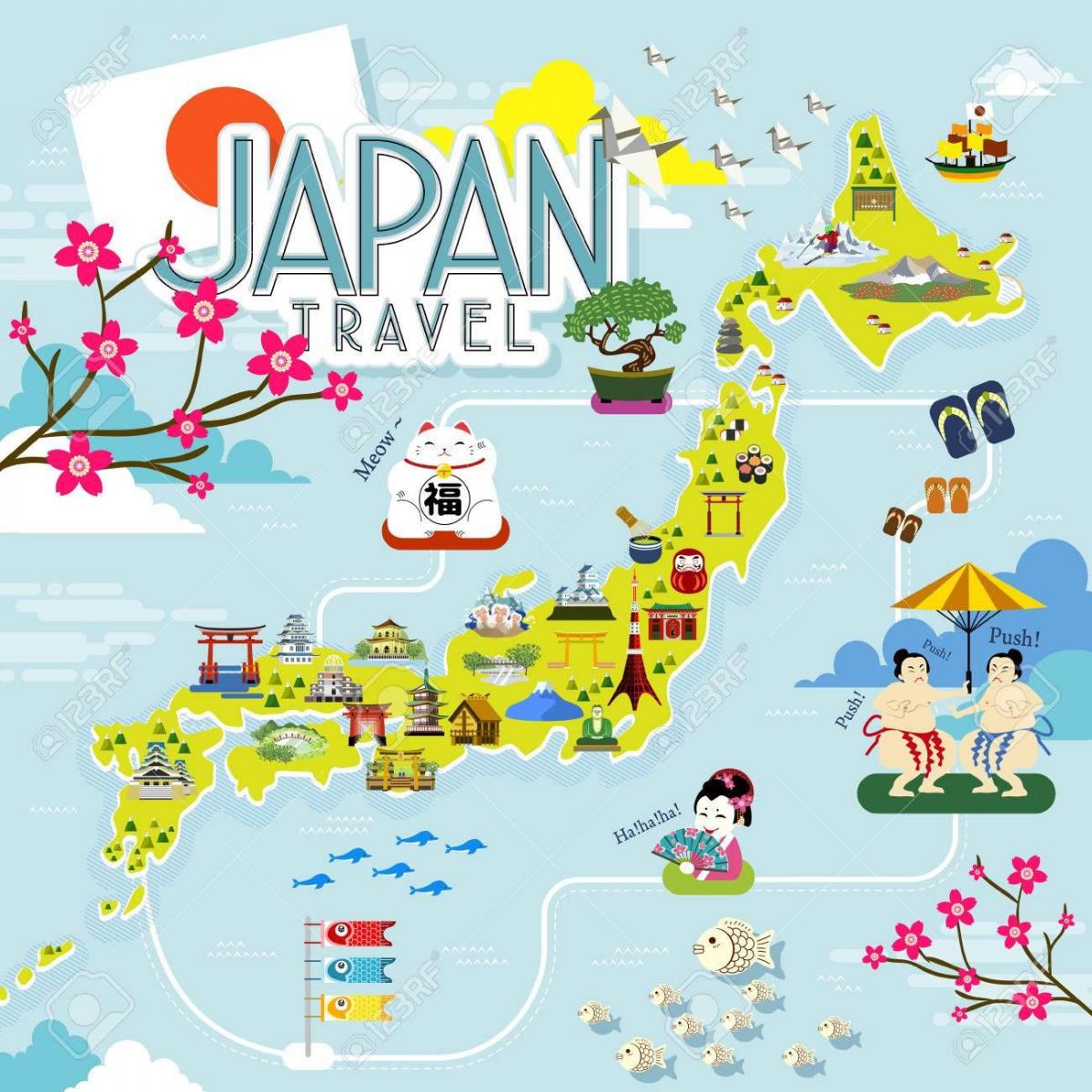
Map of Japan travel
The Japan tourist map shows all tourist places and points of interest of Japan. This travel map of Japan will allow you to easily plan your visits of landmarks of Japan in Asia. The Japan tourist map is downloadable in PDF, printable and free.
Japan is a unique blend of traditional and modern, with many temples and buildings from the past co-existing with modern achievements in architecture and technology as its mentioned in Japan tourist map. Tourists can be immersed in Japanese history and culture one day and get a glimpse of the future through technological developments the next. Almost all of the historical sites are still used for their original purposes while remaining open to the public. The natural beauty of Japan can be seen all year.
Across Japan, tourist will find cultural heritage of the highest international standards. See industry-leading architecture and design, and witness a highly seasonal aesthetic in everything from picture-perfect gardens to departments stores and cuisine. Leave the towns and cities behind, and discover hot spring hamlets in the mountains as you can see in Japan tourist map, white sandy beaches and an array of adventure activities.
In 2019, the number of foreign tourists traveling to Japan amounted to around 31.9 million, an increase from less than nine million in 2010 as its shown in Japan tourist map. The majority of international tourists arrive from East Asian regions, with Korean, Chinese, and Taiwanese visitors in the lead. While the Japanese tourism industry is dominated by the prominence of domestic travels, the growing number of inbound visitors and the steadily increasing tourism expenditure shows the rising popularity of Japan as a travel destination.
Japan attractions map
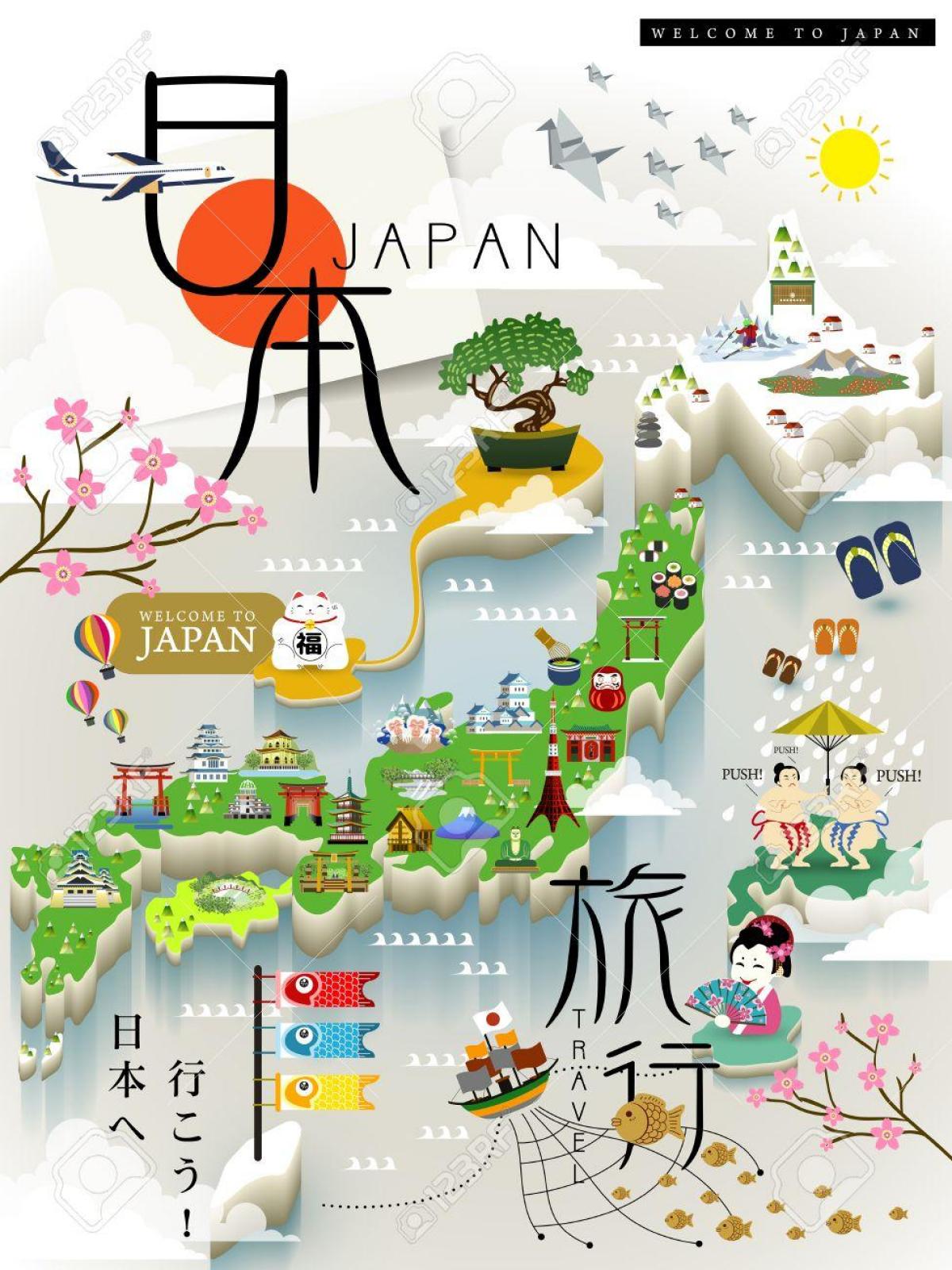
Map of Japan tourist attractions
The Japan attractions map shows all monuments and sightseeing of Japan. This tourist attractions map of Japan will allow you to easily discover monuments, museums ans places to visit of Japan in Asia. The Japan attractions map is downloadable in PDF, printable and free.
Without a doubt Japan most recognizable landmark and attraction, majestic Mount Fuji (Fuji-san) is also the country highest mountain peak. It has for centuries been celebrated in art and literature and is now considered so important an icon that UNESCO recognized its world cultural significance in 2013 as its mentioned in Japan attractions map. Tokyo most famous landmark, the Imperial Palace with its beautiful 17th-century parks surrounded by walls and moats, is a must-see when visiting the nation capital. Visited by more than a million people each year, many from overseas, Hiroshima Peace Memorial Park (Hiroshima Heiwa Kinen Kōen) lies at the epicenter of the atomic blast in what was once a bustling part of the city.
One of Japan most visited cities, lovely Kyoto - one of the few cities in the country to be spared the devastation of WWII - attracts more than 10 million visitors annually. Just a short ferry ride from mainland Hiroshima is the island of Miyajima, famous the world over as Japan Shrine Island. Covering an area of 30 square kilometers in Hiroshima Bay as you can see in Japan attractions map, Miyajima is best known as the home of the Itsukushima Shrine. For centuries the hub of Japanese culture, the lovely unspoiled city of Nara is home to a large number of historic buildings, along with important national treasures and works of art. Built in 1586 by famous Japanese warrior and politician Toyotomi Hideyoshi, Osaka Castle (Ōsaka-jō) was at the time the largest and most important fortress in the country.
One of the country most spectacular attractions is Chūbu-Sangaku National Park in the center of Honshu. Located in the park northern and central regions as its shown in Japan attractions map is the group of mountains collectively referred to as the Hida Mountains, or Japanese Alps. The Atsuta Shrine, in the heart of the city of Nagoya, is the most important Shinto shrine in Japan, and attracts more than five million visitors each year. One of the few surviving examples of the once prolific and majestic hilltop homes preferred by Shoguns and city rulers, Fukuoka Castle (Fukuoka-jō) is one of the highlights of a visit to Fukuoka. Located on Japan northernmost island, Hokkaido, the city of Sapporo offers many things to do for tourists.

The 15 BEST Places to Visit in Japan (2024 Guide)
- Last Updated: January 27, 2024
From seeing a geisha show or walking the famous Fushimi Inari shrine in Kyoto to exploring the bustling metropolis of Tokyo or staring out at Mount Fuji, here’s our list of the best places to visit in Japan.
Japan is a close-knit island nation that is known for its beautiful cities, unique food, amusement parks, temples, shrines, hot springs, and more.
Hidden gems and beautiful palaces are scattered around the country, from tiny villages right up to the commercial areas in Japan, such as Hiroshima, Osaka or Tokyo.
Travellers flock to Japan to see the beauty of cherry blossom season, or to hike Mount Fuji, ski in the Japan Alps, eat delectable sushi, and more.
But there are lots of unexpected things to do in Japan as well.
Character or animal cafés, vending machines offering a vast array of items, and aquariums showcasing rare and unique marine life are just a few of the best and most interesting things you can view while in Japan.
Don’t travel to Japan without reading our ultimate travel guide!

Table of Contents
4) Yokohama
9) hiroshima, 12) fukuoka, 13) kanazawa, 15) okinawa, anything to add to this list of great places in japan, the best places to visit in japan.
Overall, there are so many must-see and must-experience places to visit in Japan due to the nation’s rich history, location, and culture.
If you’re planning a trip, make sure you use this list to make the most out of your travel to Japan.
Tokyo, the capitol of Japan, is obviously one of the best places to go in central Japan. While Kyoto is viewed as the spiritual center of Japan, Tokyo is seen as the most popular, busiest, and most significant city in the country, and there is no question why.
If you are wondering just what to do in Japan, it’s common knowledge that starting in Tokyo would have you covered as a perfect introduction to the country.
Of course, the city is largely commercialised and there are endless activities to do, especially if you are looking for UNESCO World Heritage Sites.
On a clear winter day it is even possible to have views of Mount Fuji in the distance!
It is important, however, to not forget the little things you can visit and explore – from simple and quiet parks to humble and interesting cafés or the occasional shrine or temple.
One unique place to visit in Tokyo would be Neko JaLaLa, a cat-themed cafe that offers more than your usual coffee destination in Tokyo.
There should be no question as to why Tokyo is famous and beloved for its several towers and overall interesting architecture. Buildings like the Tokyo Tower and the Tokyo Skytree should definitely be places on your travel list.
Both structures are known as Japan tourist spots and two of the best places to visit in Japan.
A trip to the Tokyo Tower offers a beautiful and breathtaking view.
The tower lights up beautifully and elegantly throughout the night, which is also a nice touch and a perfect photo scene.
The Tokyo Skytree offers several experiences throughout its tiers, aside from observation and obtaining a beautiful view.
If you are looking for a less-commercialised and more cultural Japan attraction that is located in Tokyo, the Kaneji Buddhist temple is one of the best things you can do.
Complete with intricately designed gardens, hallways, and statues, this temple is ideal for anyone looking for some relaxation time while in Tokyo.
Also consider taking a day trip to see Mount Fuji, the iconic symbol of Japan.
It doesn’t matter if your stay in Japan is for 48 hours or two weeks, visiting Tokyo is a Japan must-see.
READ MORE: Check out our complete guide to the best things to do in Tokyo .

Check out our Japan Vlog on going to a crazy robot restaurant in Tokyo in Japan.
Osaka is a port-based city that is full of interesting museums, attractions, and a fascinating variety of activities for any visitor to Japan.
No tour of the best places to visit in Japan would be complete without a trip to Osaka.
One thing to enjoy about this city is its versatile points of interest, and great opportunities for the Cherry Blossom season.
Whether it be the classic Osaka Castle or a fun amusement park such as Universal Studios Japan, Osaka really seems to have it all.
Dotonbori should ultimately be your first stop due to the influx of street food vendors, arcades, and shops.
After visiting the many wonderful fantasy worlds of Universal Studios Japan, you go go-karting around the streets.
Other popular attractions in Osaka are the beautiful and grand Tempozan Ferris Wheel, the peaceful Expo Commemoration Park, and the educational and intriguing Osaka Museum of History.
You haven’t completed Japan sightseeing until you’ve made your way to Osaka. And from here it is just a short train ride to the famous city of Kyoto.
READ MORE: Check out our detailed guide on the best things to do in Osaka .
If you are looking for elegant cherry blossoms, peaceful Buddhist temples or the occasional Shinto shrine, then Nara is the ideal travel location for you.
Just a short distance from either Kyoto or Osaka, Nara City is the capital of the Nara prefecture and is one of the most captivating and interesting places to visit in Japan.
Shrines surrounded by peaceful, well-kept canals and ponds are a popular sight. As are long the beautiful and friendly deer that roam freely throughout the prefecture – which are one of the most unique things to see in Japan.
It is apparent that Nara might truly be one of the most peaceful, down-to-earth cities in the world.
Nara Park is a central park located within the city that is full of deer that peacefully roam the park. They are a beautiful and adorable sight to visitors.
One staple of Nara would have to be the several palaces, temples, and Buddhist shrines. Todai-ji is a perfect example and is located right in the city of Nara.
This temple is one of the largest in the area, and plays a great role in its history.
Deer are frequently seen in surrounding areas around the temple, which is a nice touch.
By far, the greatest feature with Todai-ji, however, is the addition of the largest known bronze statue modelled after Buddha.
READ MORE: Here’s our ultimate list of things to do in Nara, Japan .

Yokohama is one of the more authentic places to visit in Japan if you would like a taste of Japanese culture, some history, and a tad bit of everything else.
One example of how Yokohama stands out against other popular cities and tourist spots in Japan would be the inclusion of Yokohama Chinatown.
Similar to Dotonbori, the Yokohama Chinatown area is ideal for those who love to experience street food as it is popularly offered and sold throughout the area.
If you are looking to take a quiet and enchanting walk, a stop at the Sankeien Garden in Yokohama couldn’t hurt as well.
A trip through this park can help relax you after a long day of exploring and visiting different streets and locations throughout the city.
The design of the garden is very traditional and reminiscent of older gardens and contains a beautiful pond surrounded by lush trees and shrubs.
One might enjoy viewing the Tempozan Ferris wheel light up at night. And Yokohama offers beautiful fireworks shows available during specific seasons.
Due to Yokohama being a port city for trading, these shows easily take place in Yokohama at the Yamashita Park, and are enjoyed greatly by both tourists and locals alike.
READ MORE: Here’s our brand new article featuring the best things to do in Yokohama .
As Okinawa is known for its glorious beaches, the small town of Hakone is known for the natural beauty of its mountainous terrain, waterways, and hot springs.
By far the most prominent and well-known attraction is Lake Ashi that makes Hakone one of the most fun places to visit in Japan.
The lake paired with other attractions makes Hakone one of the most beautiful and captivating cities to spend some time during your next vacation.
The picture-perfect and relaxing scenery also helps it make the list as one of Japan’s tourist spots. With views of Mount Fuji, Hakone is one of the best places to see and do it all.
Lake Ashi is surrounded by beautiful mountains, which help to compliment the glistening blue water.
The Hakone Open-Air Museum is also another great reason to visit Hakone, as it compliments the feel and aesthetic of the place due to the large collection of creative artwork.
READ MORE: Here’s our guide to the best things to do in Hakone !
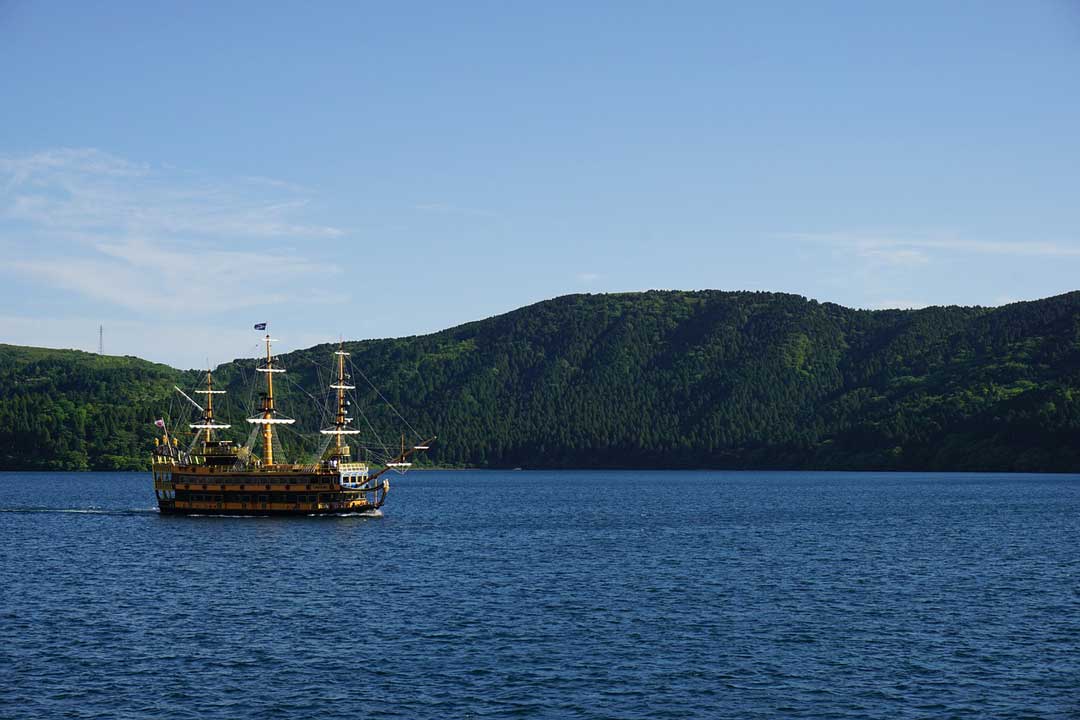
The capital city of Hokkaido, Japan’s northernmost island, is an absolute gem and one of the best cities on our list of Japanese tourist spots.
Whether it’s your first or fifth time to this fascinating country, make sure you spend some time in Sapporo, a metropolis that is buzzing with excitement and culture.
Whether you want to check out Japan’s biggest zoo or visit the marvelous winter snow festival, you’ll find no shortage of attractions here.
It’s also a great jumping-off point for exploring more of Hokkaido, so definitely use it as a base to plan your next moves.
READ MORE: Here’s our travel guide to the top things to do in Sapporo .
With destinations like the Nagoya TV Tower and the Nagoya Castle, this area can easily be compared to Osaka and Tokyo based on the famous and must-see landmarks.
There is even a museum dedicated to science: Nagoya City Science Museum.
This museum may sound a bit general. But its complex and interactive activities help engage and educate visitors and is home to what is known as the world’s biggest planetarium – making it a famous gem of Japan.
Perhaps the highlight of Nagoya and one of the best things to do is to tour the Nagoya TV Tower.
This tower consists of five floors and is a beautiful sight with its glowing appearance during the night.
The sky deck, which is at the topmost floor of the tower, offers a grand view of the city and famous mountains in the area.
The Nagoya Castle is the heart of Japan and another great symbol within the nation of Japan. You wouldn’t be able to miss this elegant structure in Nagoya.
This specific castle stems all the way from the Edo period and is lined with alluring Japanese artwork that is lit and brightened up greatly by the strategically placed windows and shading.
Be careful to not forget the entertainment halls and theatres, so you can enjoy a great concert or show while in Nagoya.
And if you’re looking for views of Mount Fuji then you can add this place to your list. Nagoya offers gorgeous views of the famous Mount Fuji!
READ MORE: Here’s our list of the best things to do in Nagoya .
While there is much to do on the island of Honshu, Kyoto is almost always at the top of the list of places to see in Japan.
Based on the prominent pagodas, the influx of cherry blossoms, and the rich history included, it is no wonder why Kyoto was once the capital of the great nation of Japan.
Due to the extravagant history Kyoto has throughout wars and harsh time periods, castles and unique Japanese structures have come to cover the region.
By exploring Kyoto , you have the choice to learn about Japan, its people and its culture in a very motivating, intriguing, and interesting way.
Geishas are also a prominent entertainment force in Kyoto, making it one of the best places in Japan to view a show.
The Sento Imperial Palace is a peaceful palace that offers a tour that is free and is a fantastic way to discover and learn about Japanese palaces and history while exploring the area.
If you are looking to buy some authentic and quality Japanese goods, Kyoto should also be in mind. Many tourists buy keepsakes or tokens from their trip here, as shopping is fantastic.
The Kitano Tenman-Gu flea market is the perfect shop for this as it offers a wide range of products such as intricately designed fans, umbrellas, and yukatas.
Of course, no trip to Kyoto is complete without visiting Fushimi Inari, an important Shinto shrine known for its temple and the thousands of brightly coloured torii gate.
READ MORE: Don’t miss our complete guide to the best things to do in Kyoto !

Recent history hasn’t been kind to Hiroshima, a city that is most famous for having the atomic bomb dropped on it during World War II, completely decimating the city.
But for such a tragic event, Hiroshima has fully rebuilt itself, and today is one of the top selections for where to go in Japan. The Hiroshima Peace Memorial Park is one of the top Japan tourist attractions.
The Hiroshima Peace Memorial Museum, the main feature of Hiroshima Peace Memorial Park, is one of the best known places in Japan. Memorializing a terrible event near the end of World War II, this UNESCO World Heritage Site is one of the more sacred places to visit in the city.
Nearby Miyajima Island is a fantastic place to spend a day and definitely worth a visit. The Hiroshima Castle is sure to wow you as well.
In terms of unique sights and tourist attractions, the Itsukushima Shrine really stands out, literally, by rising out of the water.
Don’t let the idea of a crumpled city stop you from visiting – Hiroshima is truly an incredible spot to explore.
READ MORE: Check out our complete guide to the best things to do in Hiroshima.
When visiting Kobe, on the island of Honshu, trying their world-famous beef is a must. You can even have it along with Ramen or other traditional dishes.
Kobe could perhaps be the food destination highlight of your trip finding the best places to visit in Japan, aside from Dotonbori.
Another street to visit in Kobe would be their version of Chinatown, which offers another great opportunity to try street food.
The Kobe City Museum is also a great way to explore the great city of Kobe and its history.
Kobe’s most popular harbour known as the Kobe Harborland is the best outdoor hub for entertainment and shopping alike.
The harbour even boasts a beautiful Ferris wheel that adds a nice touch. If you are searching for a more scenic addition in Kobe, you must visit Mount Rokko. Although it pales in comparison to Mount Fuji, there are great trails and scenery to enjoy.
This landmark is favoured both by tourists and locals, and is unique in its structure when compared to various other mountains scattered throughout the great nation of Japan.
Kobe is also located near Himeji Castle, which in and of itself is a top location in Japan. Take a day trip from Kobe to the famous grounds of Himeji Castle!
READ MORE: Here’s our guide to all the top things to do in Kobe !
Otaru doesn’t always make the list of places to visit in Japan. But its canal scenery is so romantic it could even rival that of Italy.
Different vendors and stores offering a vast array of Japanese goods paired with various restaurants help to make the canal a must-stop destination.
Aside from the canal, be sure to enjoy a wonderful experience and performance at the Otaru Music Box.
The Otaru Aquarium can help finish off your trip with some educational facts and a great view of various marine life.
READ MORE: Check out our complete guide to the best things to do in Otar u
Fukuoka is a fantastic city on the Kyushu island of Japan, and well worth a visit on your next trip to Japan.
With great surfing opportunities, a fascinating samurai history and plenty of sumo wrestling matches to check out, you’ll be amazed at all the great things to do in Fukuoka.
READ MORE: Here’s our guide to the top things to do in Japan
Kanazawa is located on Honshu Island and bordered by the Sea of Japan. Deriving its name from “marsh of gold” after legend claims a potato farmer dug up gold instead of potatoes in his field one year.
Kanazawa Castle is the city’s most notable feature and one of the best places to visit in the city. It stands tall among various other buildings that were surprisingly spared during bombings in WWII.
The original castle was destroyed in a fire in 1888. But the existing castle still stands after being rebuilt.
Kanazawa is also known for its Edo-period architecture, temples, geishas and cuisine. You can’t go wrong to add Kanazawa to your list of places to visit in Japan.
READ MORE: Check out our complete guide to the best things to do in Kanazawa.
Tohoku is located northeast of Tokyo on the island of Honshu. Very much off the beaten track for most travellers, Tohoku makes the list of best places to visit in Japan for its simplicity and relationship with nature.
Those who travel here know Tohoku for its spectacular coastlines, inviting natural hot springs and intricate cave systems. It is also a great place to see some of the best cherry blossoms in Japan – without all of the crowds you will find elsewhere.
And if you are into studying where modern history meets science, Tohoku is the jumping-off point for exploring the impact of the 2011 tsunami, most notable for it’s destruction of the Fukushima nuclear reactor.
No doubt if you are looking for a place where fewer travellers visit, particularly in spring, then you absolutely must add Tohoku to your list of places to visit in Japan!
Okinawa is Japan’s most tropical island and definitely one of the more unique places to visit in Japan. Surrounded by beautiful beaches and crystal blue ocean water, Okinawa City is a paradise for people of all ages.
A variety of restaurants are scattered all throughout the city, which is perfect if you plan to have dinner and see a show.
Koza Music Town is perfect for those looking for supreme entertainment and shows.
Besides Koza, Okinawa is simply just a paradise for music lovers due to the many different venues and shows that are offered, especially with the famous bars and clubs scattered about.
The Shurijo Castle is a must-see if you are visiting Okinawa. This palace was dedicated to the Ryukyu Kingdom, and boasts a bright red colour and an intricately paved red walkway leading up to the grand entrance of the castle.
If you’re looking for adventure on your next travels to Japan as well, then Okinawa is the place for you. This island is definitely where to go for surfing, scuba diving, kiteboarding and swimming with whale sharks!
READ MORE: Check out our complete guide to the best things to do in Okinawa .
In conclusion, Japan is a vast island nation that is known for its mountain scenery, unique architecture, cherry blossoms, and booming cities.
While travelling there are so many places to visit in Japan and experience on each island and in each city. But it is important to not overlook the small hidden gems in the rural Japan.
Sites and areas like small traditional villages and temples can really add to your overall experience. Whether you visit castles, Buddhist temples or Shinto shrines, enjoy a hot spring or two or come to see the natural beauty of cherry blossom season you understand why the island of Japan and its people are so special.
Aside from trying food in Dotonbori and shopping in the popular streets and stores in Tokyo, be sure to mark the small villages, historic sites, and grand areas for.
Visit the Hiroshima Peace Memorial, stroll beneath the torii gate of Fushimi Inari in Kyoto and find your favorite shrine or temple in any number of smaller villages and towns.
Do you have anywhere else you’d add to this list? Leave a comment below and let us know your favourite places to visit in Japan!
DISCLAIMER: Some of the links in this article are affiliate links, which means if you book accommodation, tours or buy a product, we will receive a small commission at no extra cost to you. These commissions help us keep creating more free travel content to help people plan their holidays and adventures. We only recommend the best accommodations, tours and products that ourselves or our fantastic editorial team have personally experienced, and regularly review these. Thanks for your support, kind friend!
Gabby Boucher
Hi, We’re Alesha and Jarryd!

We’ve been traveling the world together since 2008, searching for the planet’s best destinations and adventures.
Love Travel?
Sign up for our free weekly newsletter for the best travel tips, ideas and deals!
We respect your privacy. Unsubscribe at any time.
READ MORE...
19 BEST Things to Do in Osaka, Japan [2024 Edition]
The Perfect 3 Days in Tokyo Itinerary
The Best Day Trips from Every City in Japan [2024]
Related Posts
The ultimate sado island japan travel guide [2024], the 12 best things to do in otaru, japan (2024 edition), the ultimate travel guide to nakatsugawa, japan (2024), 8 reasons why you should visit tohoku, japan on your next trip, 22 thoughts on “the 15 best places to visit in japan (2024 guide)”.
Yes I have read this article and very informative article.
Glad you liked the article 🙂
My Granddaughter dream is to go to Japan since she was 11 years old, May 2022 she will be 18 and graduating High School. I want to take her there as a gift to her, because her dream has not wavered, Problem is, I am limited on income and terrified to go to another country, where I know nothing of culture or the language, I understand it is very expensive. Could you give me advice on what we could do to make this memorable for her..without it draining my bank account and where a lot of people speak English. We are country people dont know to much of the outside world, so this will be a culture shock for us. I want to respect their values as well. Any advice will be much appreciated. Food, Places to stay, Sightseeing, cherry blossom, I am leaning on traveling April 4th 2022.
Hi Connie, What an amazing gift. An experience of a lifetime. I am originally from country WA and know exactly what you mean. Japan can be expensive but it also can be reasonable on the budget side. We have an article that has a lot of information that may help you out but I will add a few more tips in. Travel Guide – https://www.nomadasaurus.com/travel-guides/travel-to-japan/ (at the bottom of this article is lots of other Japan posts) Budget – https://www.nomadasaurus.com/budget-travel-in-japan/
There are a lot of people that speck English in the major cities. But menus will be in Japanese sometimes you will find English but the prices may be more expensive. We recommend downloading Japan to English google translate. This will help you out so much. If you are connected to the internet you can hover your camera over a menu and it will translate the writing to English. You can pick up an internet dongle from the airport and have wifi where ever you go for your stay. They can be expensive. Another option is buying an international SIM card. Just check your plan and that there is no extra costs. Your phones plans may charge you international roaming and this will be very expensive. Happened to me in Ireland when I first travelled, costs nearly $1000. I had no idea. Lucky they cut it down but it was a wake up. Transport – I would look into the JR pass. This is a great way to get around the country and you can use it on local transport within the cities too. The train system is incredible and so comfortable. Stops are in English so you can read where you need to get off and at what stop. https://www.jrailpass.com/maps Getting around cities – I would recommend hopping on a city tour or do a free walking tour to get your bearings and ask advice from the guides. The guides would be able to tell you get (and cheap) local restaurants to try. We try to do this in a lot of cities when we first arrive. Getting the public trains are easy enough to get around the cities. Put some maps on your phone or print out a map before you arrive. Food – There are so many amazing stalls. These are the best local food options. They look a little questionable but if it is busy with locals then go there. We ate at a lot of machine meals. This is when you enter the restaurant and choose a meal off a machine, collect your receipt, sit down and a person will collect your receipt and then deliver your meal. These places were great. Do not miss Kyoto and Nara. We really enjoyed these places. The temples, gardens, traditional houses and the culture. When we got off the plane in Japan we went straight to Kyoto and we were so happy we did. Explore Tokyo at the end of your trip. Hope this helps. If you have anymore questions please don’t hesitate to message us. Japan is an amazing country. The people there are so welcoming and helpful.
These are great places for tourism. I must say, your post is like my tour guide now. Thank you for sharing this post with us. Thanks.
Hi Franca, glad you liked the post. Japan has so many wonderful destinations. Have a wonderful trip when you go. Take care. 🙂
Japan has been on our travel bucket list for years now but already planning to visit next year so this gave me a good idea where to go apart from Tokyo and Osaka.
You need to go Julia. I think you would love it. There is so many amazing places to see. We didn’t spend much time in Tokyo and Osaka as we are not city people. We loved Kyoto for the culture. I know it is a city but it did not feel like it. Stay in Gion District if you go. Was amazing. We would get up early and wonder around. Felt like we were the only people there sometimes. Happy planning.
I’m planning a trip to Japan and your blog has been very helpful so far! The first time I was there I mostly went from big city to city, so this time I would like to try smaller towns and your description of Shirakawa makes it sound so lovely. The problem is that Google Maps is showing me two Shirakawa towns! Did you visit the one in Fukushima or in Gifu? Thanks!
Hi Jennifer, sorry about the late reply. This is in the Gifu Prefecture. Thank you for this. I will note it in the paragraph. 🙂
We are heading to Tokyo for the Olympics in July of next year and have a little more than three weeks in Japan with 9 days at the Summer Olympics. We have been to Tokyo and Kyoto before and did most all of the sites that one would, so the timing of this article was perfect as we were looking for more to explore outside of Tokyo and Kyoto next summer after the hustle and bustle during the Olympics. Thanks for giving us a great starting point with the overview of these prefectures. Much Aloha and Kokua for the insight
Hi Dan, so sorry your comment was missed. I know your plans are obviously are cancelled as the Olympics are postponed til next year. I hope you have rescheduled and are still going. If you have time do check out Nakatsugawa. It has a traditional trail. It is beautiful and not far from Tokyo. Check out Sado Island. The coastline and hiking is so beautiful. You can catch a flight down to Oita Island and explore this off the beaten path area. Lots of onsens and great hiking. You do need to rent a car to get around as transport is very limited. Have a great time when you go to Japan.
Truly your shared all these fabulous places are the best for travelling and tourists can enjoy some time with buddies. I also enjoyed myself while I was visiting this kind of places.
So glad you enjoyed your time in Japan. Thanks for reading. 🙂
Thanks for sharing such a beautiful article. It packed of all the information required for the first time visitors and information mentioned above in the article are more than enough gain knowledge about Japan. The article has surely helped me a lot. It would be great if the images of the all places mentioned above were there. Thumbs up for the effort.
Glad we could help. All the best
Thanks for sharing this information regarding travel and tour. I really found this very interesting. And your blog is very useful for us.
Thank you so much. Glad you found the article helpful. Happy travels
I have visiting a few cities in Japan on my bucket list. I shared the blog. The pics are awesome and I enjoyed reading the brief overview of the different cities. I get excited about everything from historical areas, to scenic, and most of all the food. Thanks for the recommendations of Dotonbori and Yokohama chinatown for popular street food.
Thank you so much David. Natalia wrote a great article and made us very jealous. Japan looks like a wonderful place. We are heading there later this year. We can not wait. 🙂
I really like to share your all these adorable images which views very fabulous and cool. I also spent a really good time at ONOMICHI during my last journey and came back with great memories.
Thank you so much. Glad the article brought back good memories for you. 🙂
Leave a comment Cancel reply
Save my name, email, and website in this browser for the next time I comment.
- Media & Industry
- Meetings & Events
- Select Language 简体中文 繁體中文(香港) 繁體中文(臺灣) India (English) Bahasa Indonesia 한국어 ภาษาไทย Tiếng Việt Singapore (English) Philippines (English) Malaysia (English) Australia/New Zealand (English) Français Deutsch Italiano Español United Kingdom (English) Nordic countries(English) Canada (English) Canada (Français) United States (English) Mexico (español) Português العربية Japan(日本語) Global (English)
- India (English)
- Bahasa Indonesia
- Singapore (English)
- Philippines (English)
- Malaysia (English)
- Australia/New Zealand (English)
- United Kingdom (English)
- Nordic countries(English)
- Canada (English)
- Canada (Français)
- United States (English)
- Mexico (español)
- Global (English)
- Fujiyoshida
- Shimonoseki
- Ishigaki Island
- Miyako Island
- Kerama Island
- Tokyo Island
- Koka & Shigaraki
- Hida Takayama
- Ginza, Nihonbashi
- Beppu & Yufuin (Onsen)
- Ginzan Onsen
- Nagasaki Islands

- Kumano Kodo
- Shikoku Karst
- Amami Oshima
- Hachimantai
- Omihachiman
- Aizuwakamatsu

- Diving in Japan
- Skiing in Japan
- Seasonal Flowers in Japan
- Sustainable Outdoors
- Off the Beaten Track in Japan
- Scenic Spots
- World Heritage
- Home Stays & Farm Stays

- Japanese Gardens
- Japanese Crafts
- Temple Stays
- Heritage Stays
- Festivals and Events
- Theater in Japan
- Japanese Tea Ceremony
- Cultural Experiences in Japan
- Culture in Japan

- Local Cuisine Eastern Japan
- Local Cuisine Western Japan
- Local Street Food
- Japan's Local Ekiben
- Japanese Whisky
- Vegetarian and Vegan Guide
- Sushi in Japan Guide
- Japanese Sake Breweries

- Art Museums
- Architecture
- Performing Arts
- Art Festivals
- Japanese Anime and Comics
- Japanese Ceramics
- Local Crafts

- Scenic Night Views
- Natural Wonders
- Theme Parks
- Samurai & Ninja
- Iconic Architecture

- Wellness Travel in Japan
- Japanese Ryokan Guide
- A Guide to Stargazing in Japan
- Relaxation in Japan
- Forest Bathing (Shinrin-yoku)

- Experiences in Japan
- Enjoy my Japan
- National Parks
- Japan's Local Treasures
- Japan Heritage
- Snow Like No Other
- Wonder Around Japan

- Visa Information
- Getting to Japan
- Airport Access
- COVID-19: Practical Information for Traveling to Japan
- Anime Tourism
- Countryside Stays
- Accessible Tourism
- Hokkaido Great Outdoors
- Scenic World Heritage in Tohoku
- Shikoku’s Nature and Traditions
- Southern Kyushu by Rail

- Traveling by Rail
- How to Travel by Train and Bus
- JR Rail Passes
- Scenic Railways
- Renting a Car
- Sustainable Travel in Japan
- Travel Brochures
- Useful Apps
- Online Reservation Sites
- Eco-friendly Accommodation
- Luxury Accommodations
- Traveling With a Disability
- Hands-free Travel
- How to Book a Certified Tour Guide
- Volunteer Guides
- Tourist Information Center

- Japanese Manners
- Spring in Japan
- Summer in Japan
- Autumn in Japan
- Winter in Japan
- Cherry Blossom Forecast
- Autumn Leaves Forecast

- Japan Visitor Hotline
- Travel Insurance in Japan
- Japan Safe Travel Information
- Accessibility in Japan
- Vegetarian Guide
- Muslim Travelers
- Safety Tips

- JAPAN Monthly Web Magazine
- Arts & Cultures
- Nature & Outdoor
- Festivals & Events
- Insider Blog
- Things to do
- Local Guides
- Food & drink
- Traditional
- Hokuriku Shinetsu

My Favorites
${v.desc | trunc(25)}
Planning a Trip to Japan?
Share your travel photos with us by hashtagging your images with #visitjapanjp
Things to Do Discover the full range of amazing things to see and do across Japan
- Things To Do
Find inspiration for your Japan vacation, from sightseeing in the city and cultural immersion in the countryside to top picks and suggested itineraries
Explore by interest.
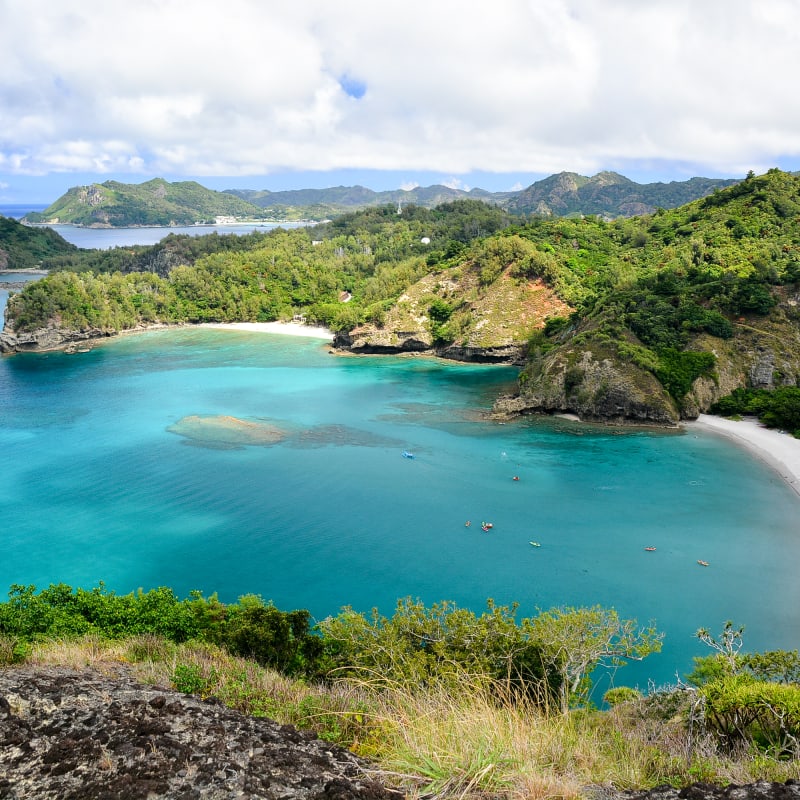
Ogasawara Islands (UNESCO)
Take a trip to the Galapagos Islands of Asia
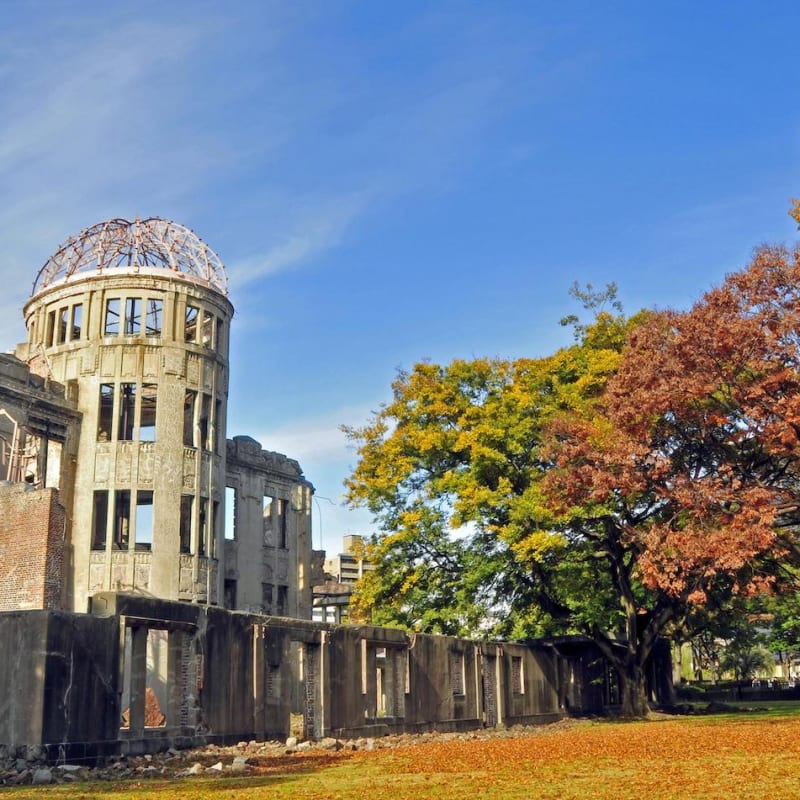
Hiroshima Peace Memorial (UNESCO)
A structural reminder of a painful past
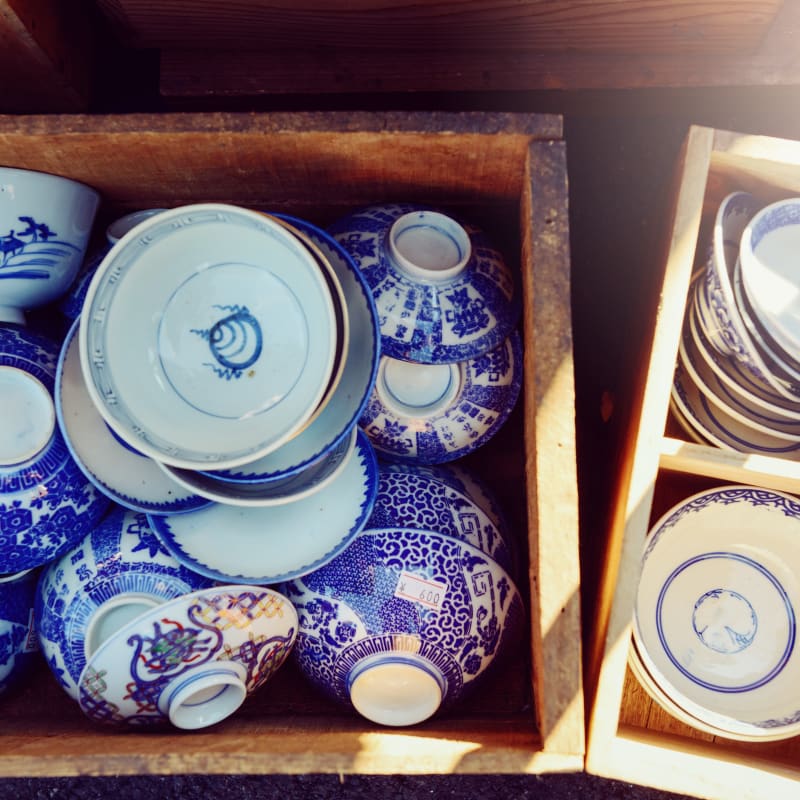
Antiques & Flea Markets in Japan
Setagaya Boroichi Market—Tokyo
Top Recommendations
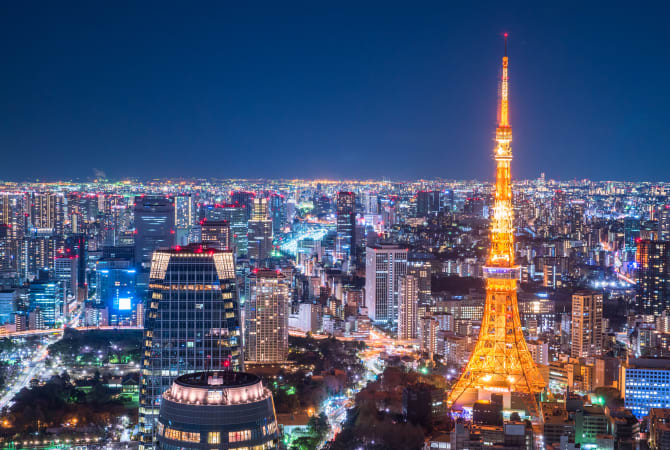
Itineraries
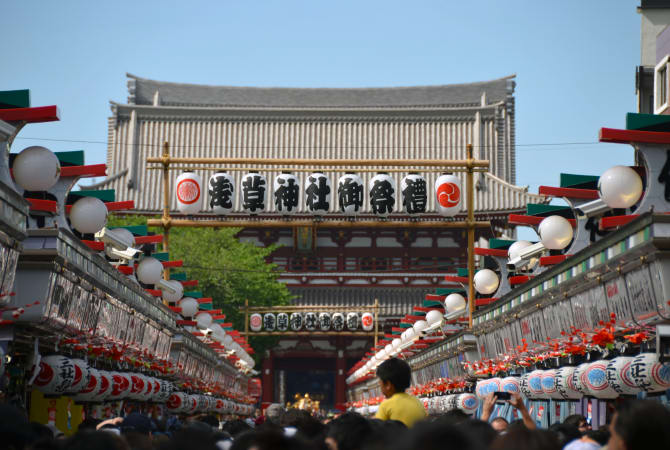
Onsen in Tohoku
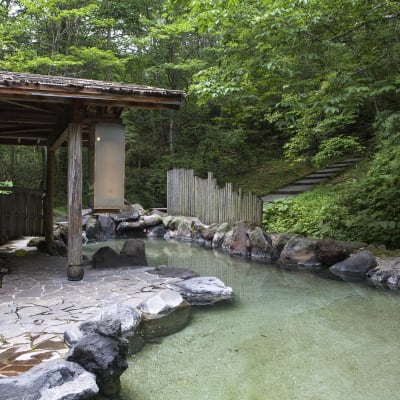
Castles in Kanto
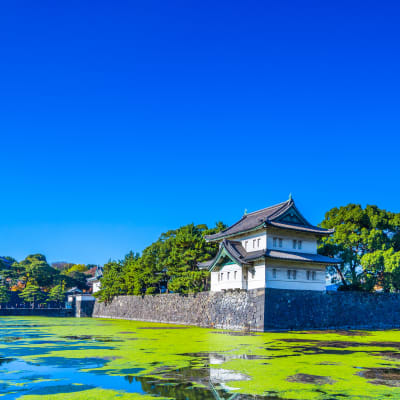
Please Choose Your Language
Browse the JNTO site in one of multiple languages
Japan tourist map
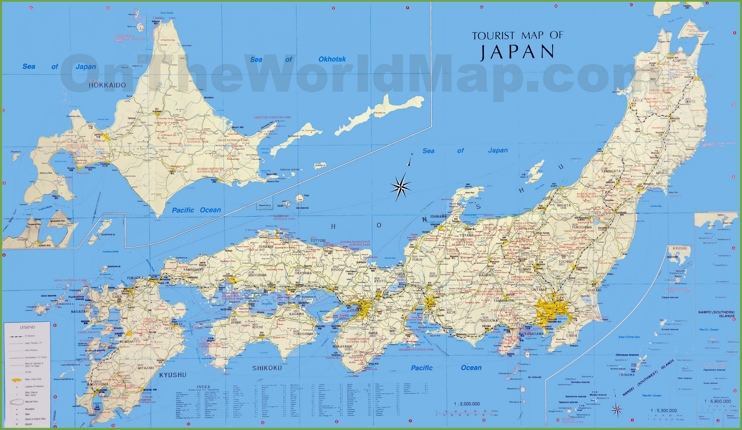
You may download, print or use the above map for educational, personal and non-commercial purposes. Attribution is required. For any website, blog, scientific research or e-book, you must place a hyperlink (to this page) with an attribution next to the image used.
Maps of Japan
Cities of Japan
- North America Map
- South America Map
- Oceania Map
Popular Maps
- Australia Map
- Germany Map
- Singapore Map
- United Arab Emirates Map
- United Kingdom Map
- United States Map
- New York City Map
- Los Angeles Map
U.S. States
- California Map
- Colorado Map
- Florida Map
- Georgia Map
- Illinois Map
- New York Map
- North Carolina Map
- Virginia Map

IMAGES
VIDEO
COMMENTS
Destinations. From the great white north to the sub-tropical south—and everywhere in between. Hokkaido. Tohoku. Hokuriku Shinetsu. Kanto. Tokai. Kansai. Chugoku.
Japan Travel is your official guide for local info and things to do in Japan. Find hotel, restaurant, and tour information with our Japan map or plan your next Japan trip with our tourism guides.
Japan Sightseeing Map
21 Top-Rated Tourist Attractions in Japan
This map includes our top recommendations in Tokyo, Hakone, Osaka, Nara, Hiroshima, Miyajima Island and Kyoto —classic and iconic destinations for your first trip to Japan. In this interactive Google map, we took our knowledge and experience from traveling to Japan 3 times (and counting!) and created over 200 pins with recommendations for top ...
Sightseeing guide for Japan. Mount Fuji The country's most iconic landmark. •• Alpine Route Spectacular route through the Northern Alps. •• Shirakawago & Gokayama Mountainous region, known for its farmhouses. •• Kamikochi Popular mountain resort in the Japanese Alps. •• Kiso Valley Valley with nicely preserved post towns. •• Yamanouchi Home of hot spring bathing monkeys.
11. Ishigaki. Located west of Okinawa, Ishigaki is Japan's premier beach destination and makes a good base to explore the other islands in the Yaeyama archipelago. Blessed with Japan's best beaches, it is particularly popular with families since the beaches at Fusaki and Maezato are net-protected.
Japan Map. Search our regional Japan map using keywords and place names, or filter by region below. Where would like to go in Japan? Find the best attractions, hotels, restaurants, and top things to do with our map of Japan. Search and explore the Japan map by city, prefecture, and region.
Some of the highlights include Toshu-gu, a lavish shrine and the final resting place of the first Tokugawa shogun, and the Buddhist temple Rinno-ji, founded in the eighth century. Don't miss the Yomei-mon, also known as Sunset Gate, one of Japan's national treasures featuring five hundred hand-carved figures.
Our tourist maps The capital of Japan is a must-go to discover the many different aspects of the country. From the trendy boutiques of the Shibuya district to the video games and electronic stores in the Akihabara district, to the calming and relaxing Shinjuku Gyoen National Garden, each district has its own unique atmosphere.
27 Top Tourist Attractions in Japan
10 best places to visit in Japan
Japan, a captivating blend of ancient traditions and modern marvels, invites you to embark on an unforgettable journey.This Japan Tourist Map is your essential companion to exploring this extraordinary country.. Discover Japan's strategic location in East Asia with our detailed Japan location map.Unravel the nation's rich tapestry with our Japan attractions map, highlighting iconic landmarks ...
This Japan bucket list features loads of must-dos in Japan, covering not only the main tourist destinations such as Tokyo, Kyoto, Osaka, and Hiroshima but also has oodles of fun things to do in off-the-beaten-path locations that the vast majority of visitors tend to skip. While you probably won't be able to tick off all 230+ of these epic ...
15) Himeji Castle. Himeji Castle is one of the few original castles in Japan (most were destroyed at some point and rebuilt). It's well worth a visit, especially in cherry blossom season. You can easily visit in half a day from Osaka, Kyoto, Okayama (as we did) or on the way to Hiroshima.
Ghibli Park. Enter a fantasy world filled with serene scenery where you are dropped into a Studio Ghibli movie set. Ghibli Park doesn't host any rides or attractions;.. Aichi ¥2,500. Culture.
The Japan attractions map shows all monuments and sightseeing of Japan. This tourist attractions map of Japan will allow you to easily discover monuments, museums ans places to visit of Japan in Asia. The Japan attractions map is downloadable in PDF, printable and free. Without a doubt Japan most recognizable landmark and attraction, majestic ...
Japan Data. Japan's Top Tourist Destinations Culture Sep 29, 2014. ... Back to map. Sapporo and Otaru. Sapporo Snow Festival (Photo courtesy Sapporo City)
Family Adventure in Japan - 10 Days. Browse our collection of Japan travel maps to find tour & itinerary ideas for your Japan trip. Itineraries include: Guide to Japan's Main Regions, 10 Days in Japan - 5 Unique Itinerary Ideas, 2 Weeks in Japan - 5 Unique Itinerary Ideas, 8 Days in Japan - 5 Unique Itinerary Ideas, and 5 Days in Japan.
5) Hakone. As Okinawa is known for its glorious beaches, the small town of Hakone is known for the natural beauty of its mountainous terrain, waterways, and hot springs. By far the most prominent and well-known attraction is Lake Ashi that makes Hakone one of the most fun places to visit in Japan.
Things to do in Japan
Description: This map shows cities, towns, highways, roads, railroads, airports, mountains, points of interest, tourist attractions and sightseeings in Japan.